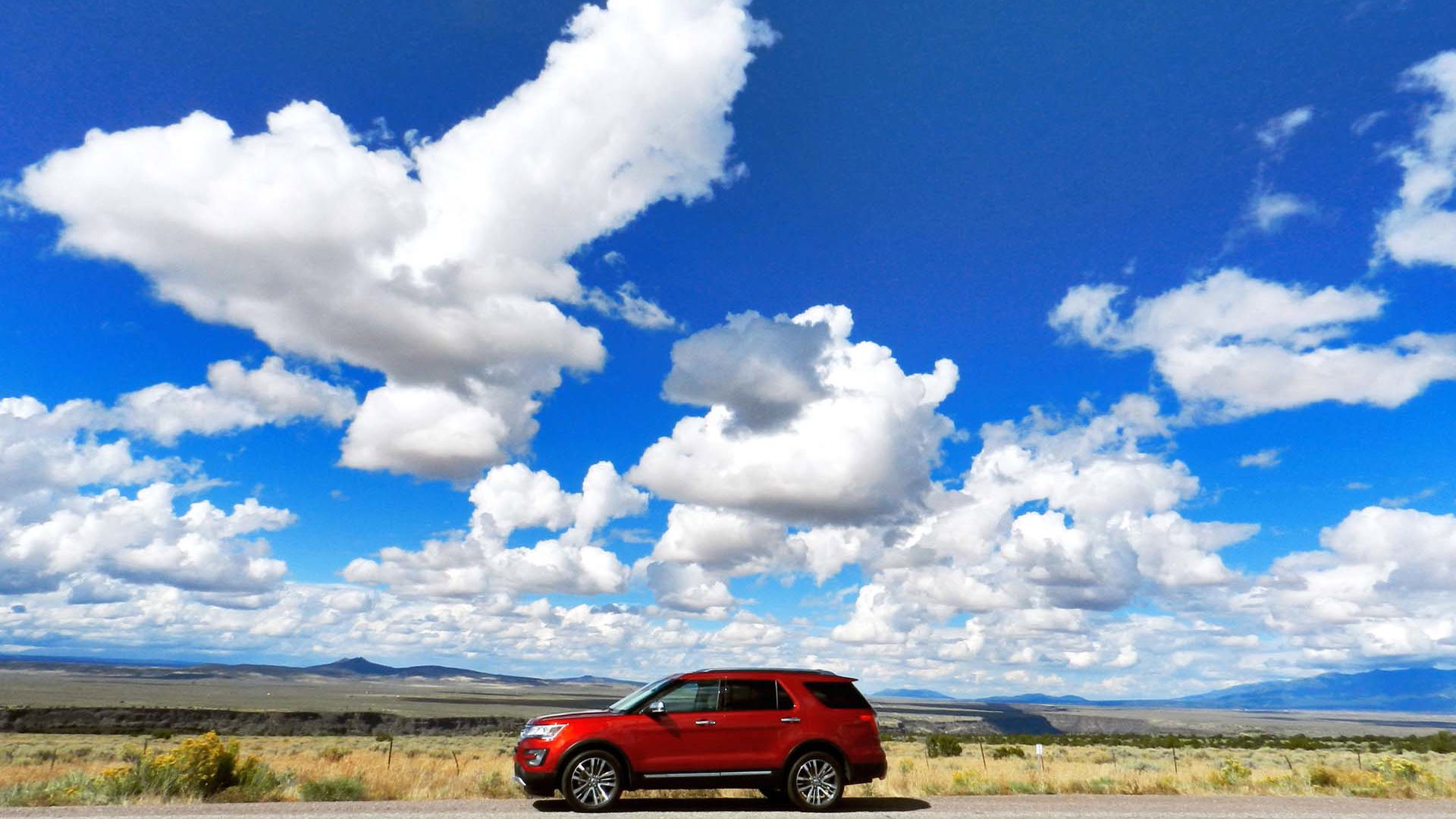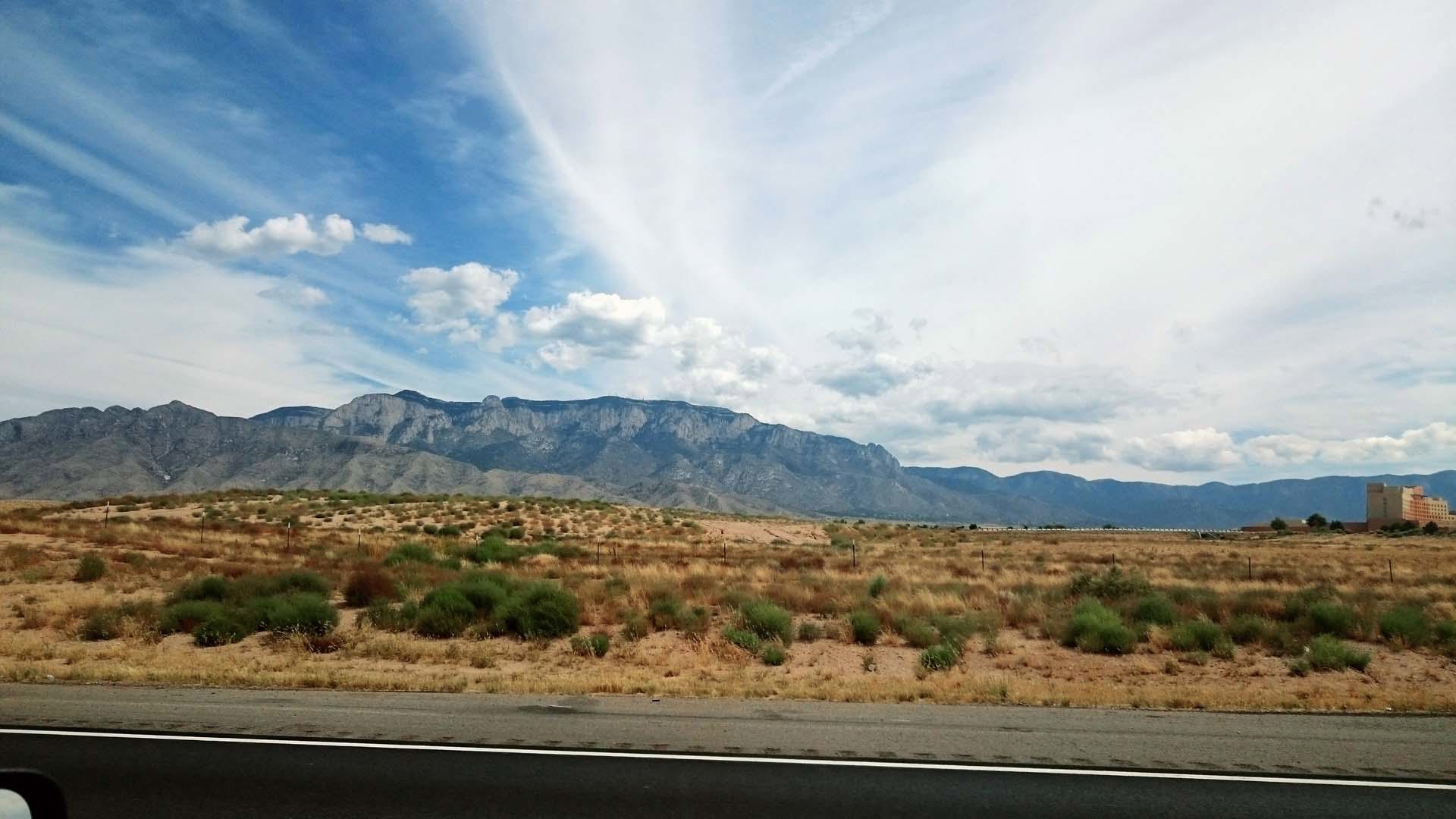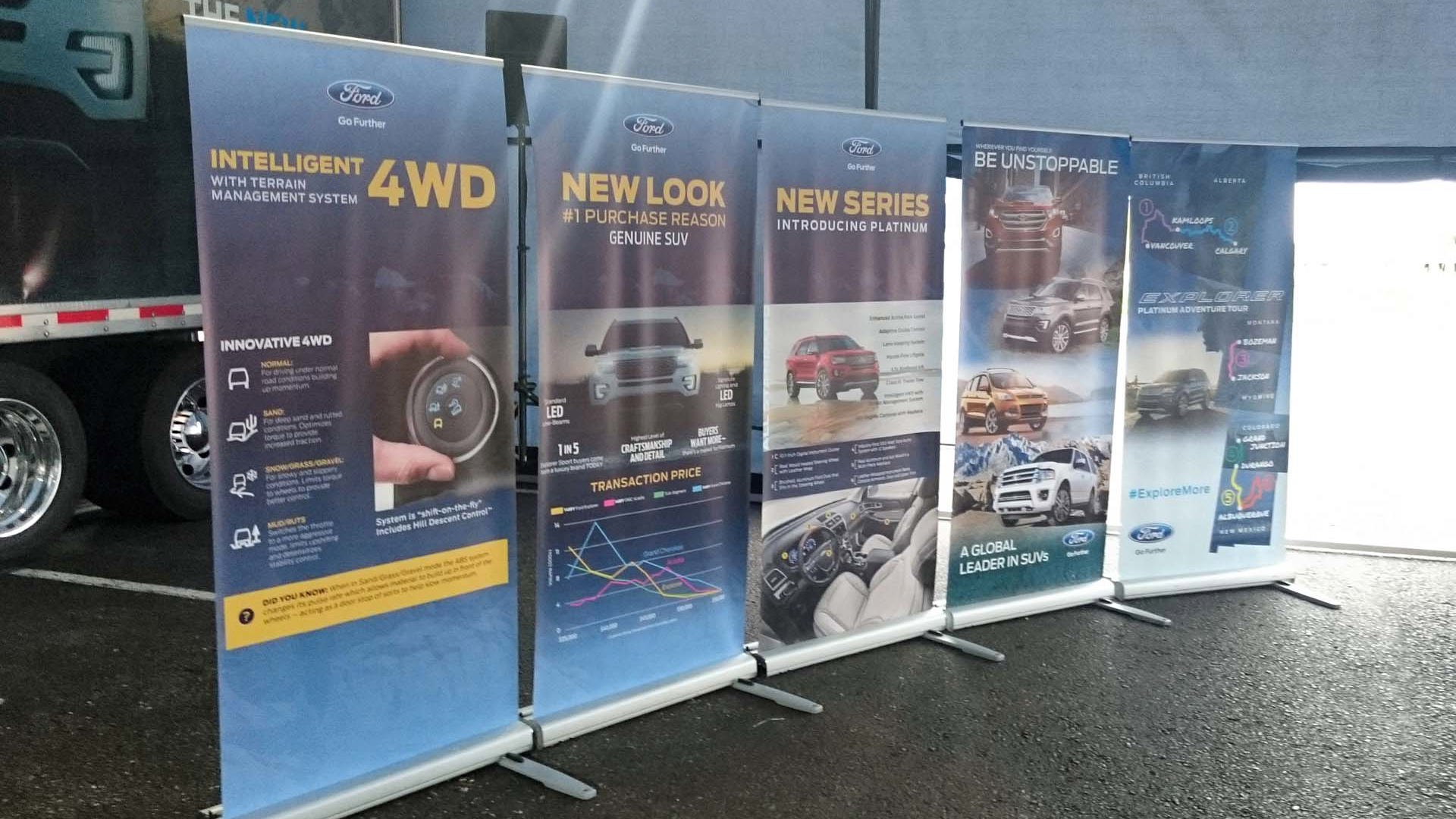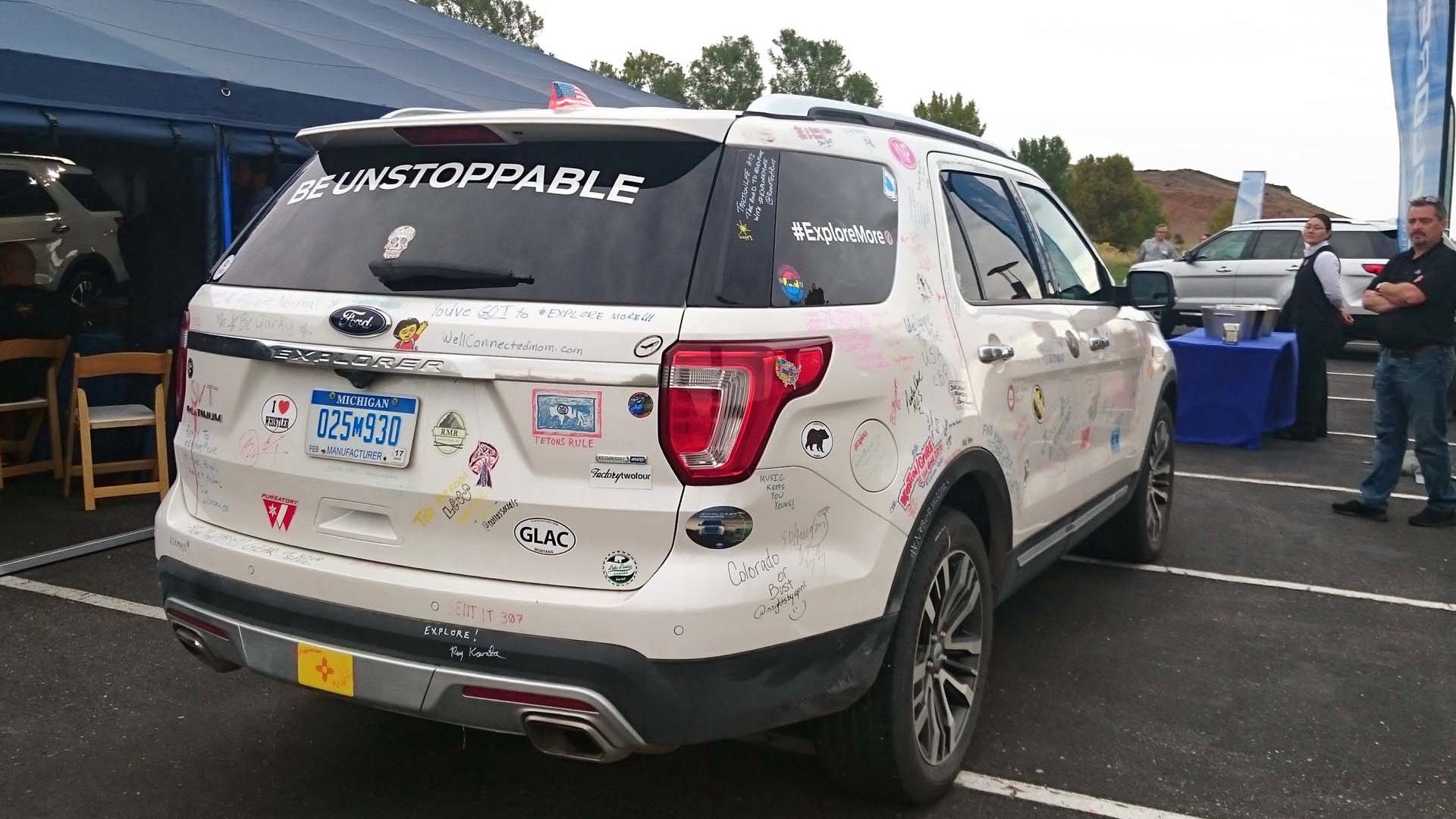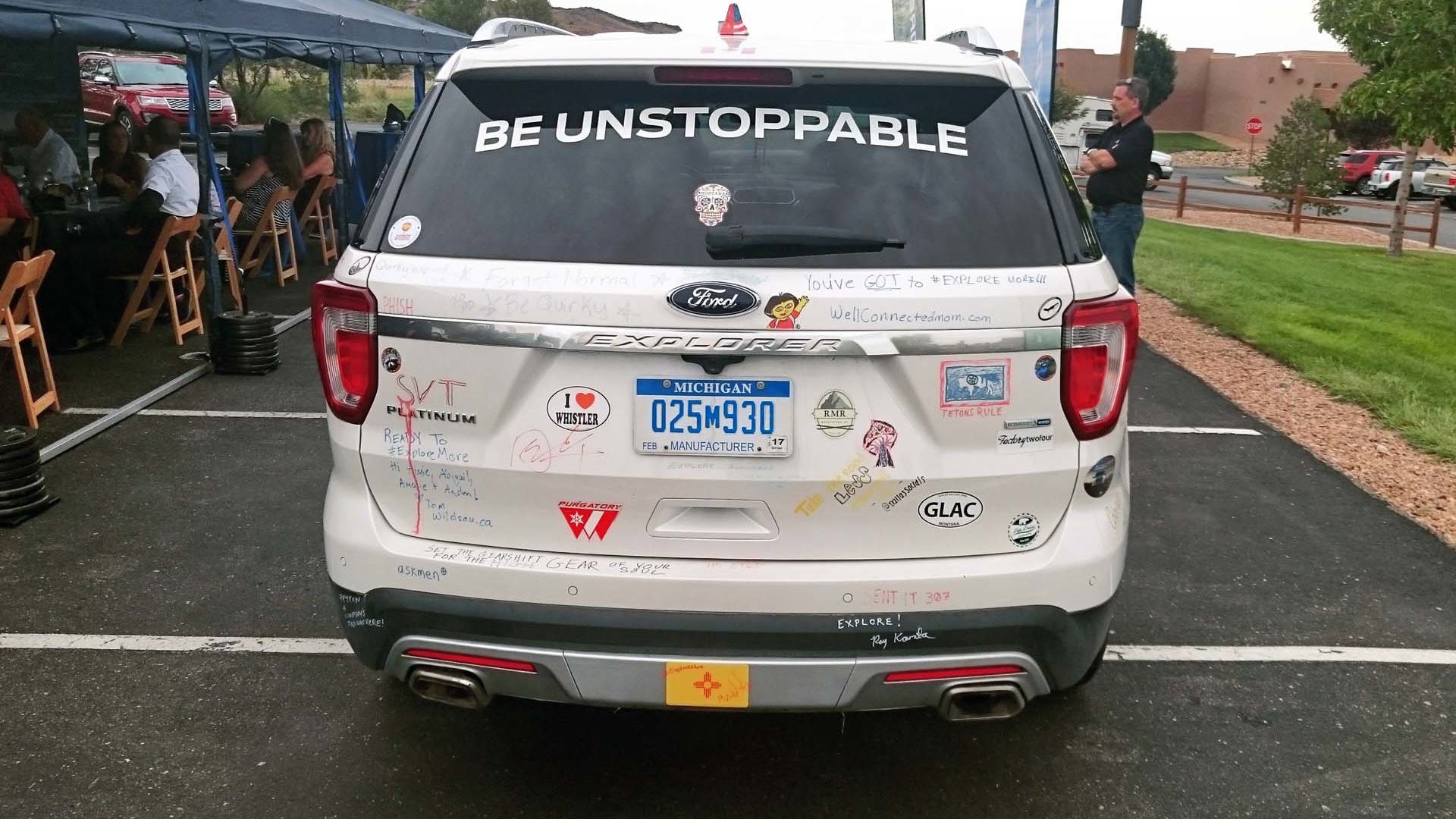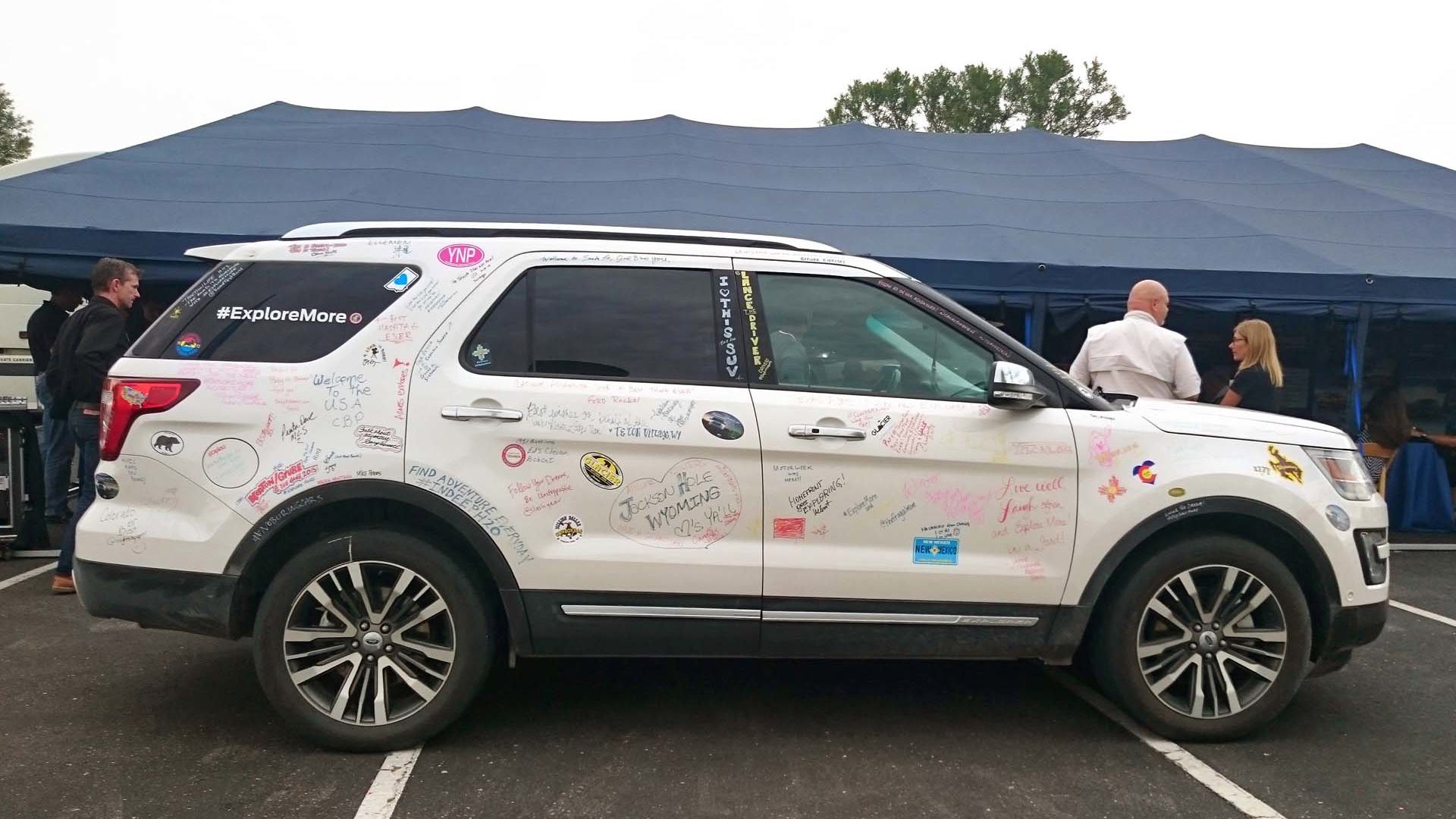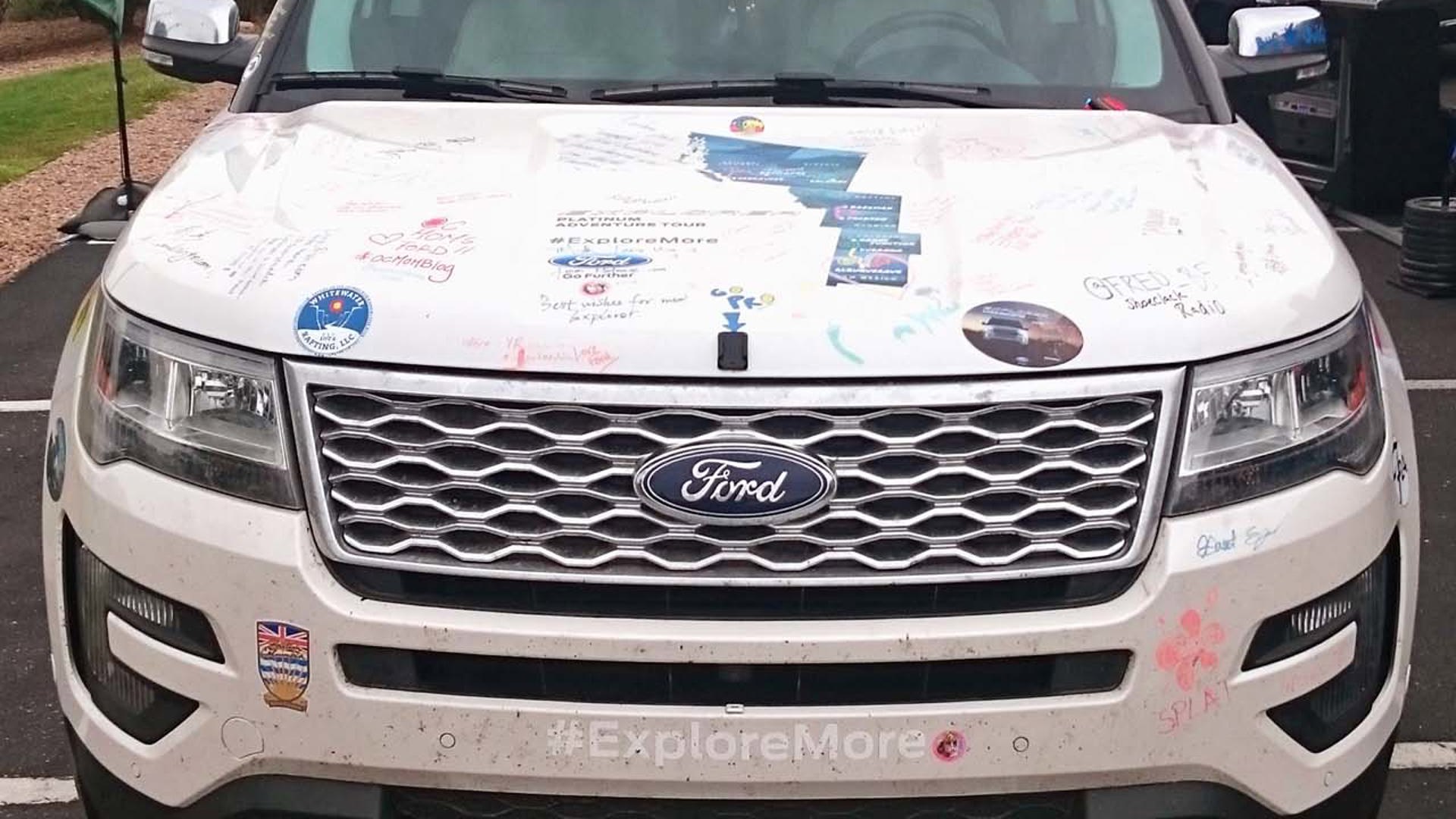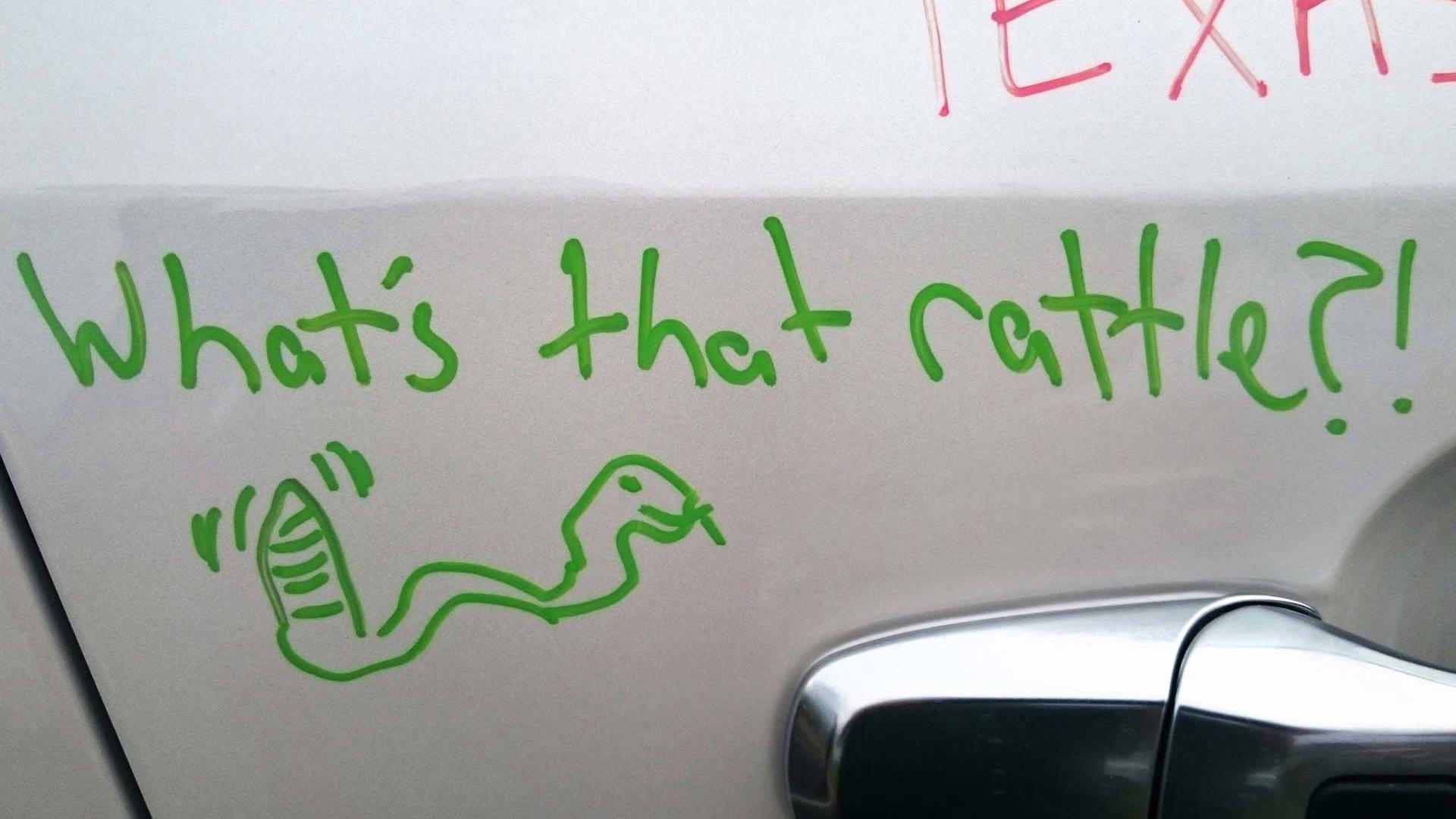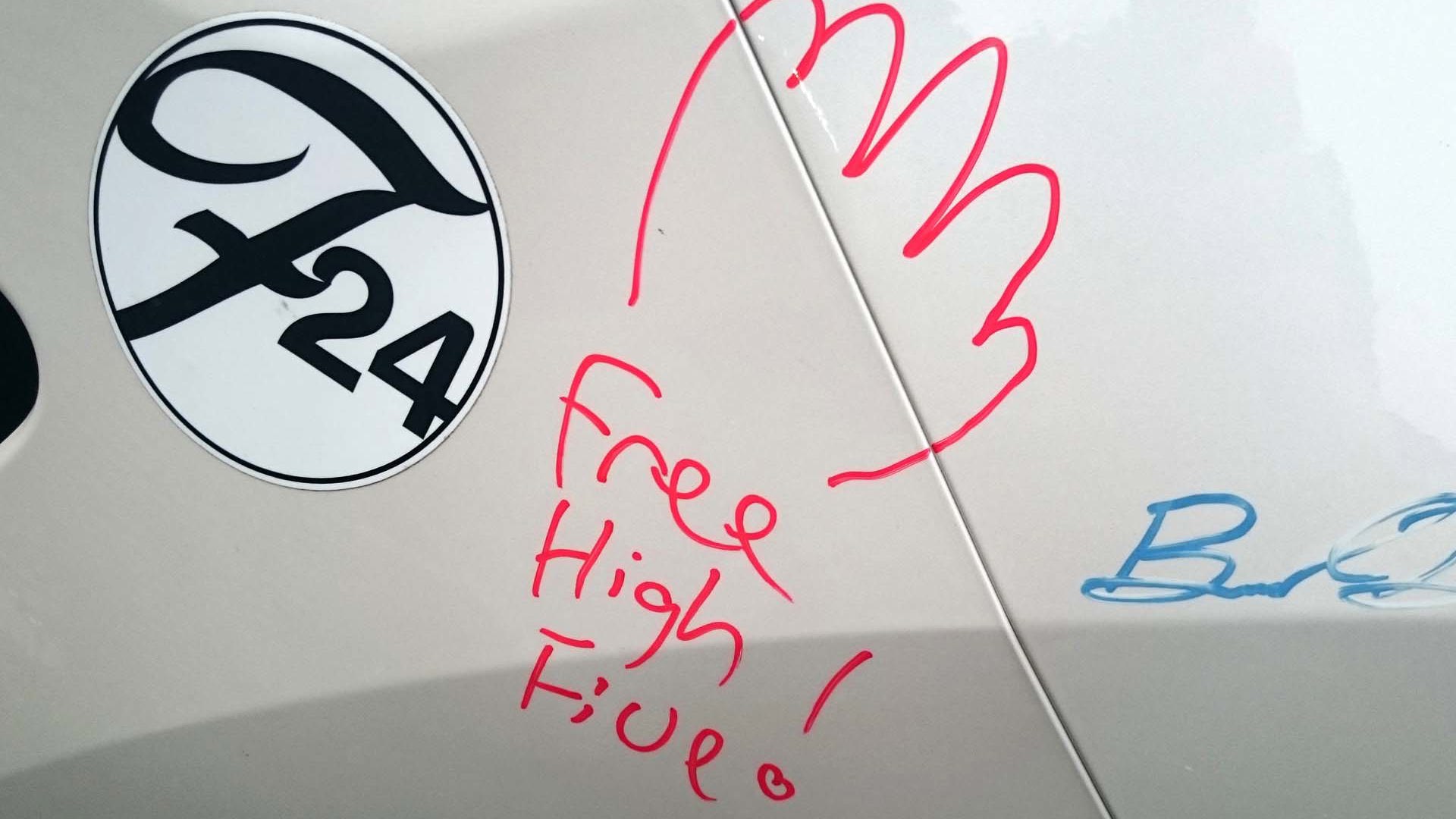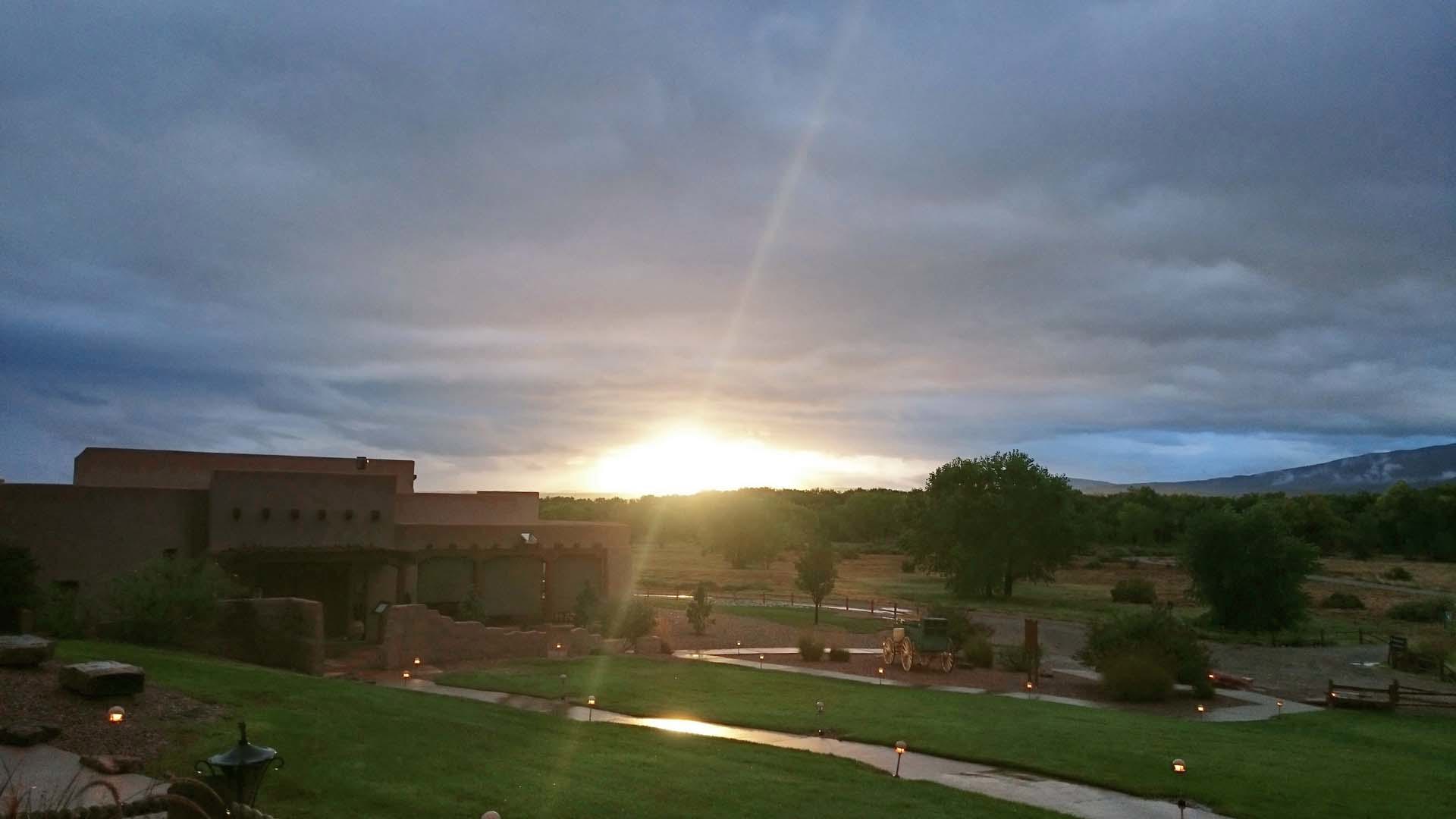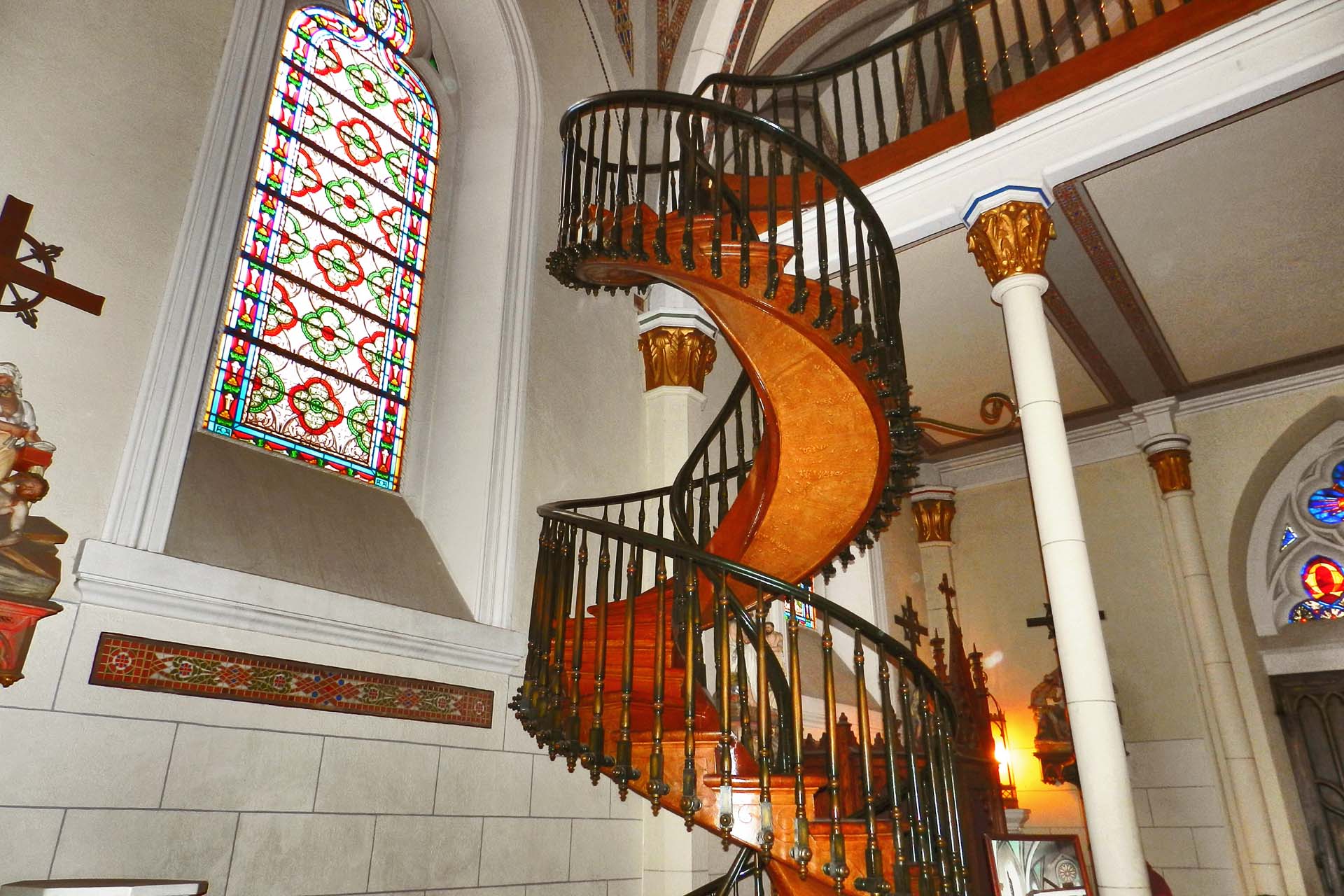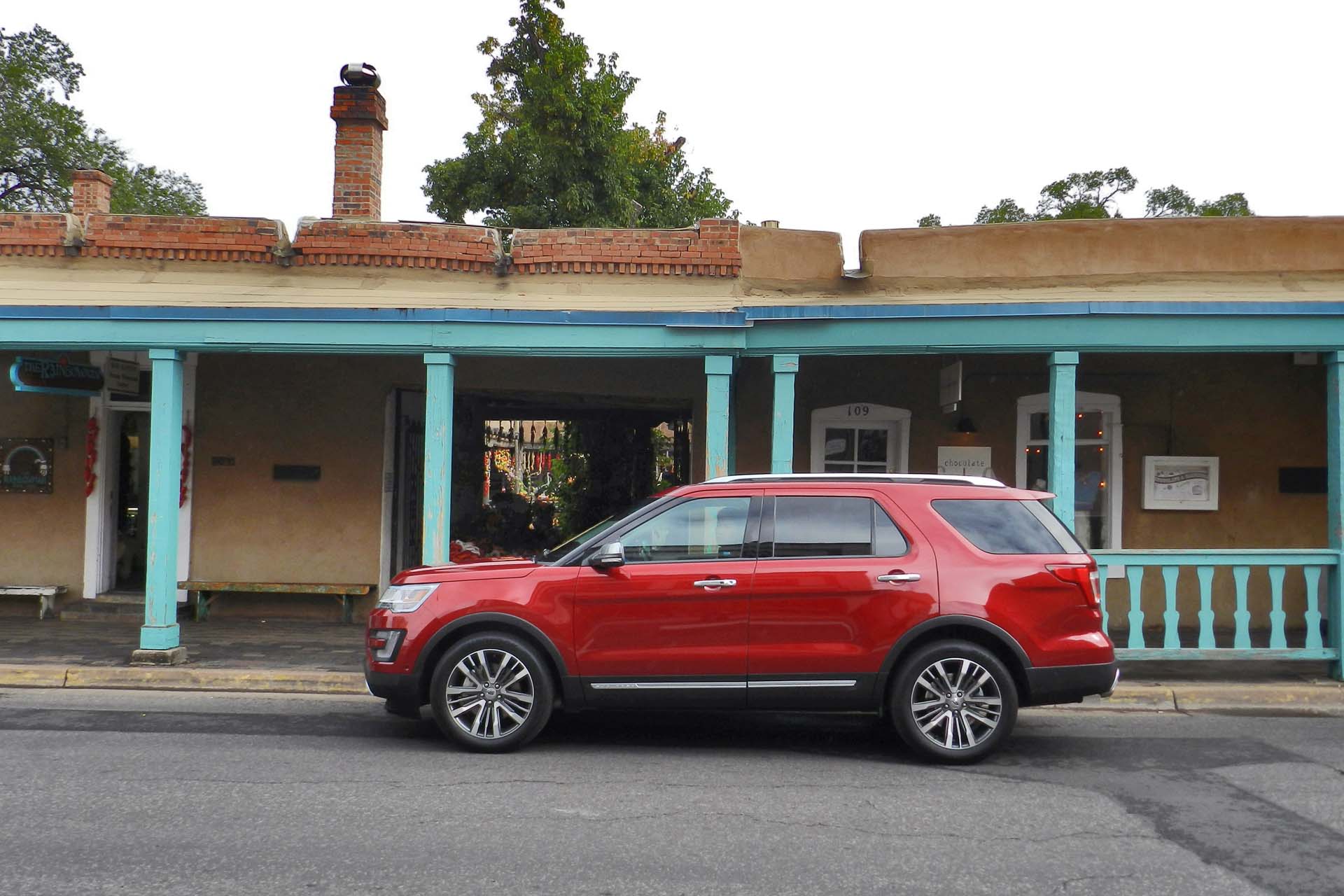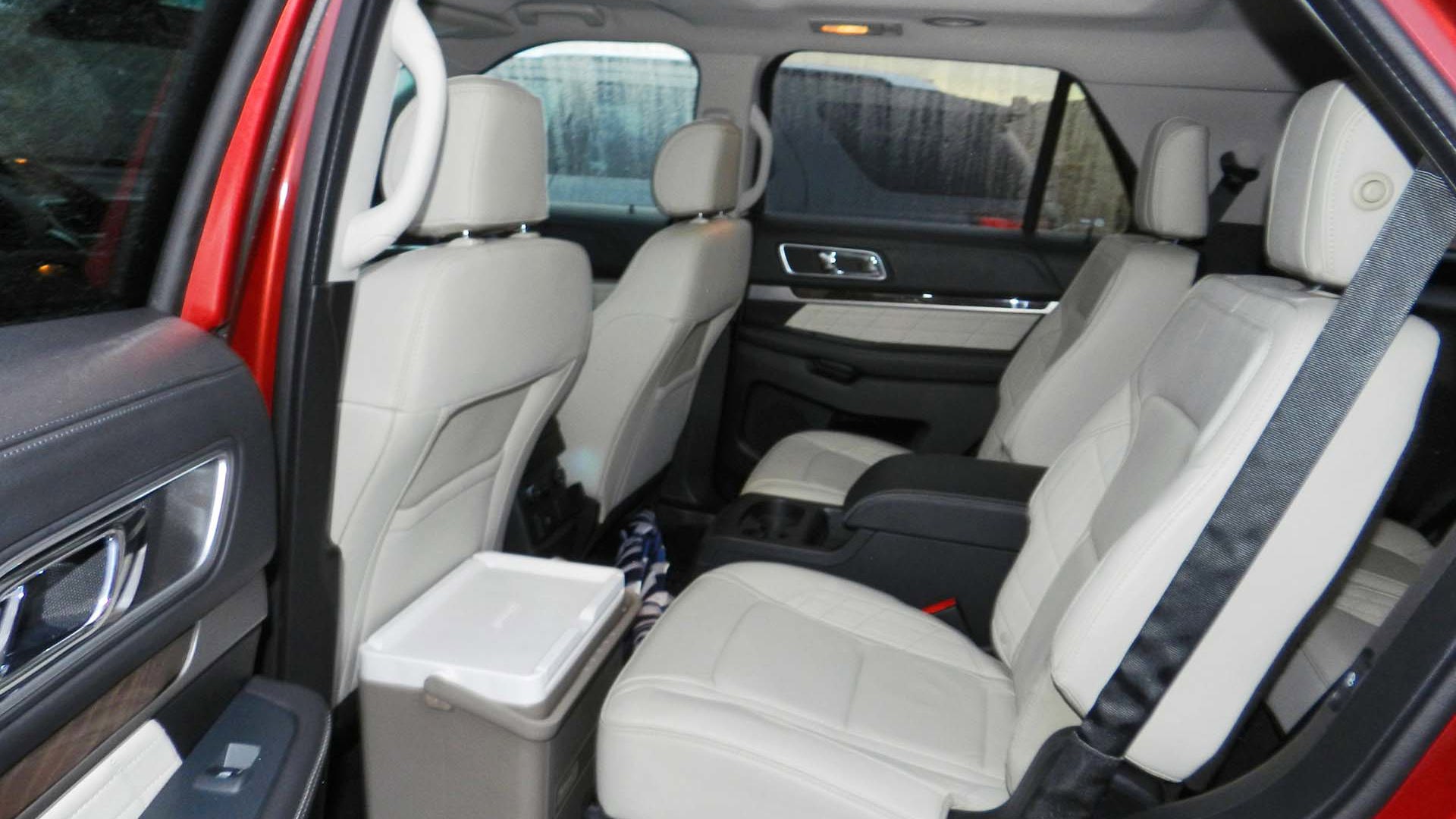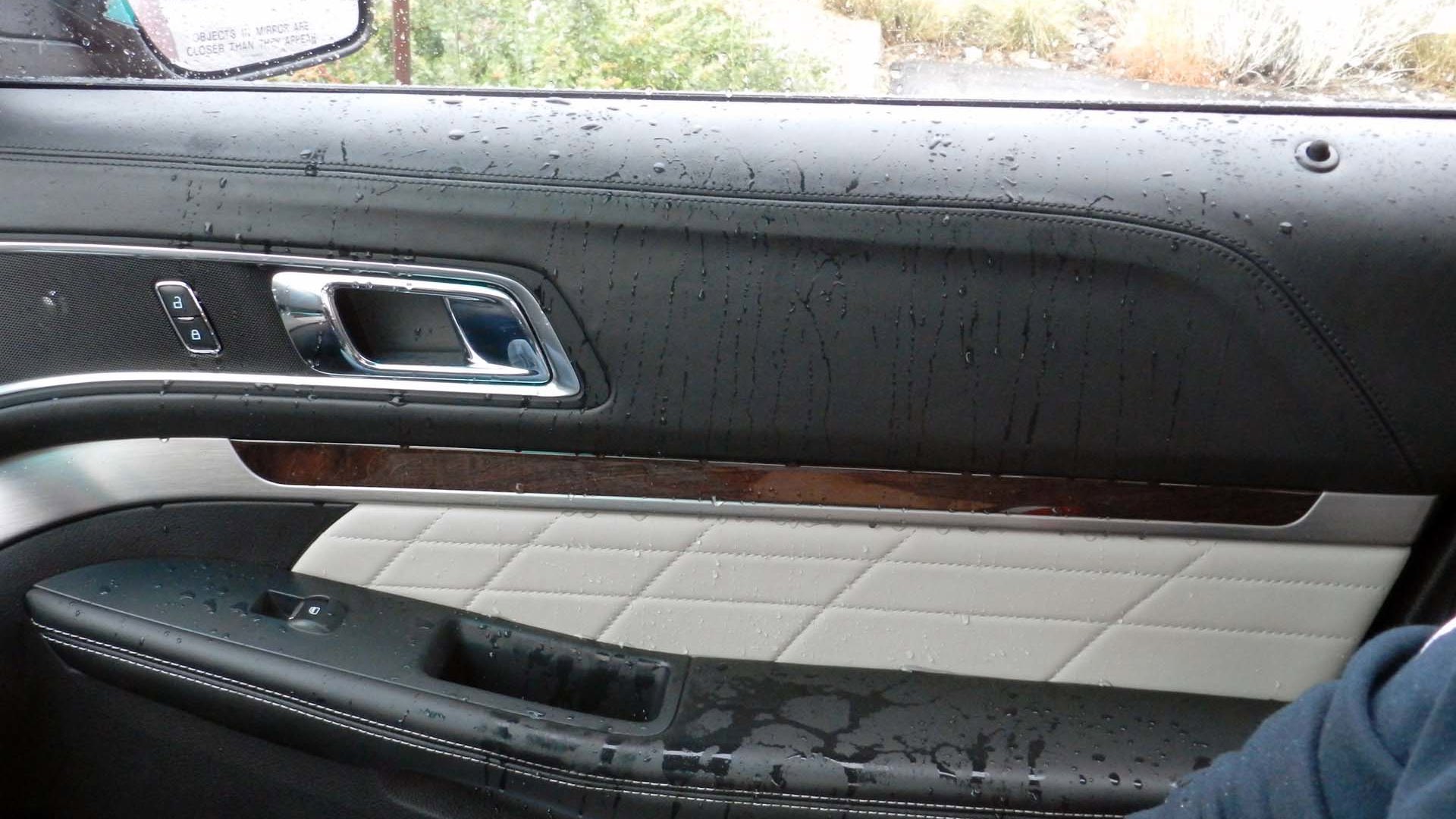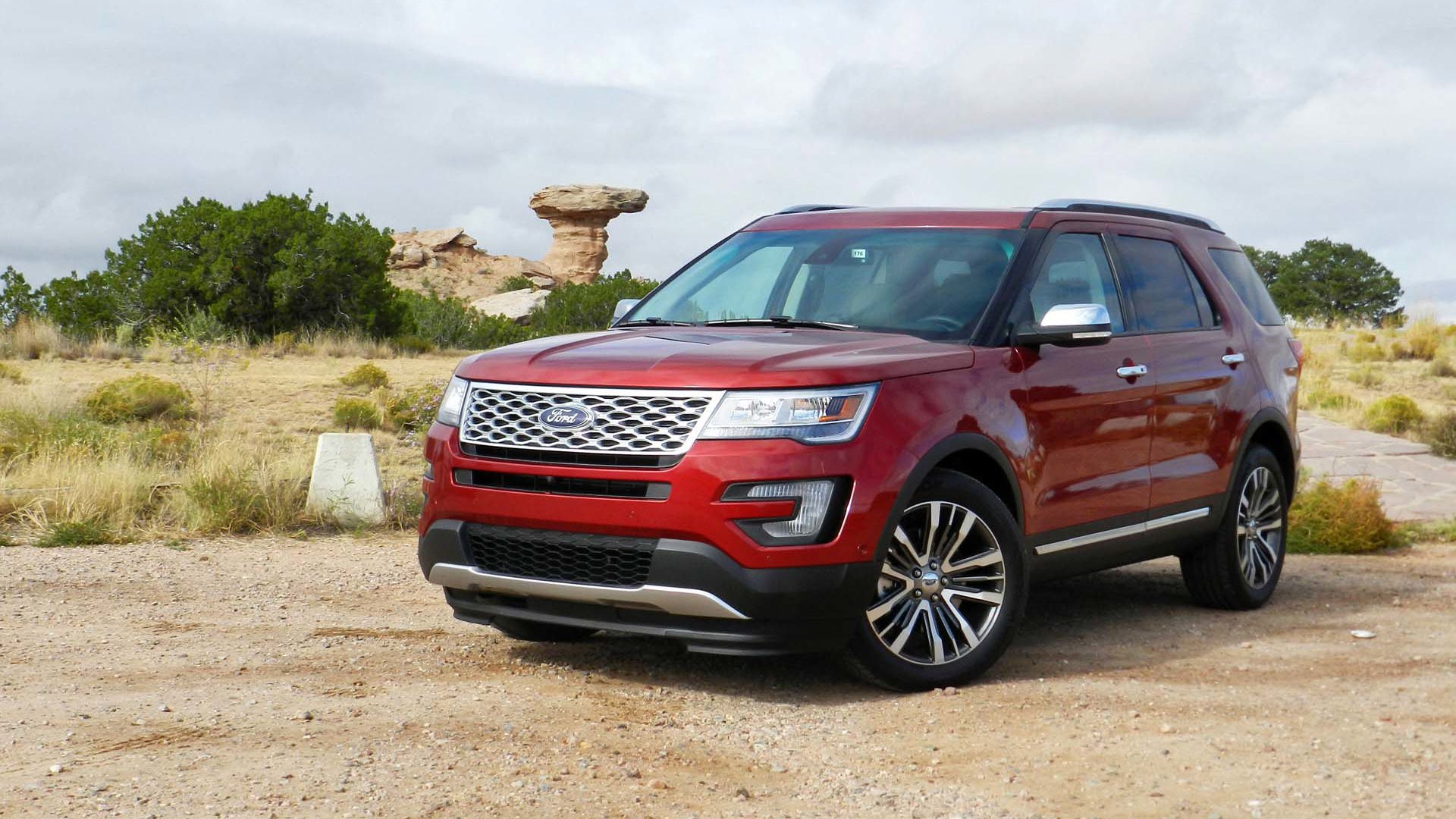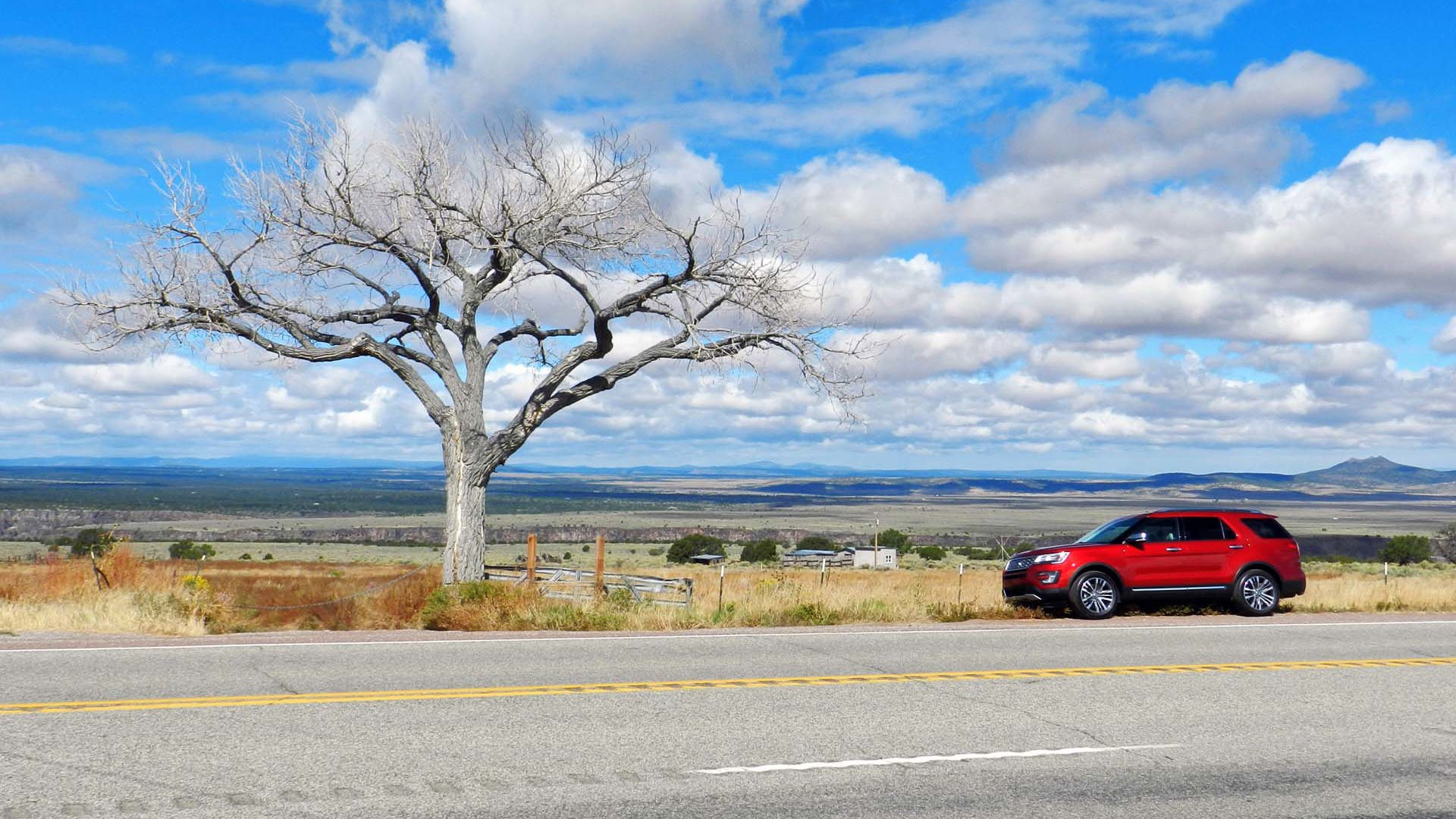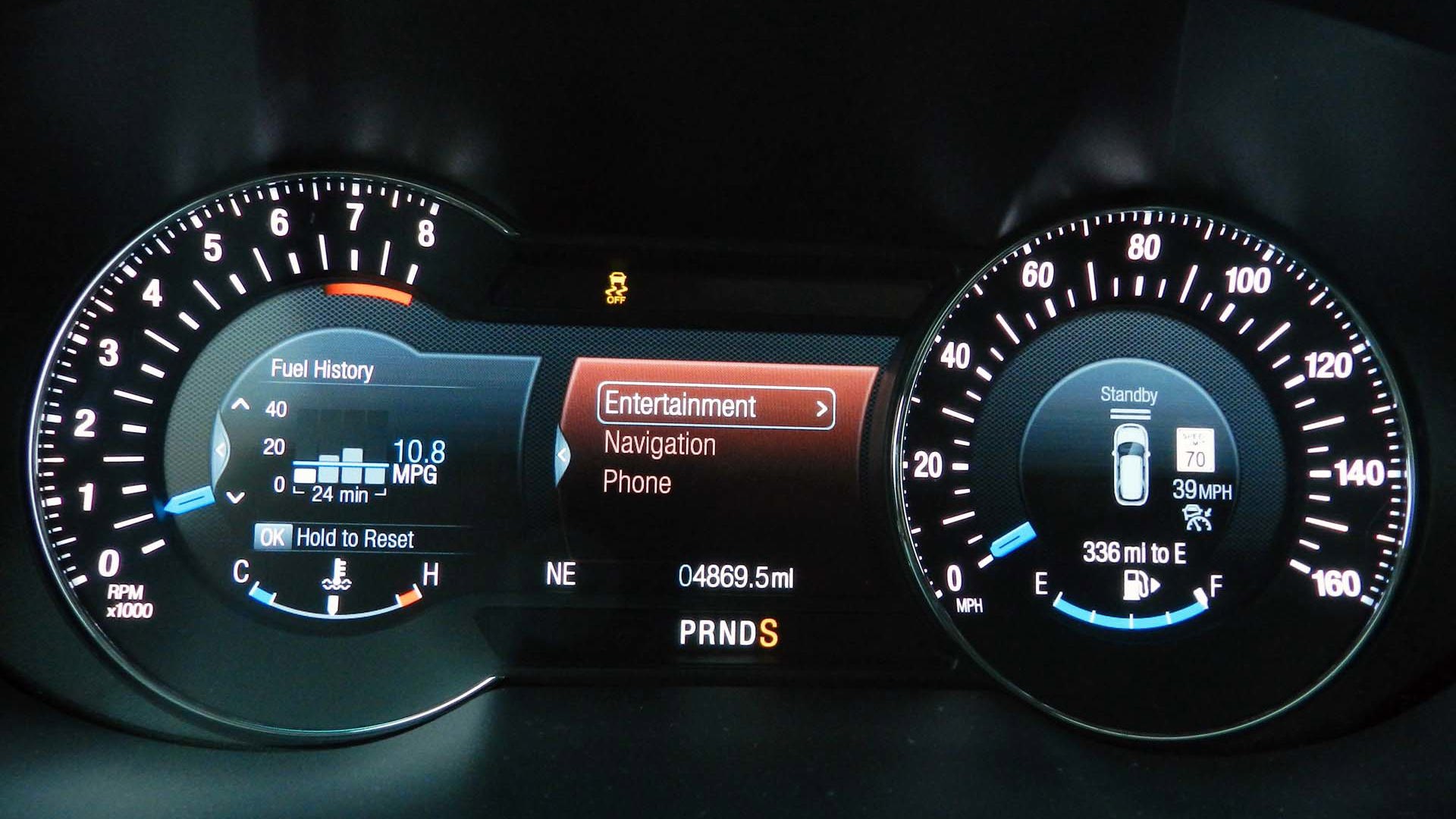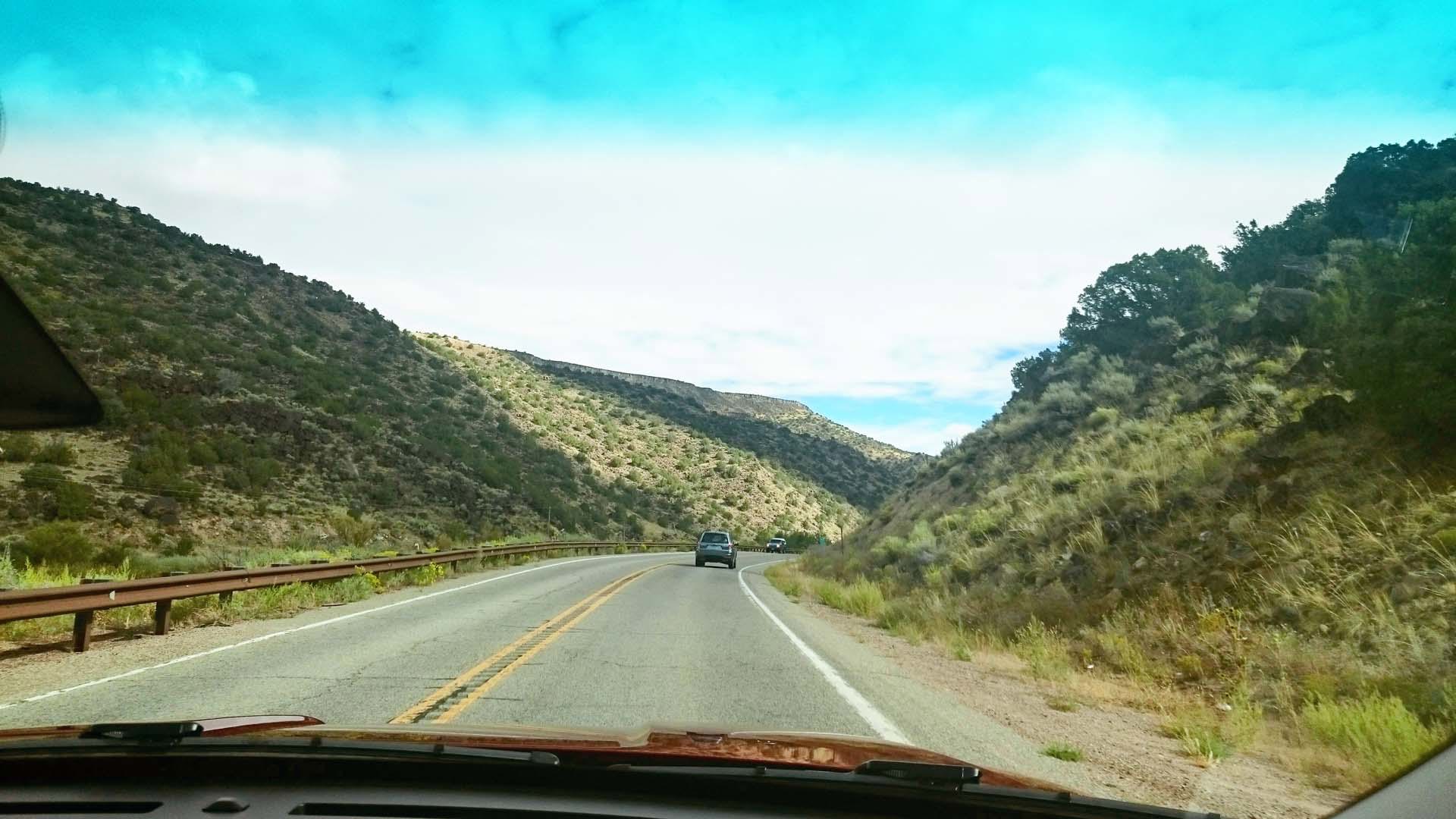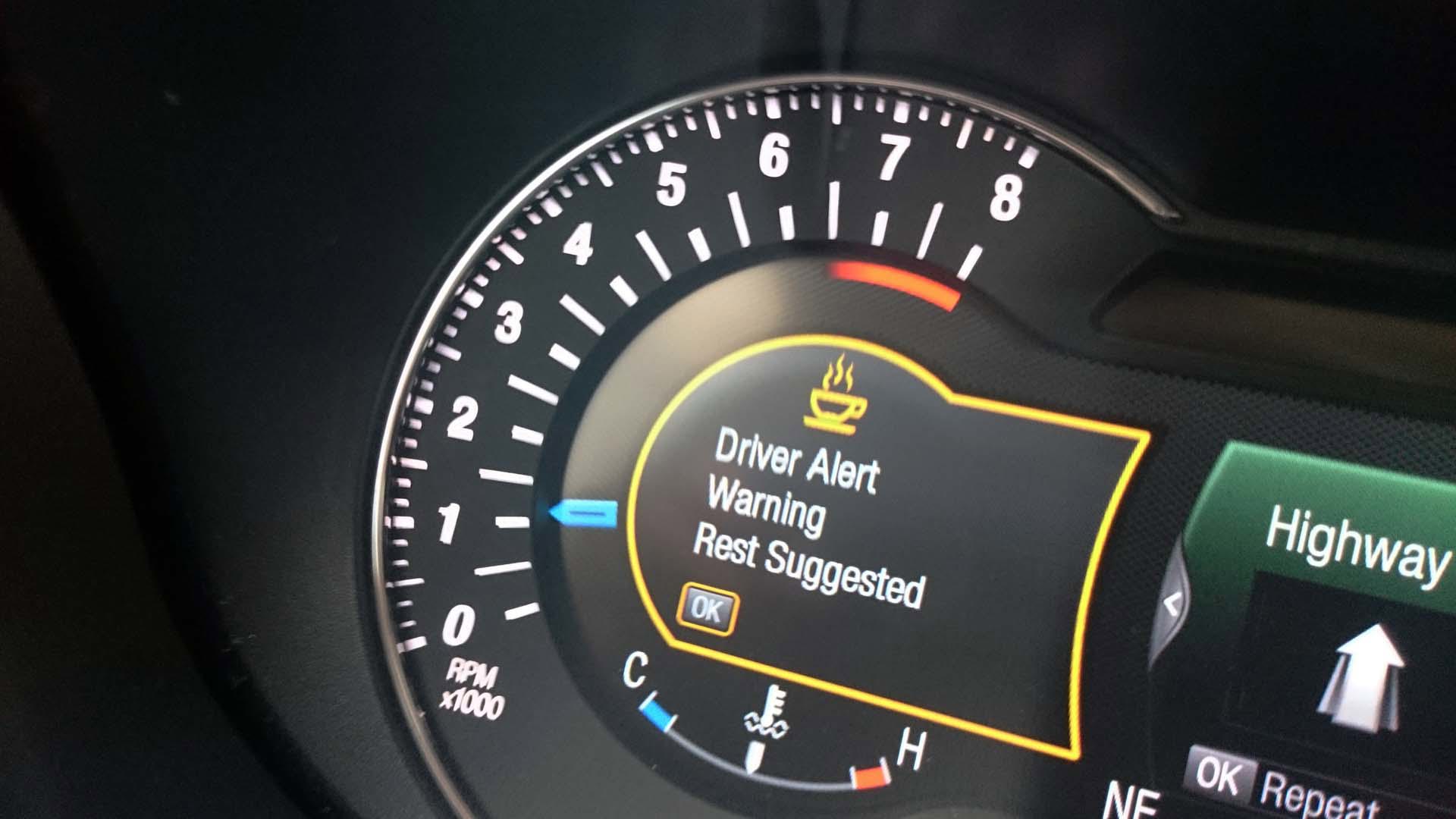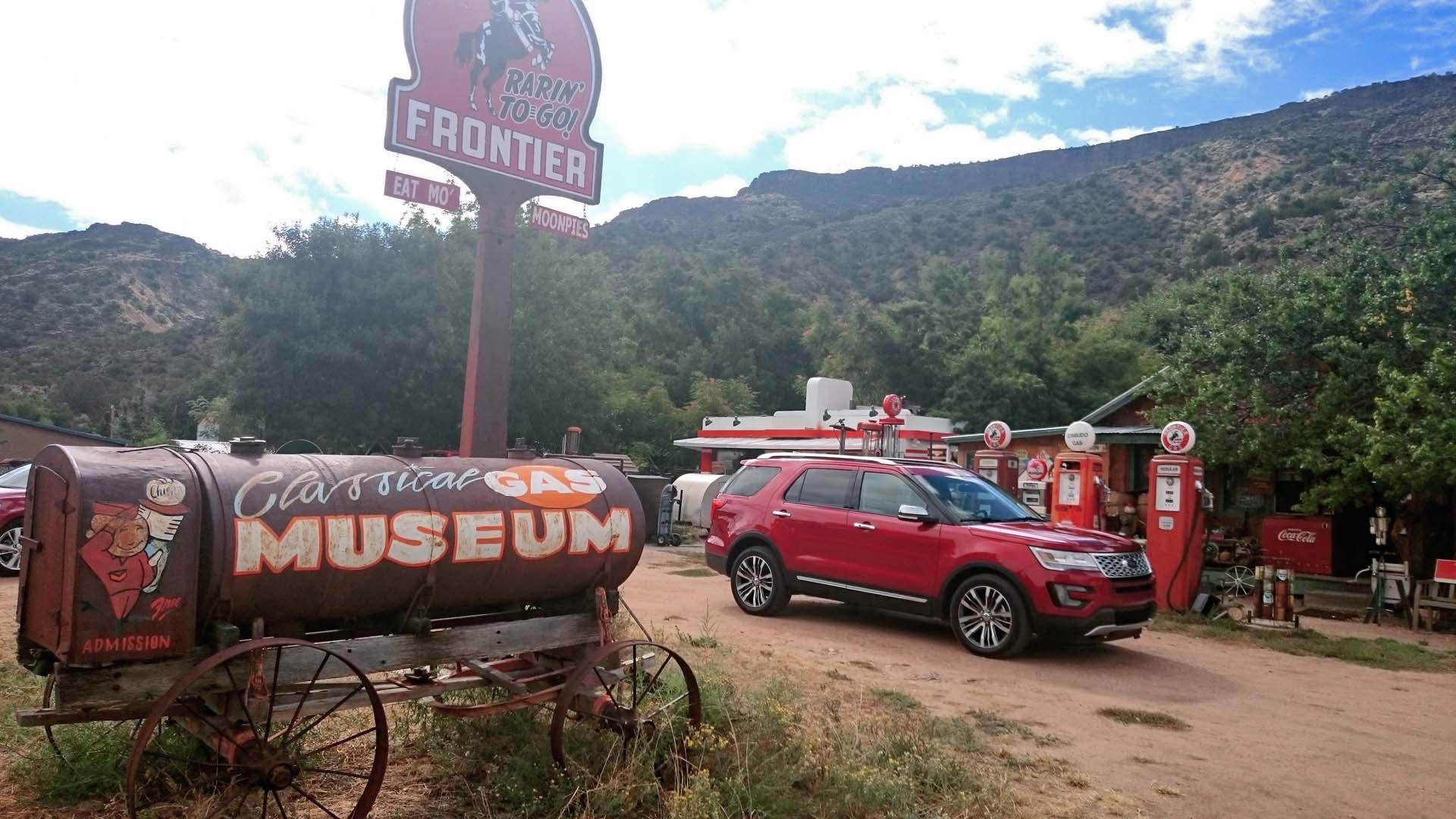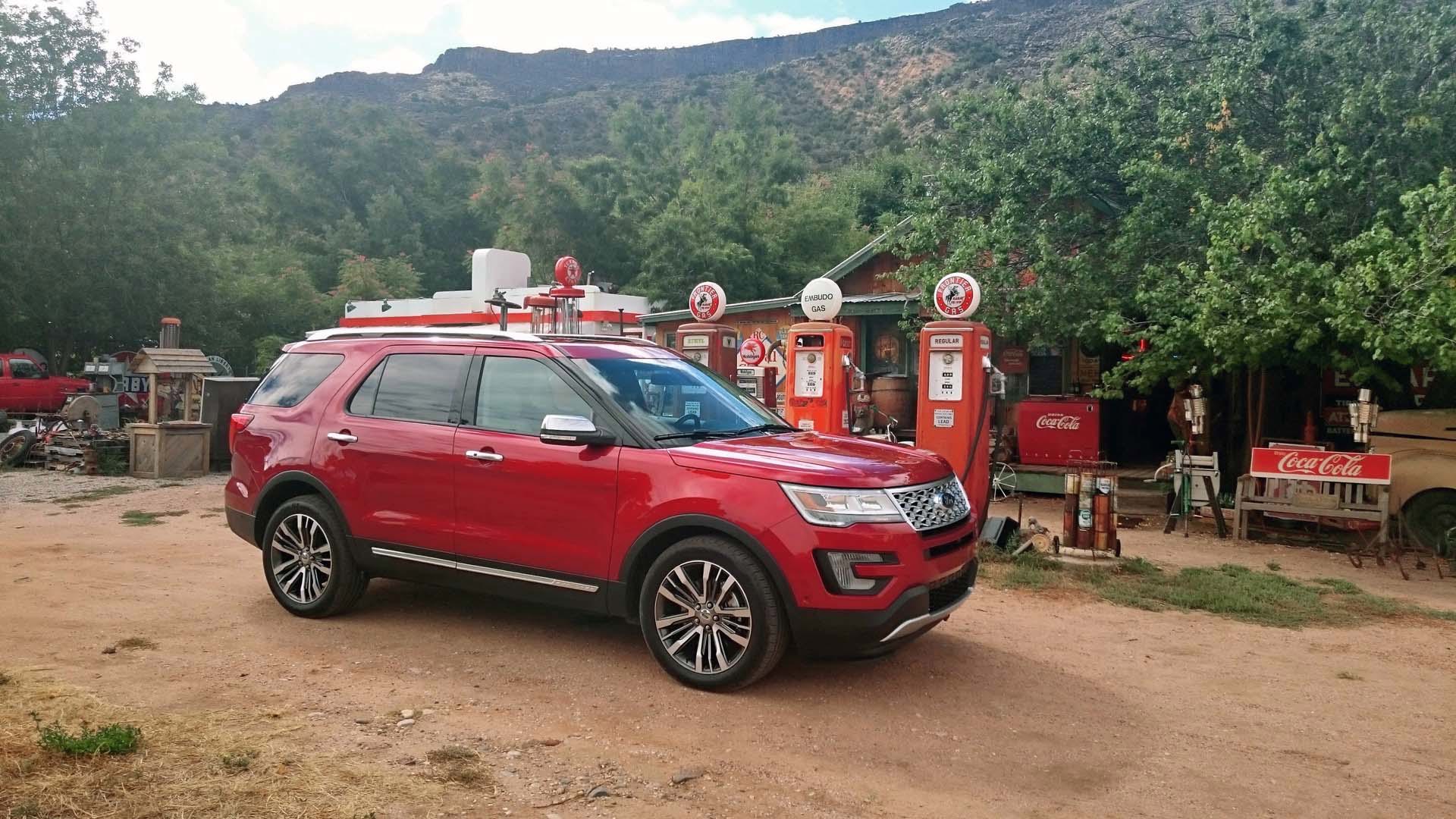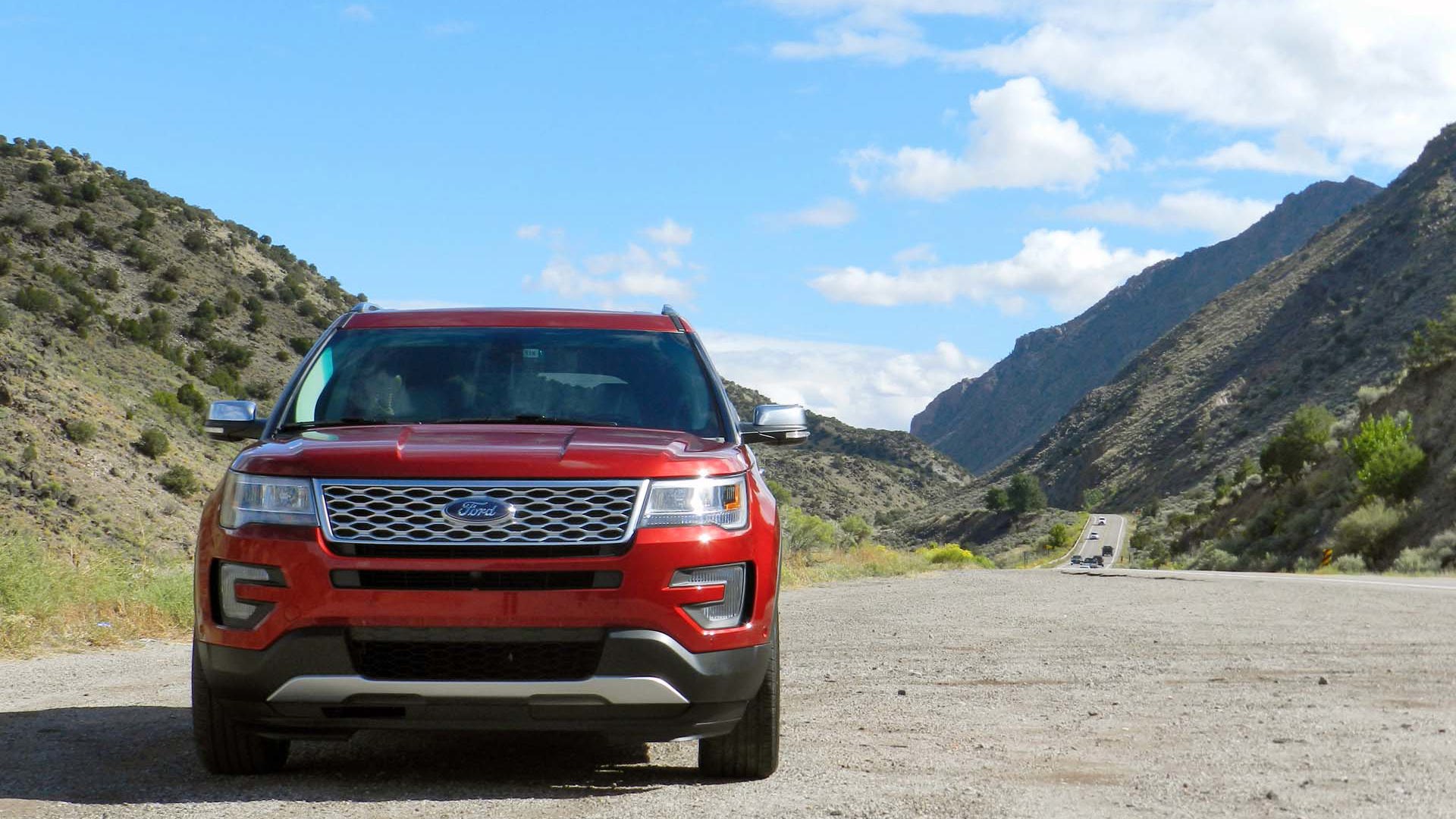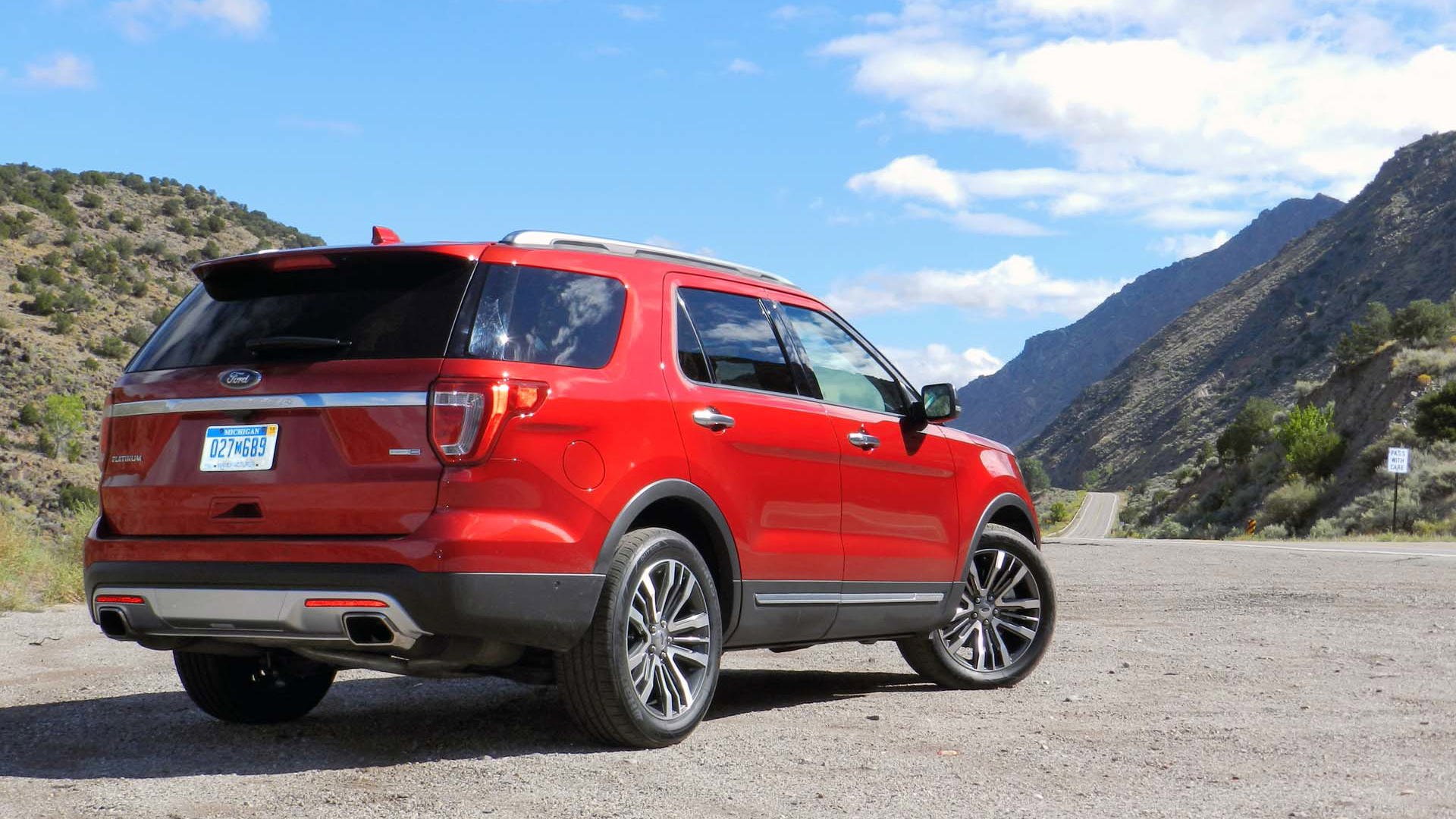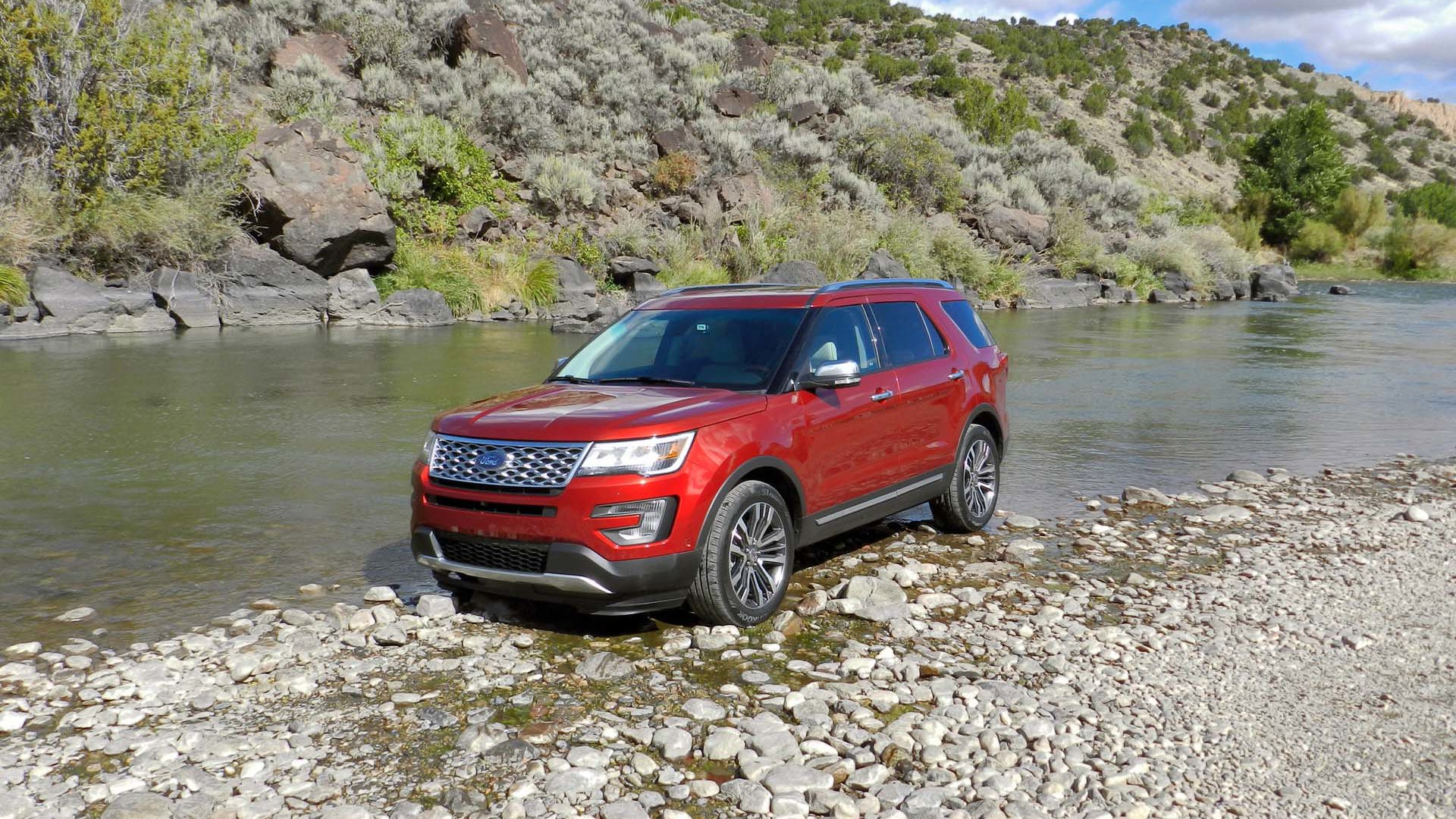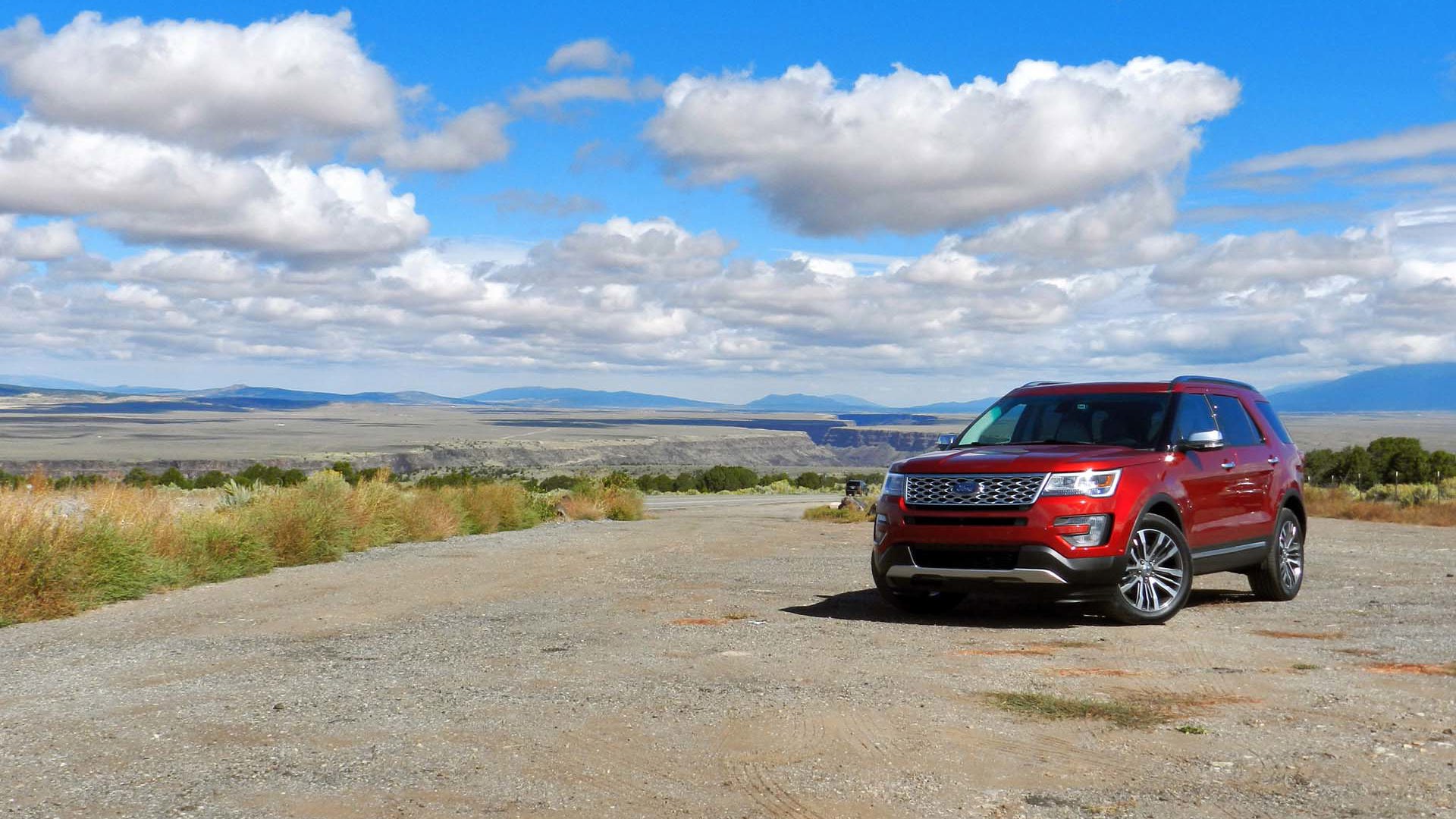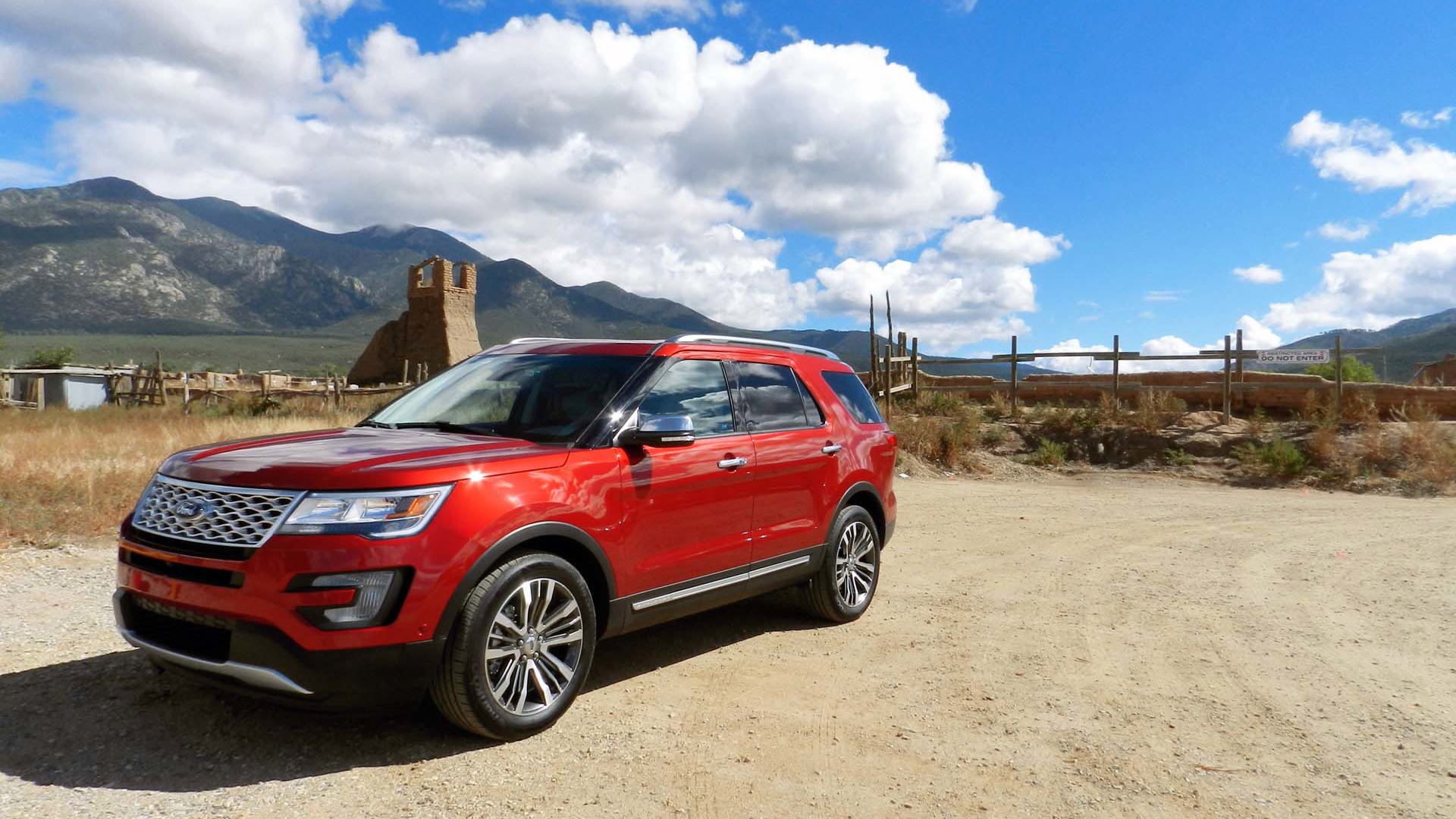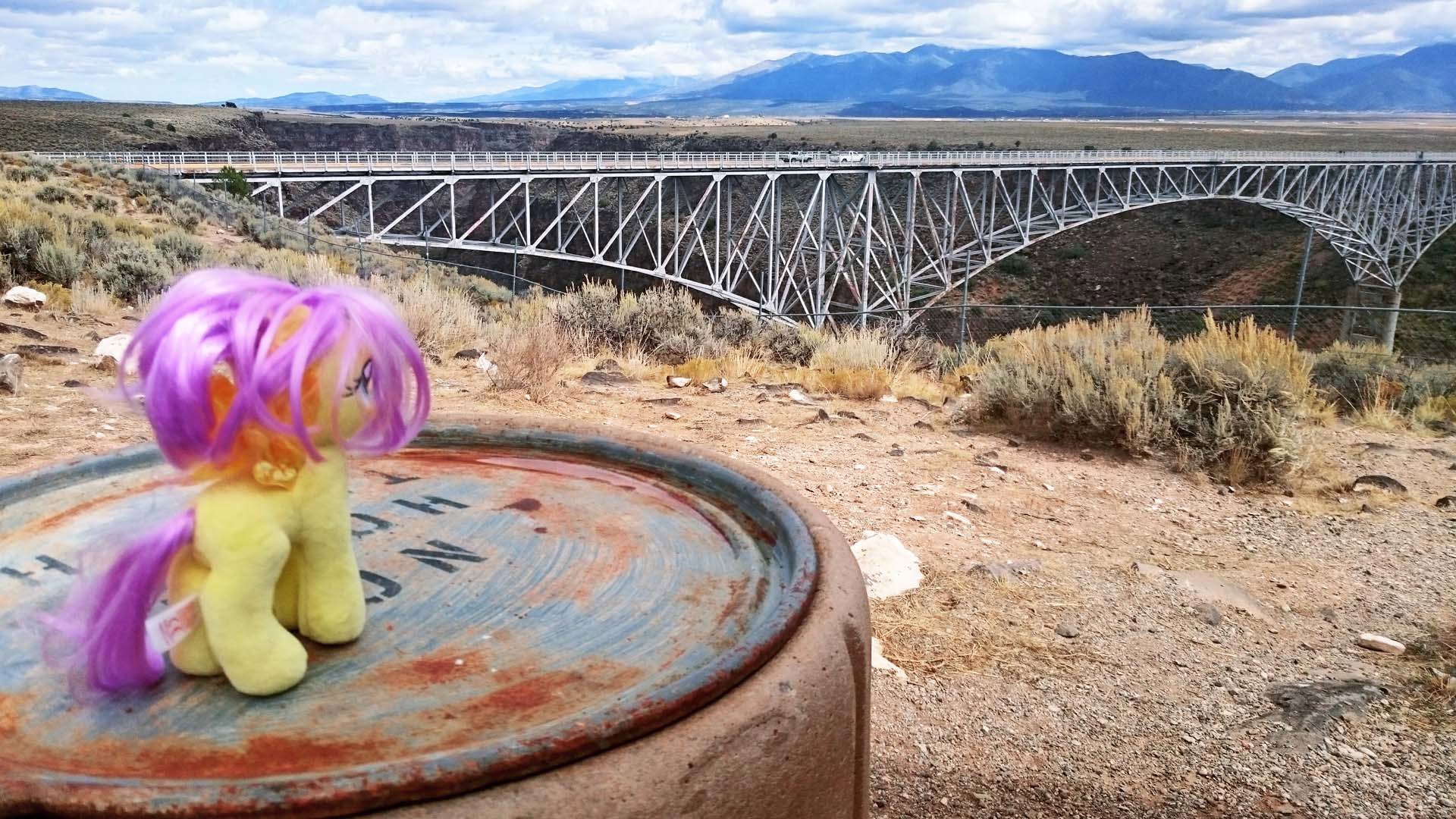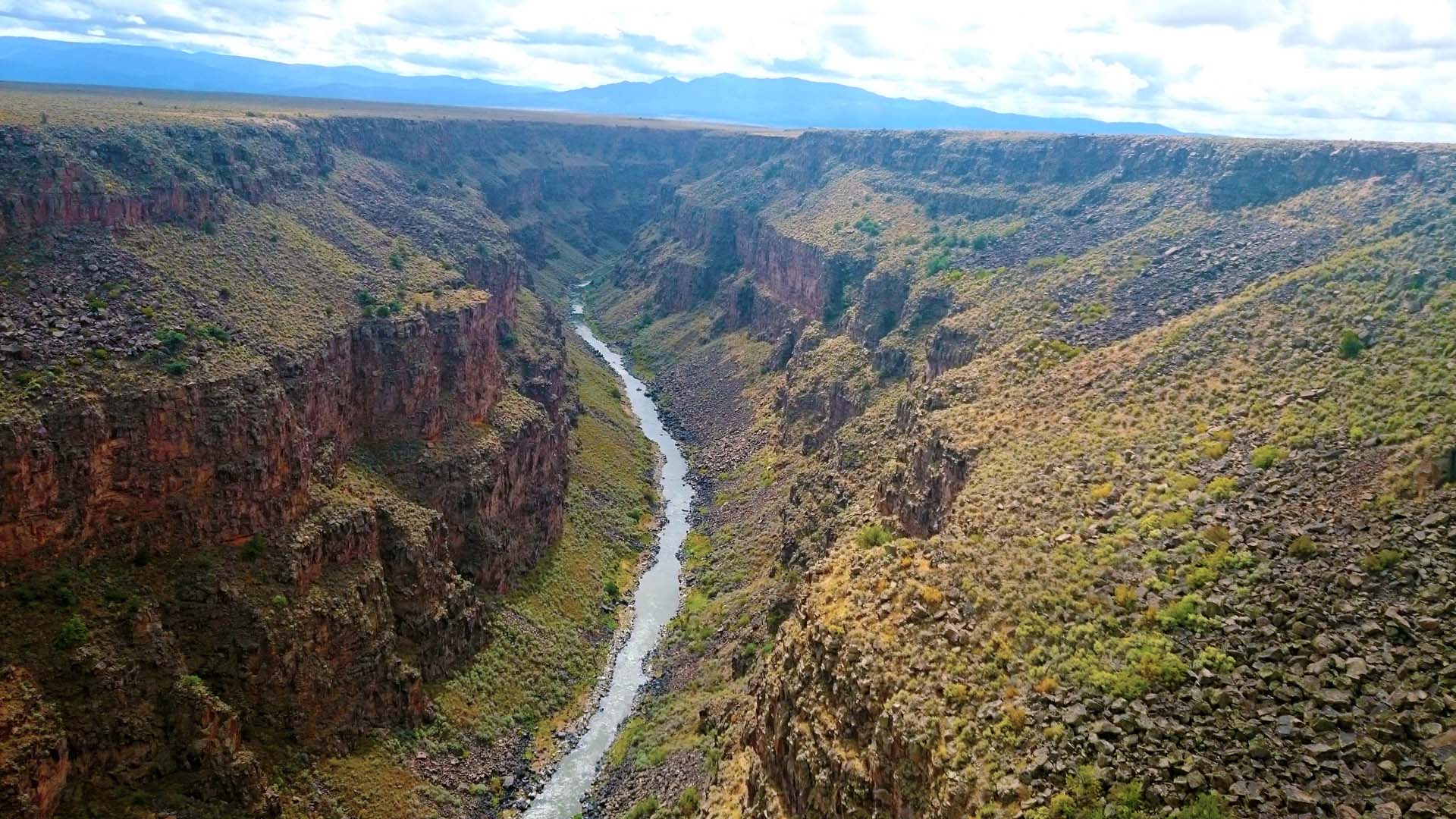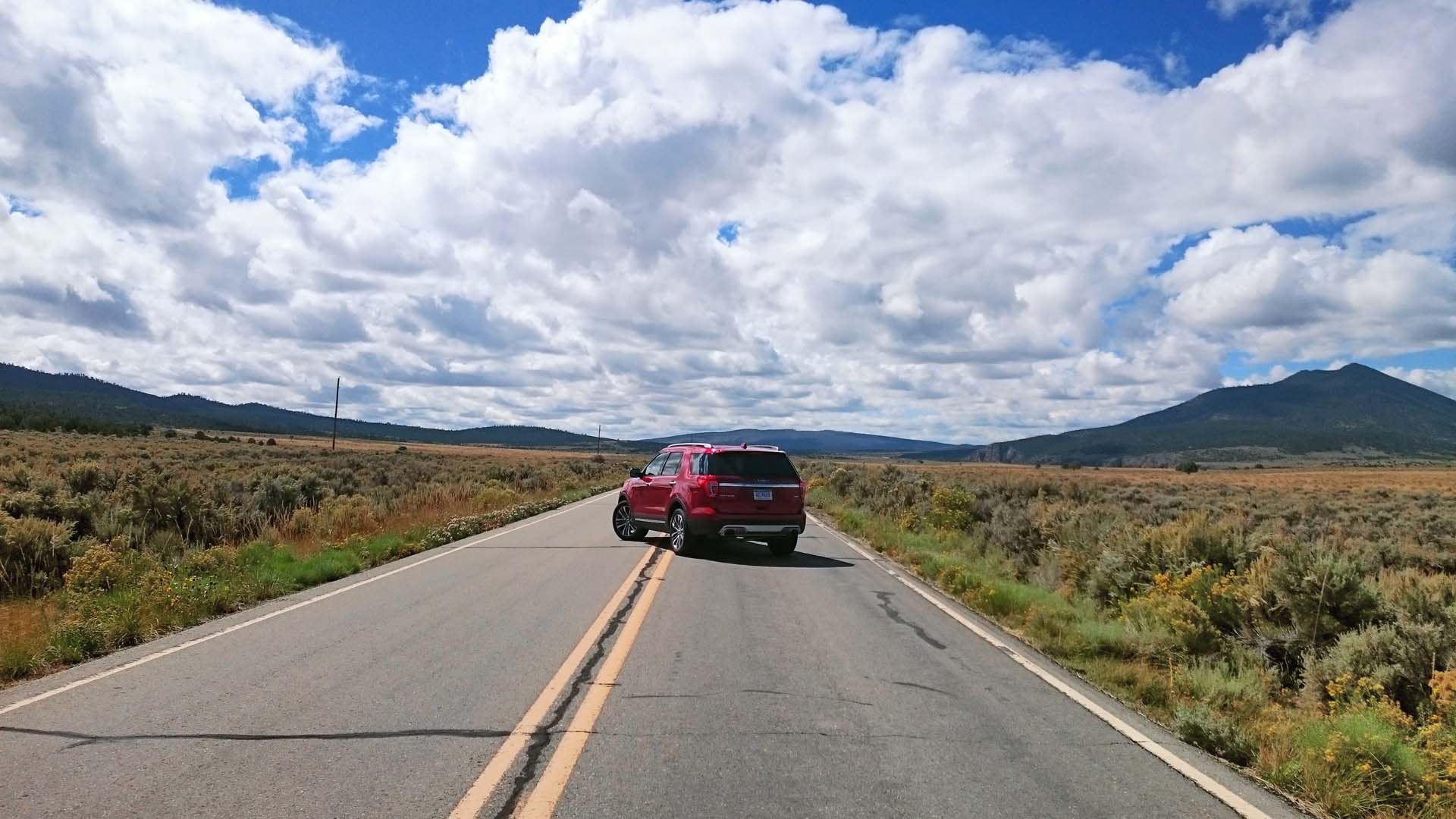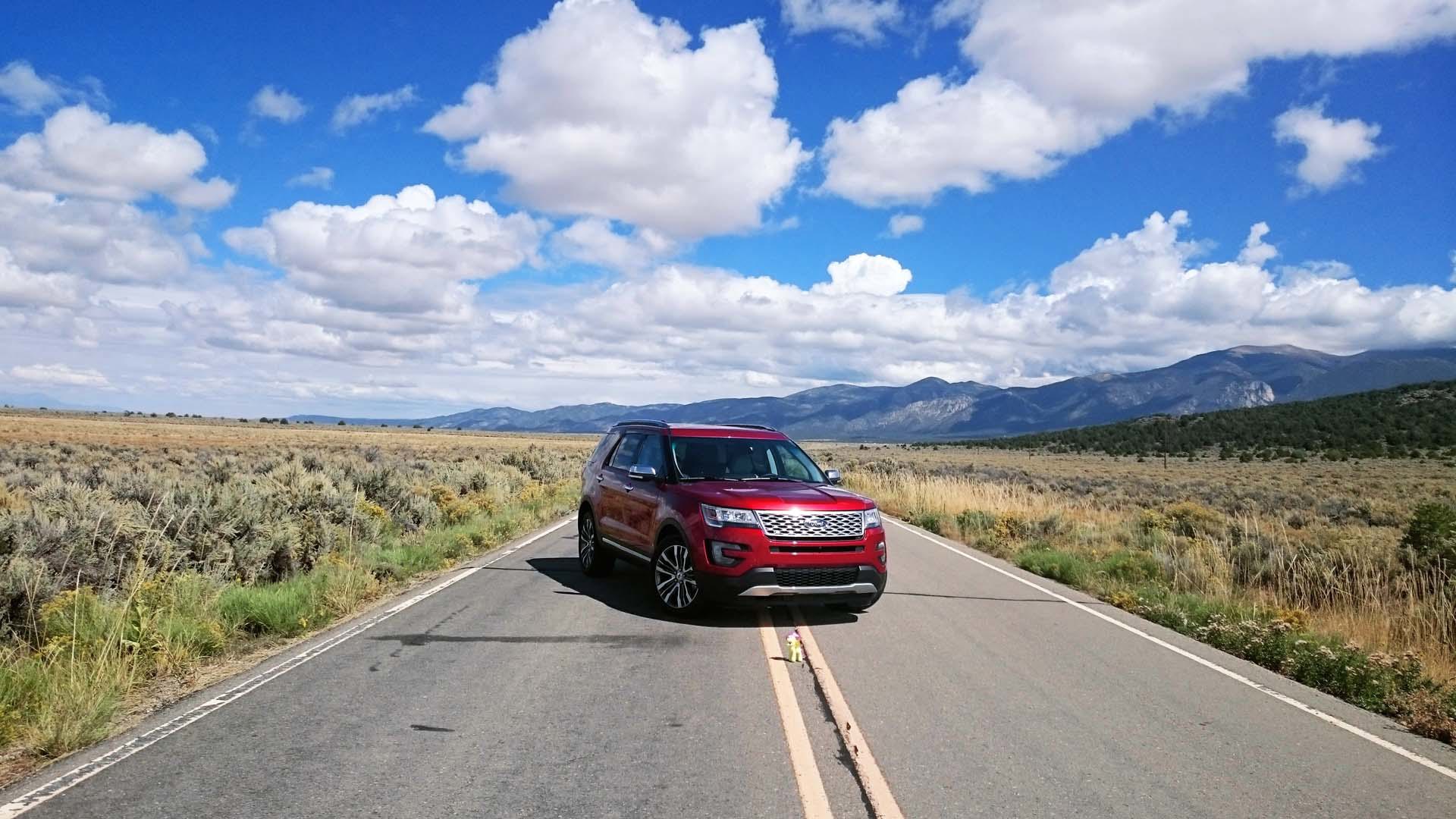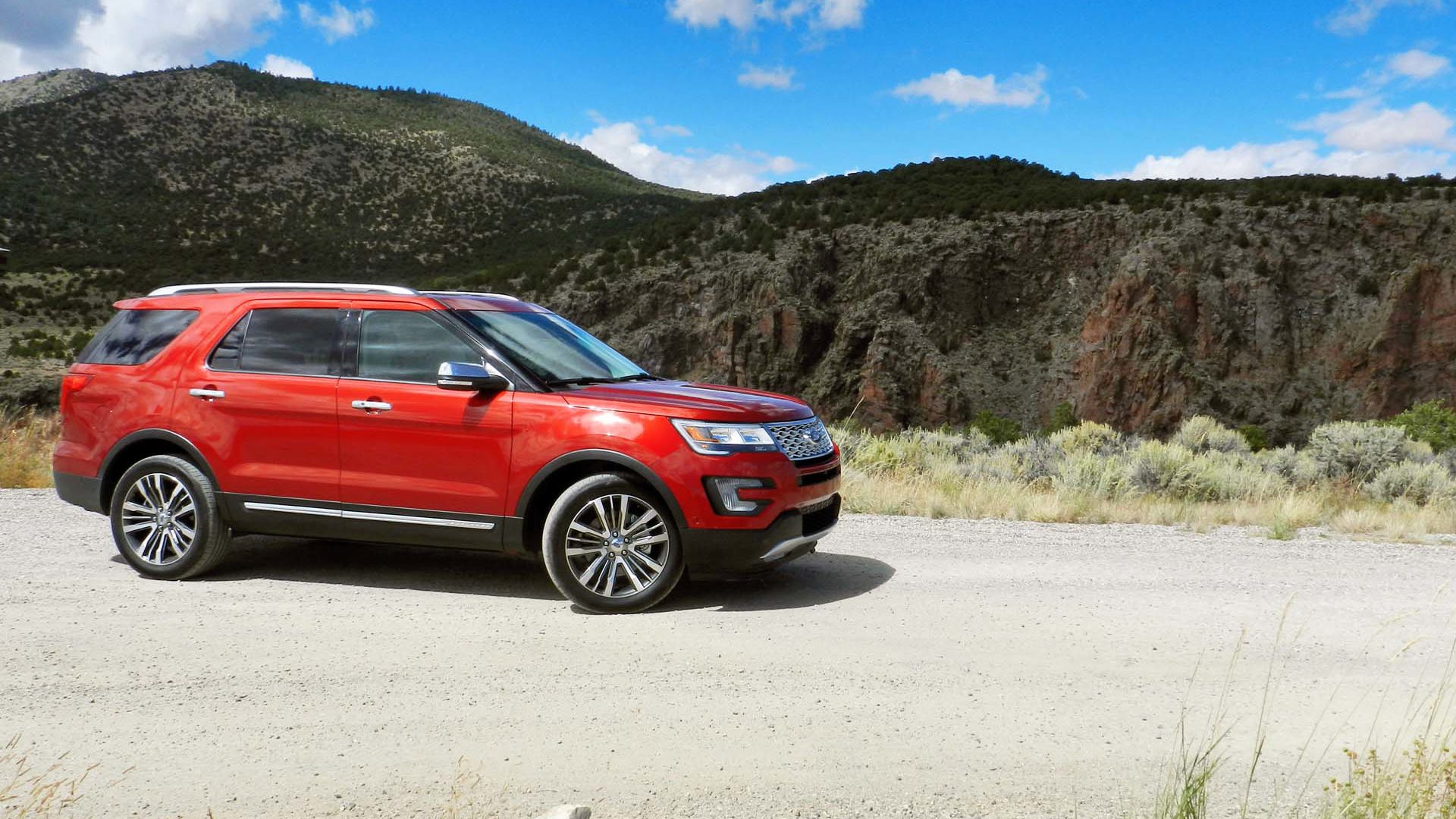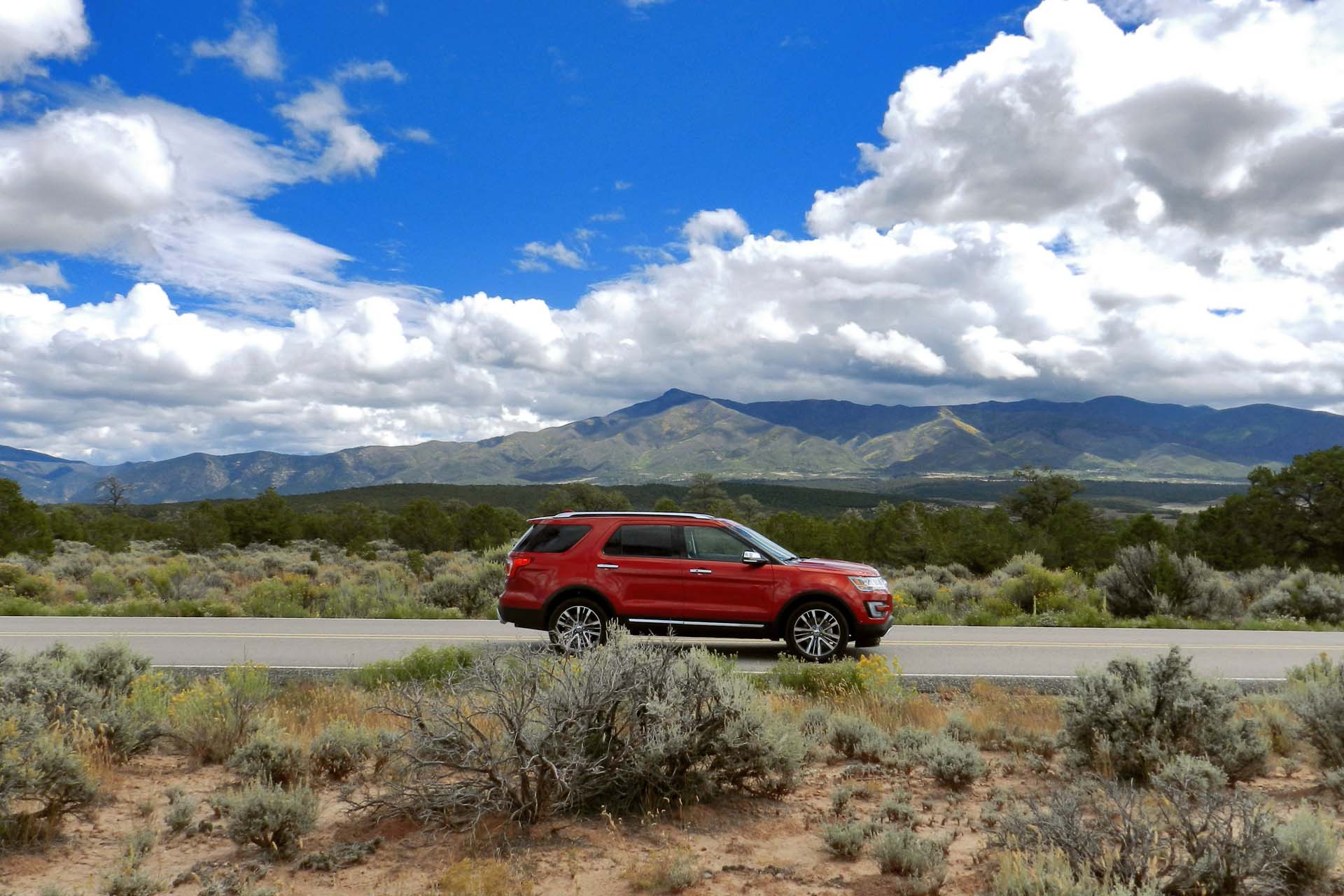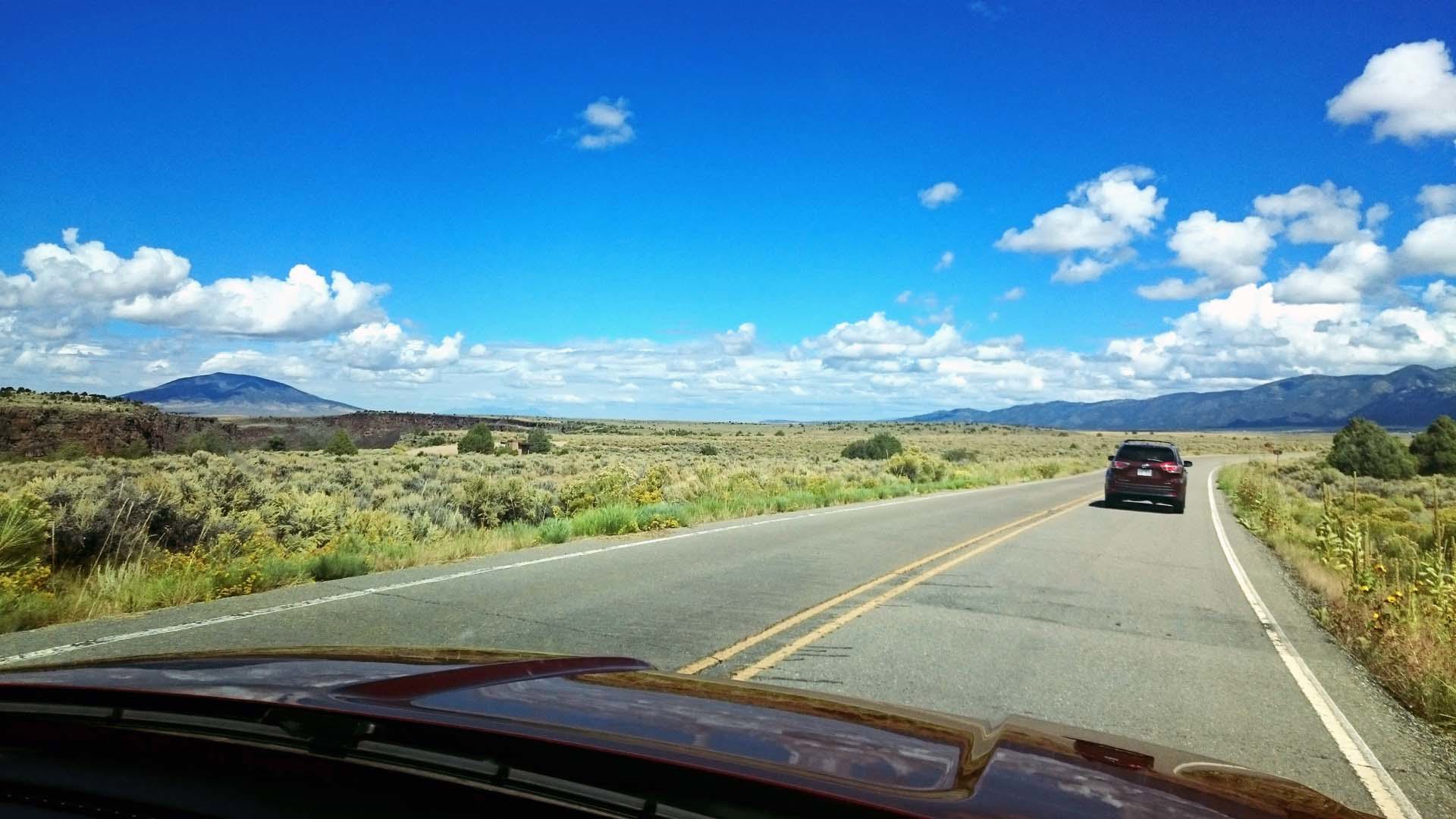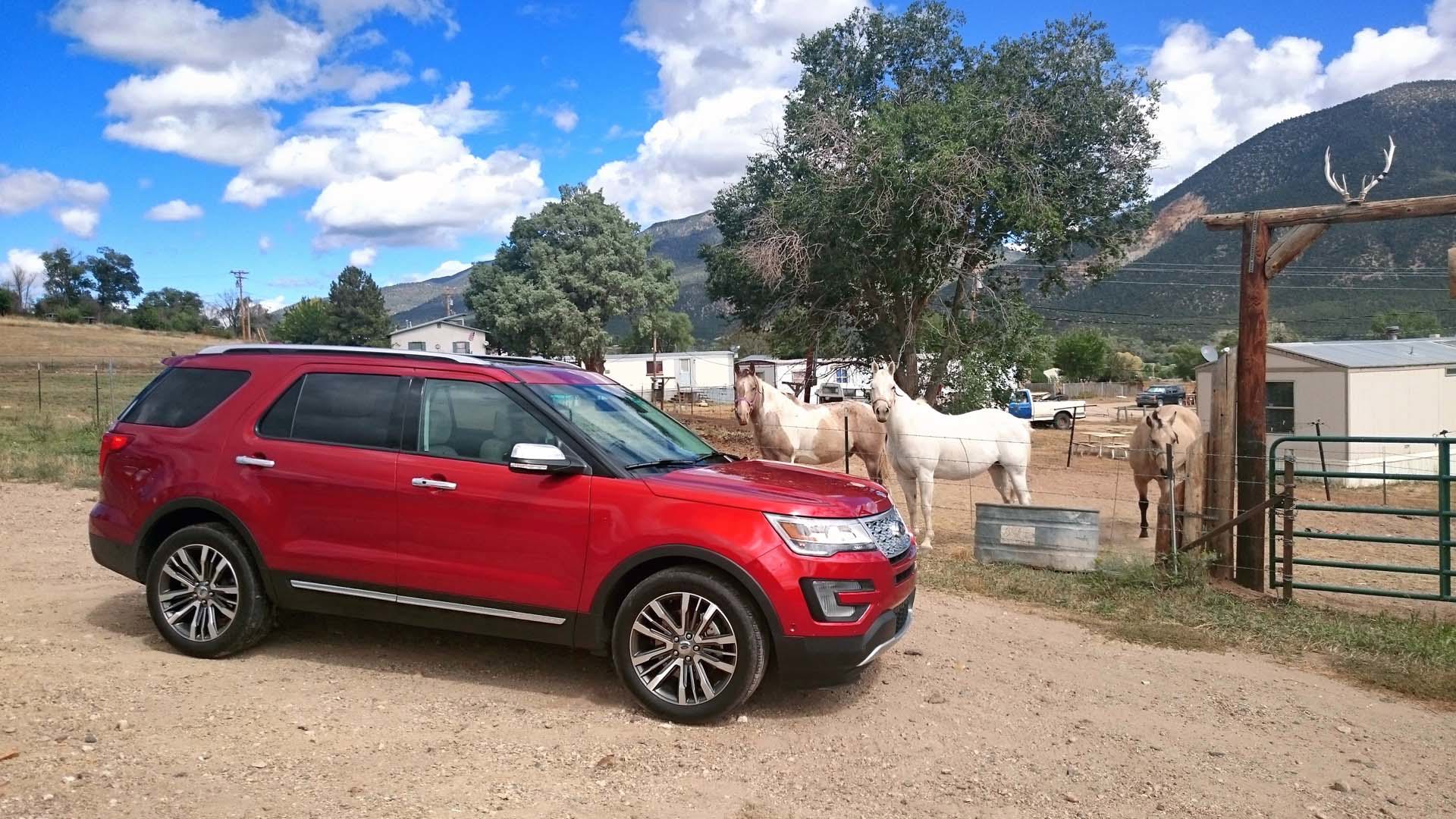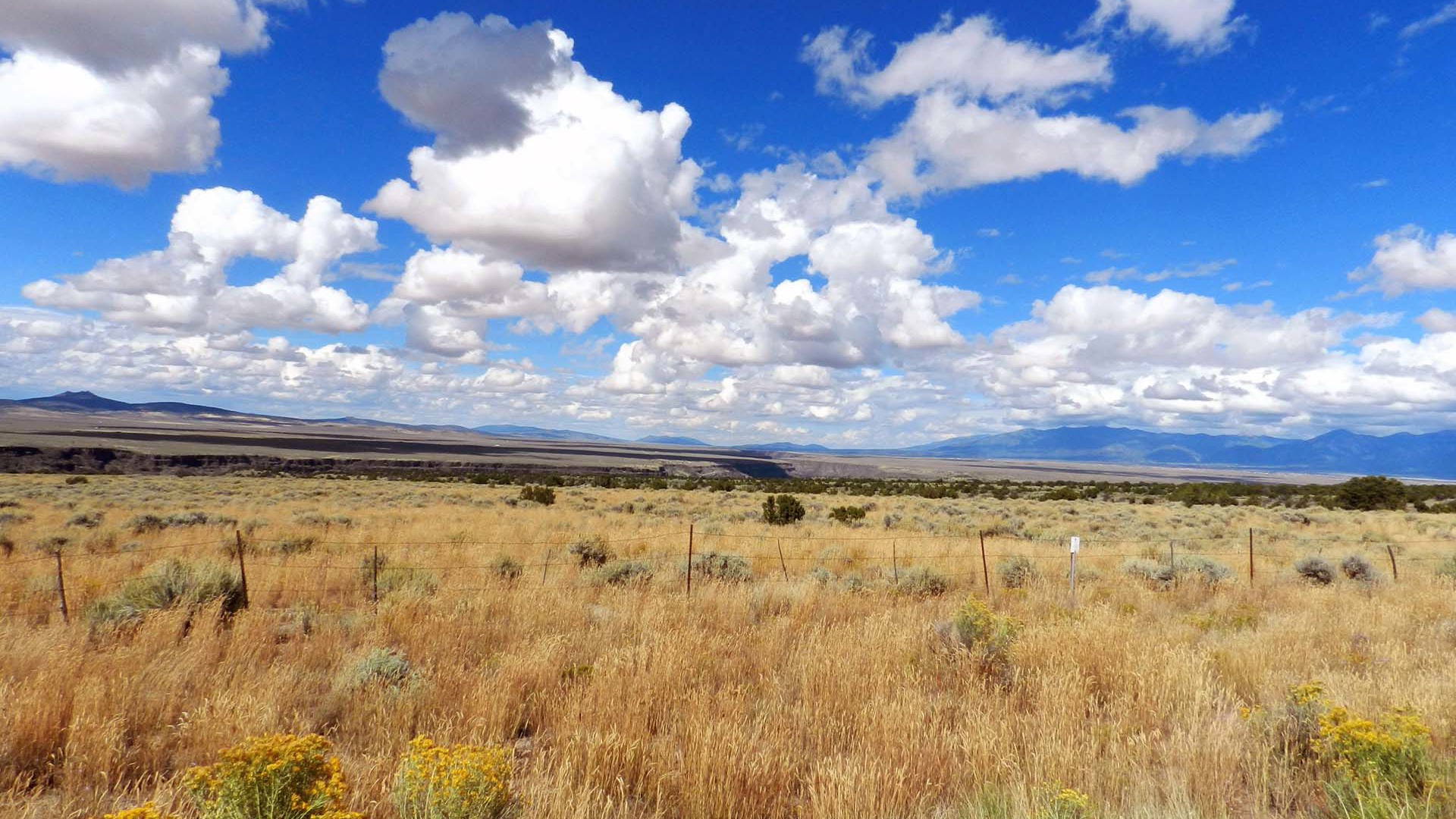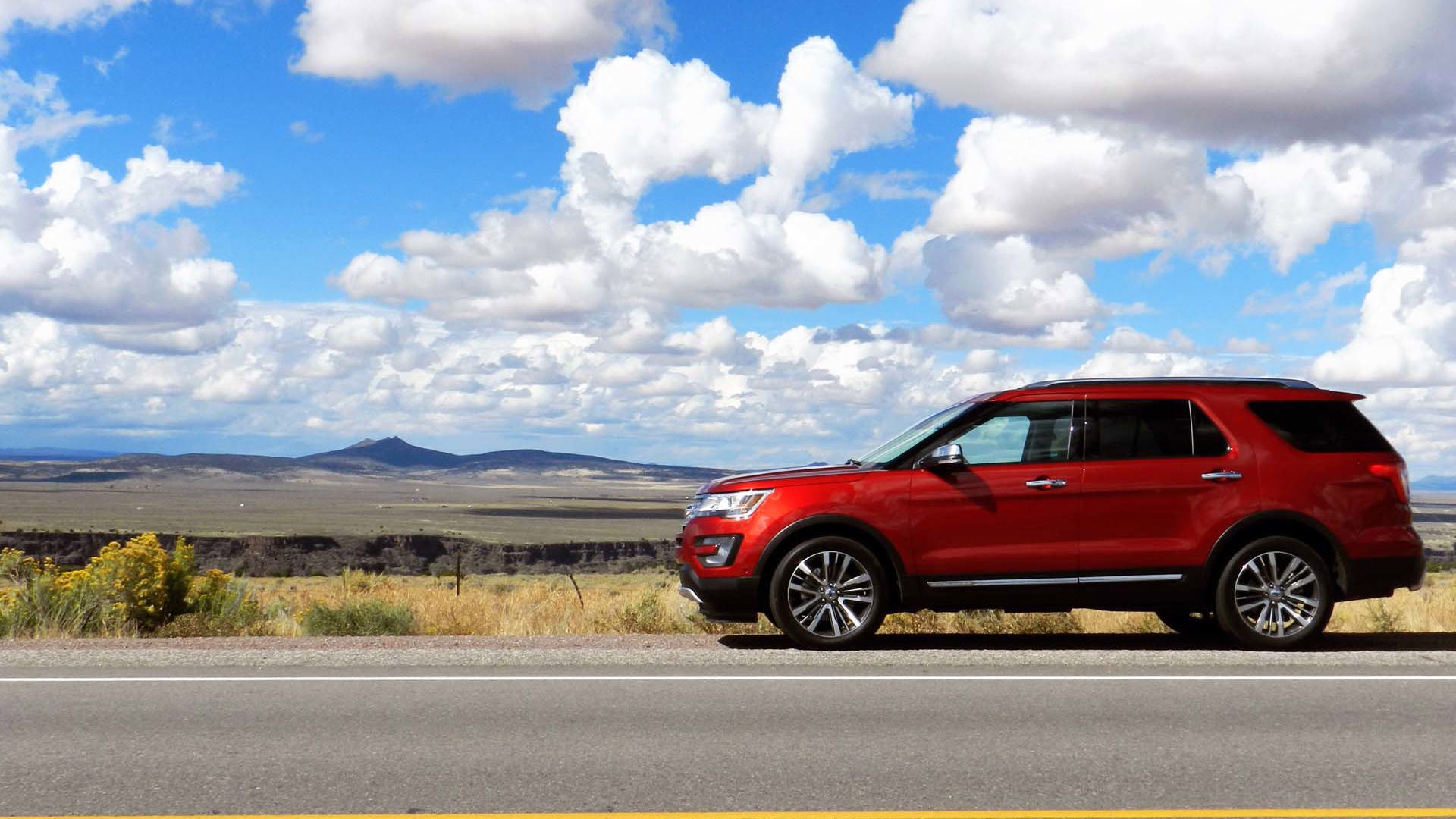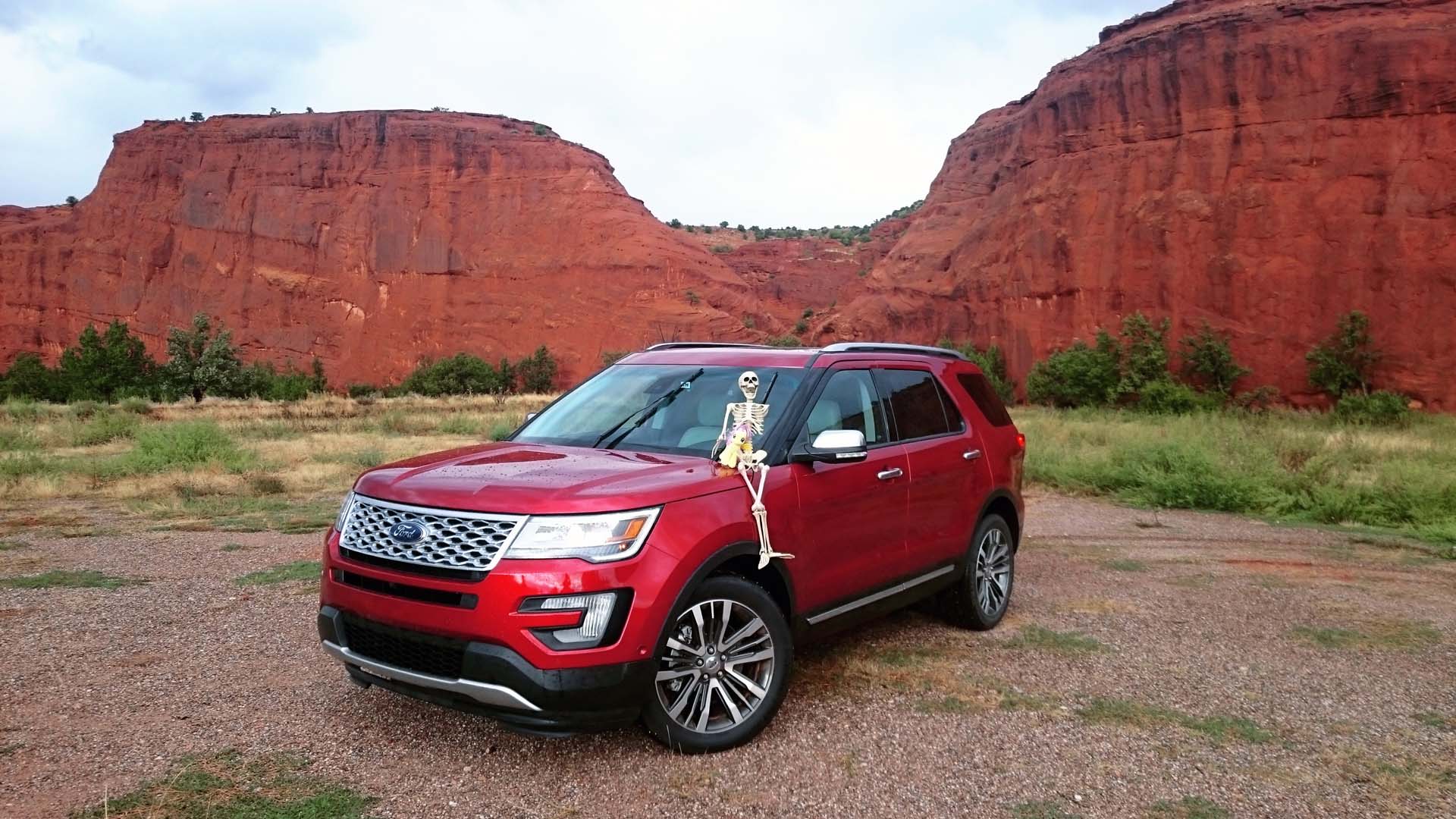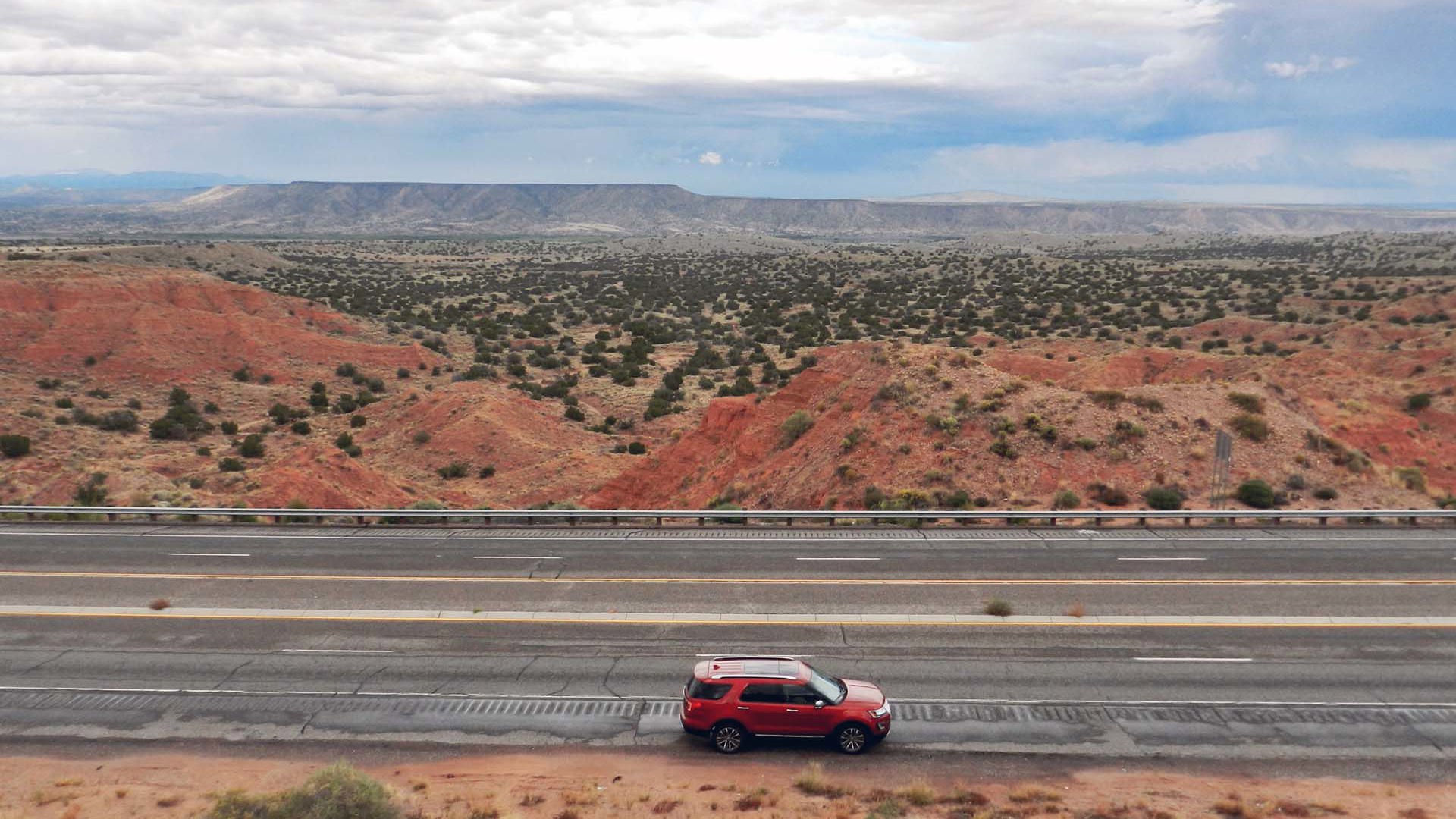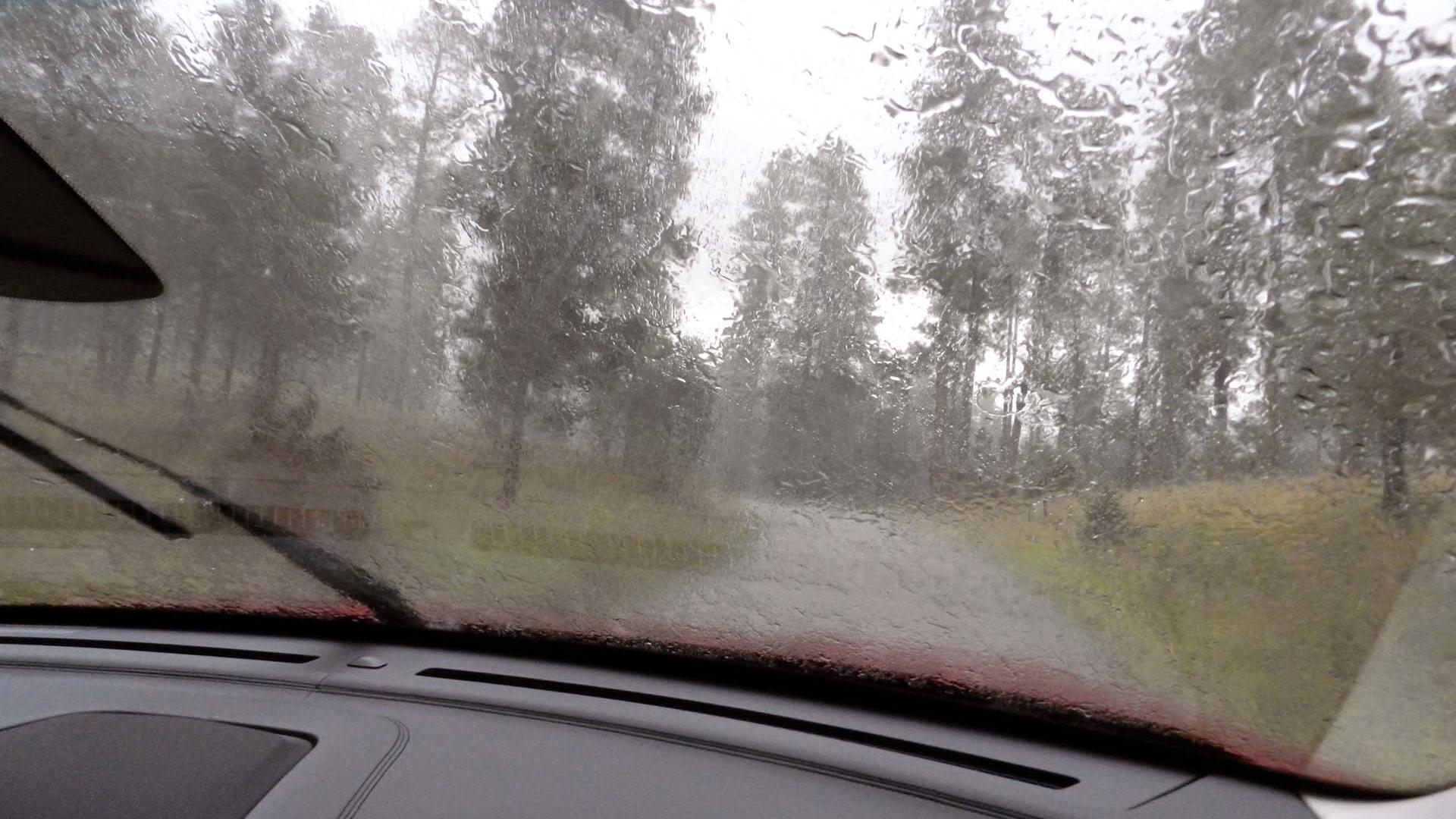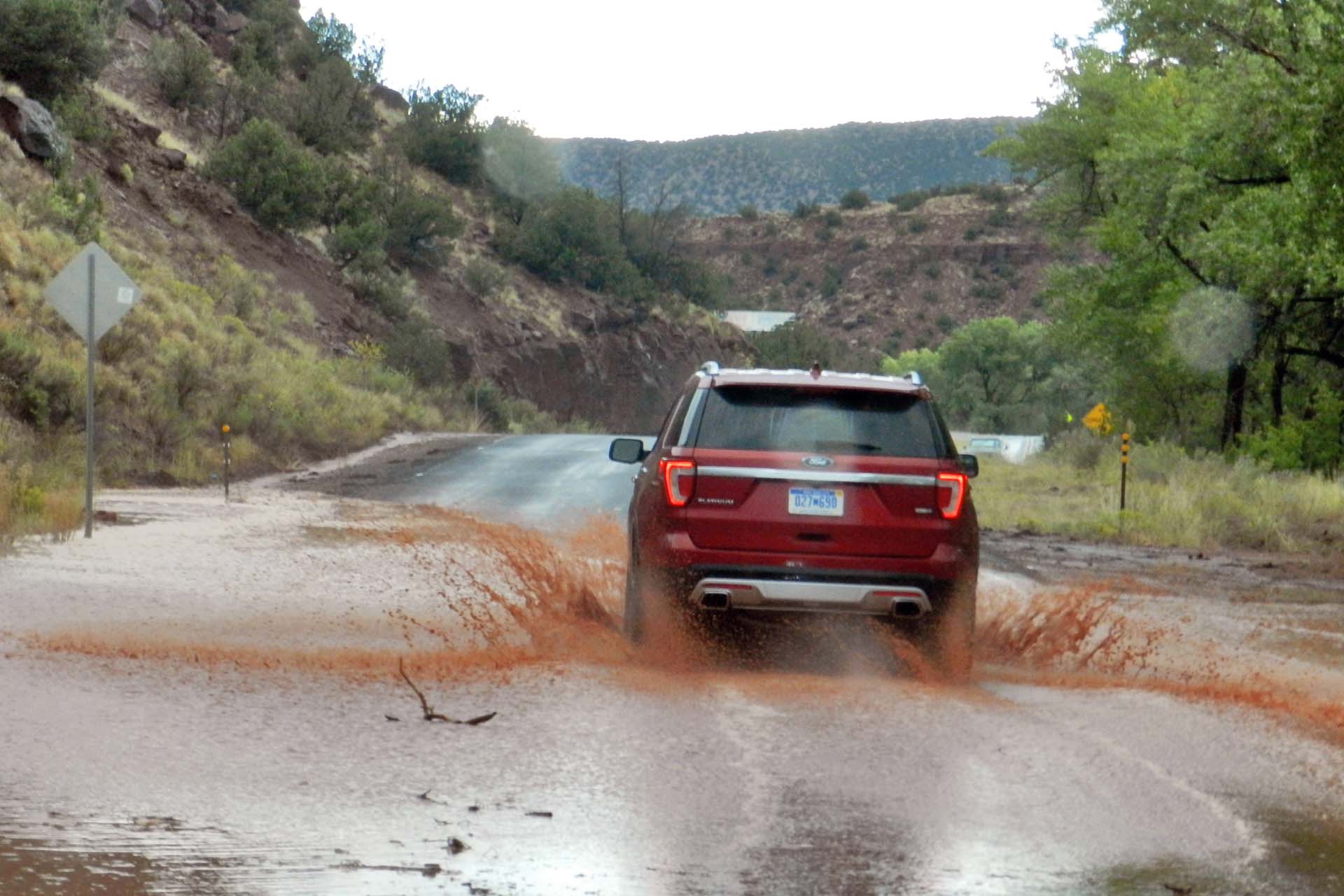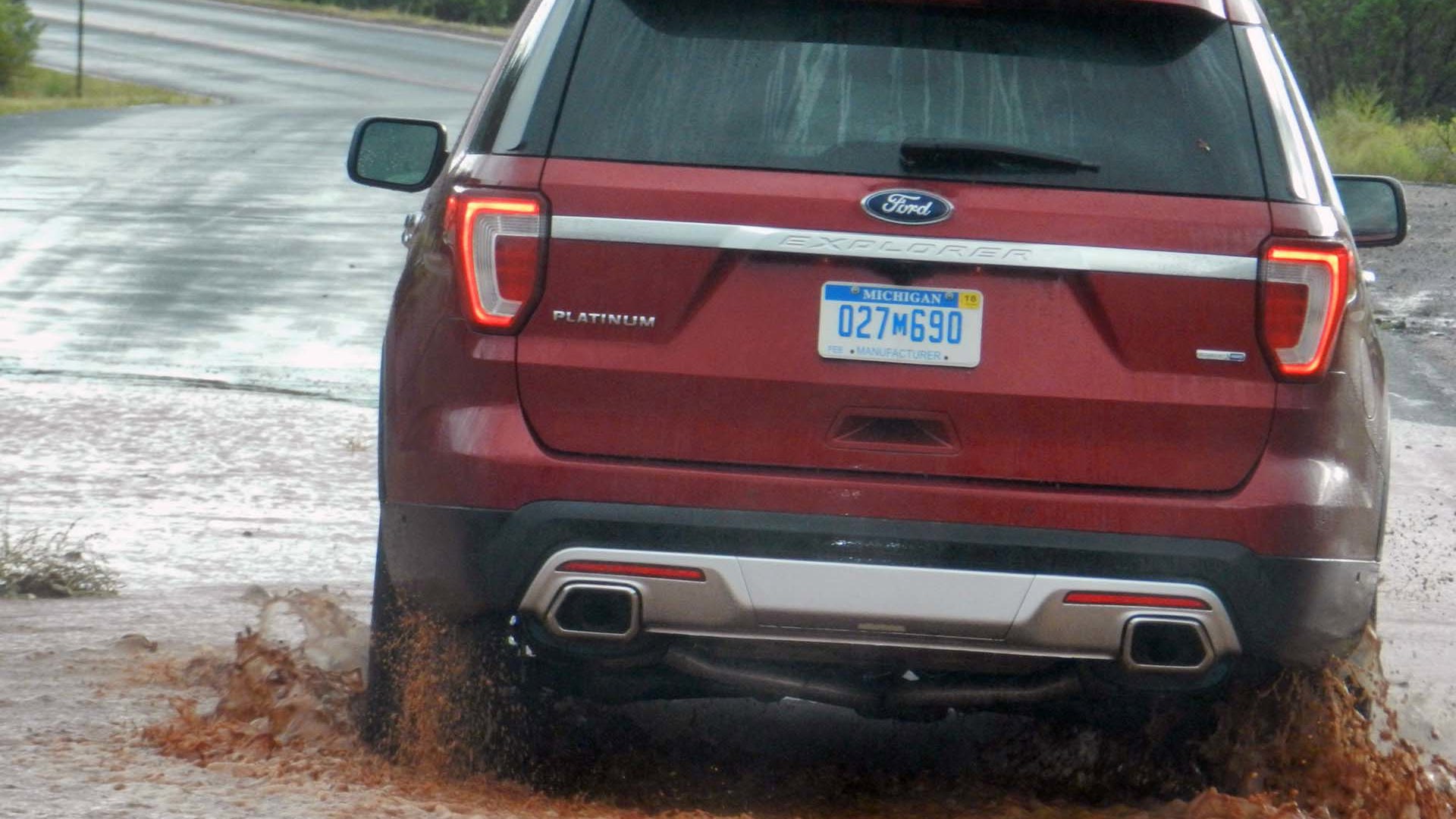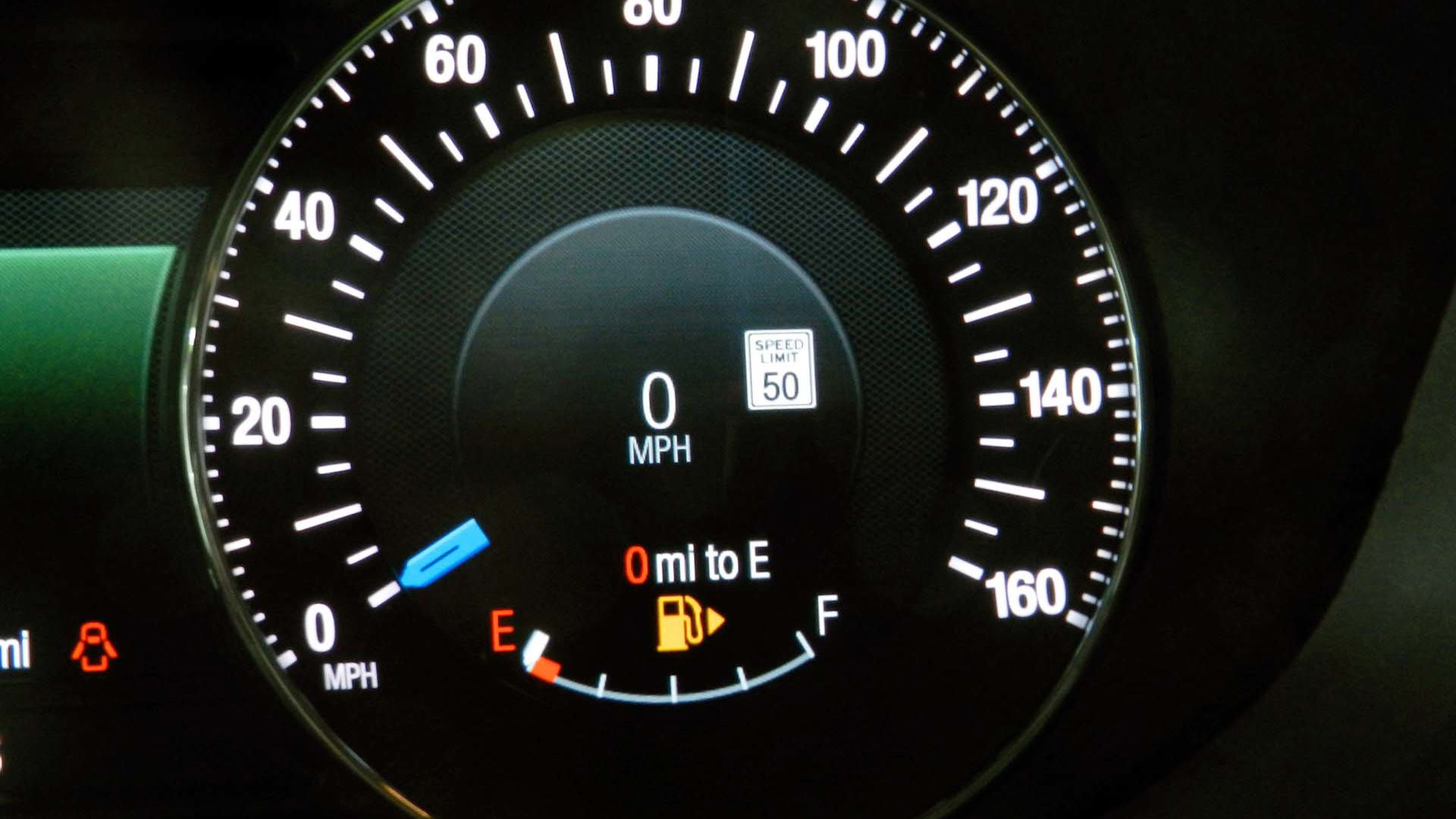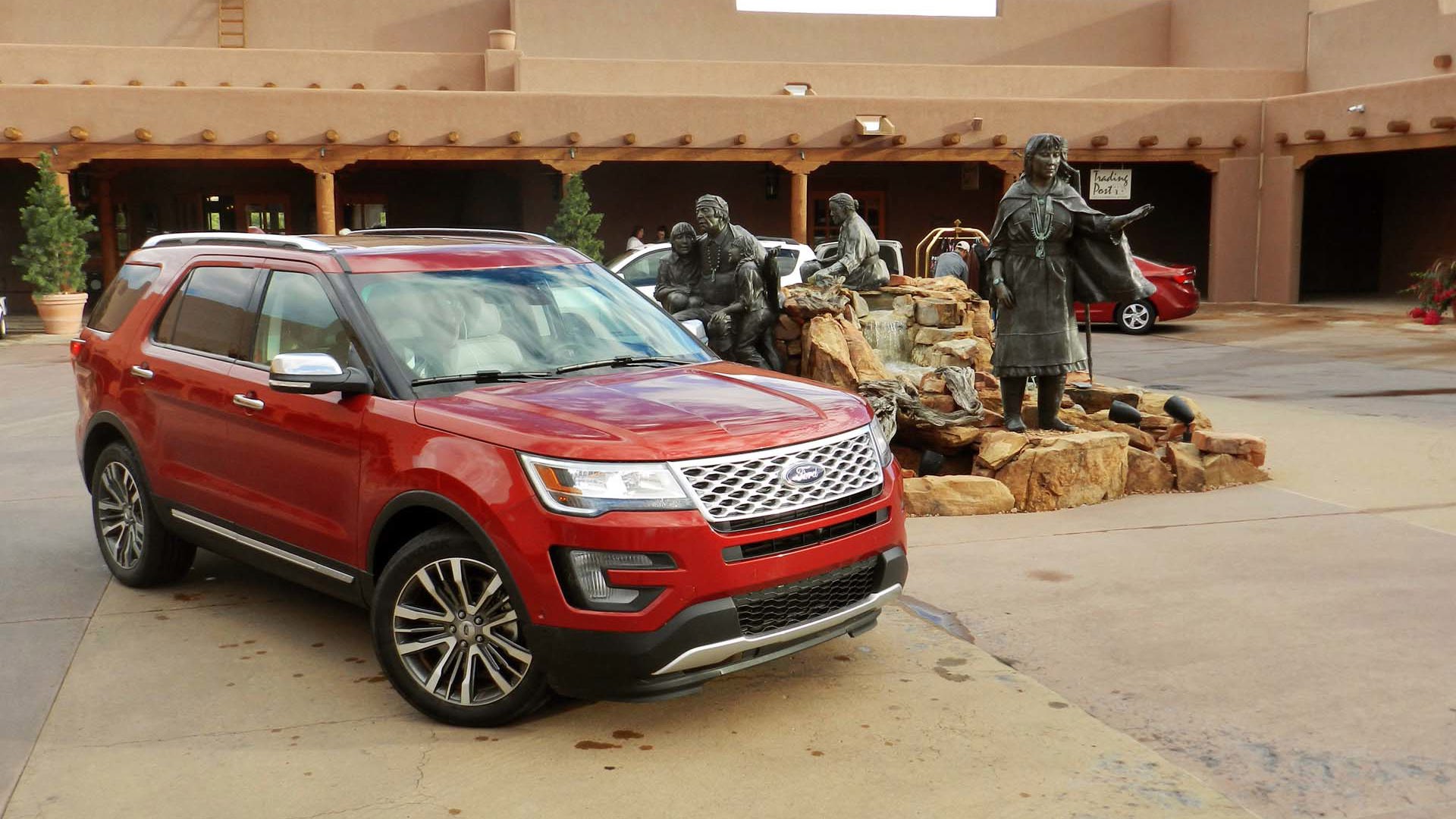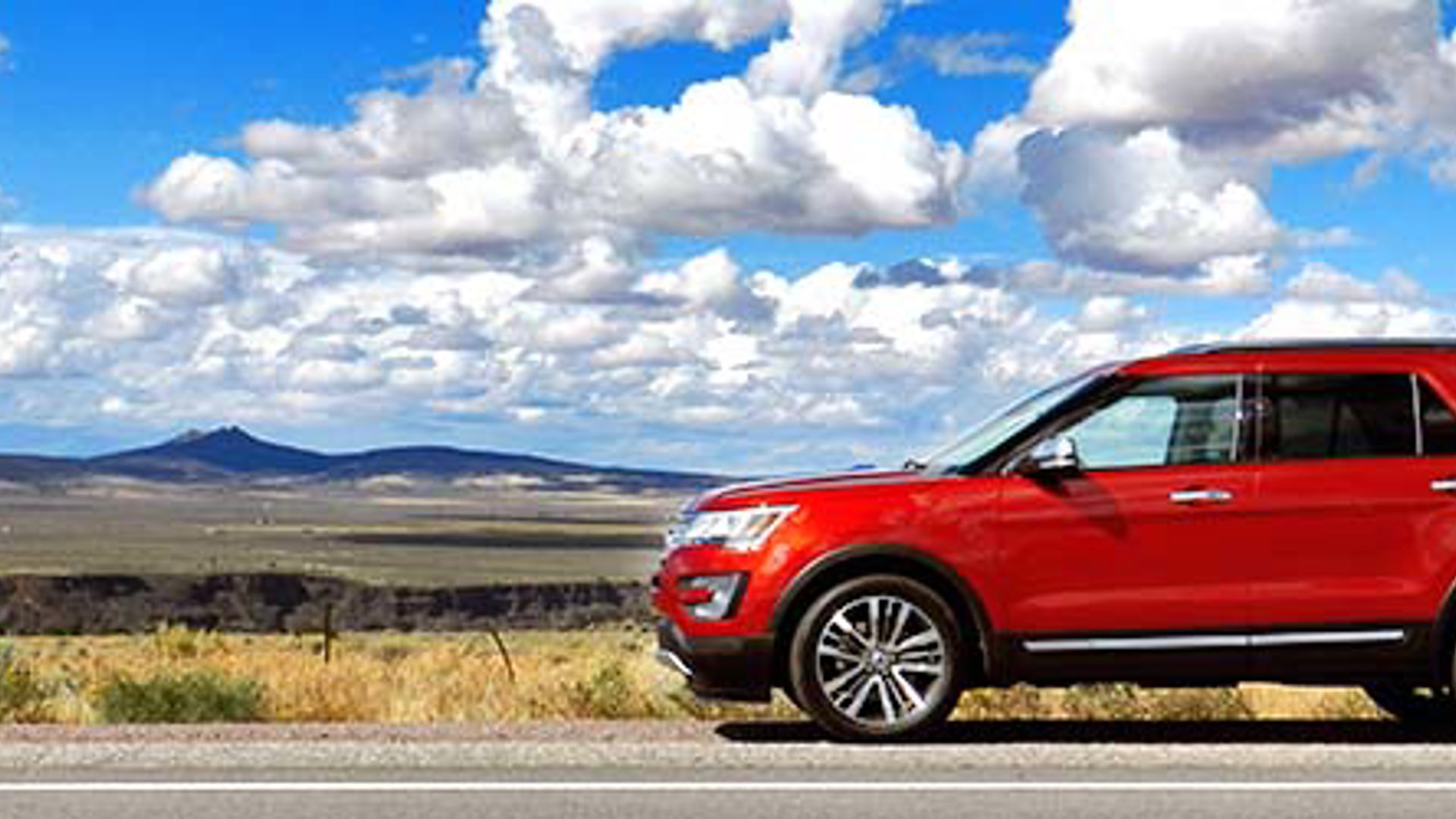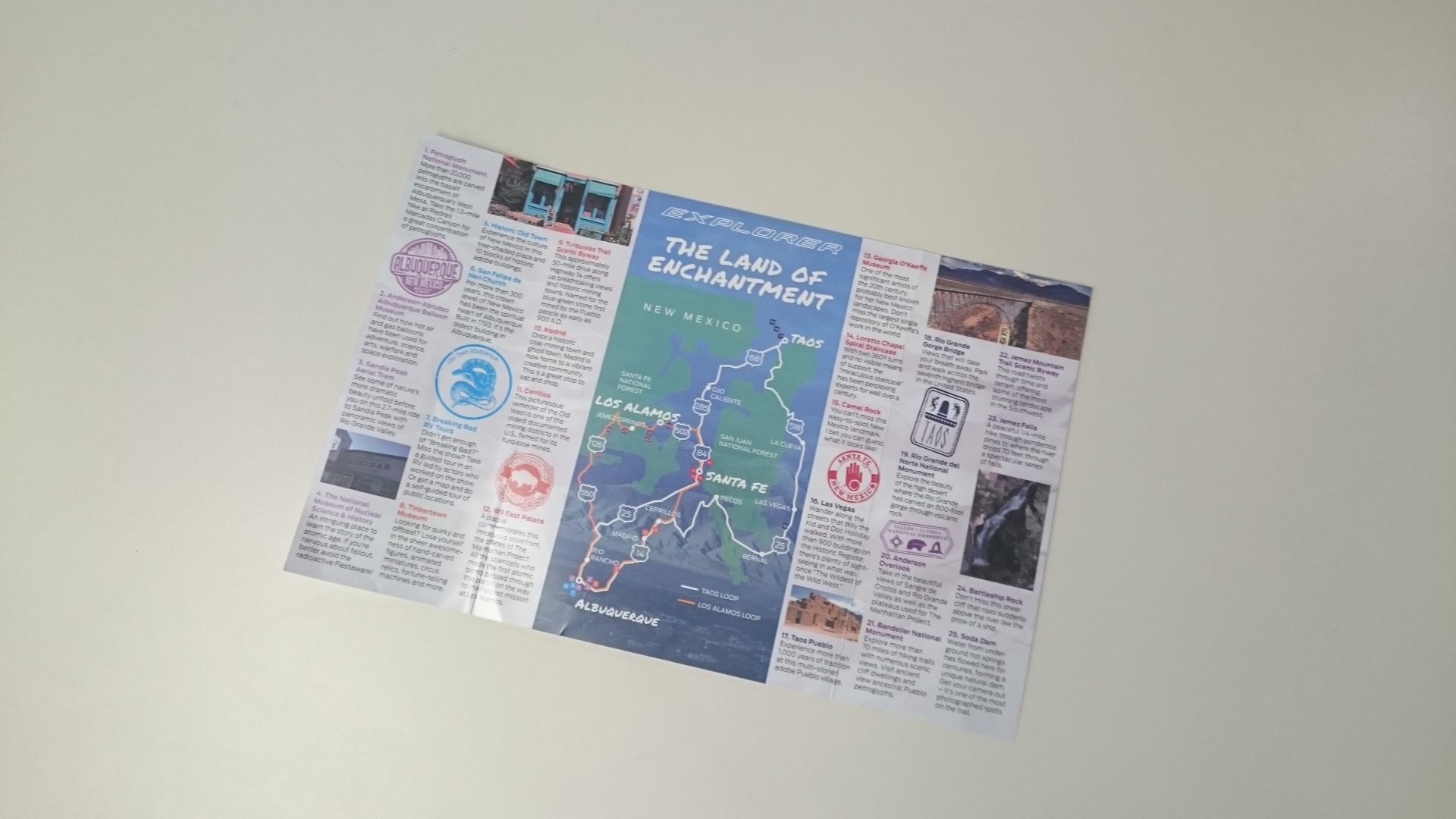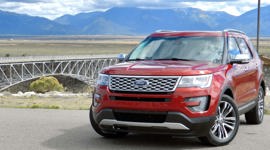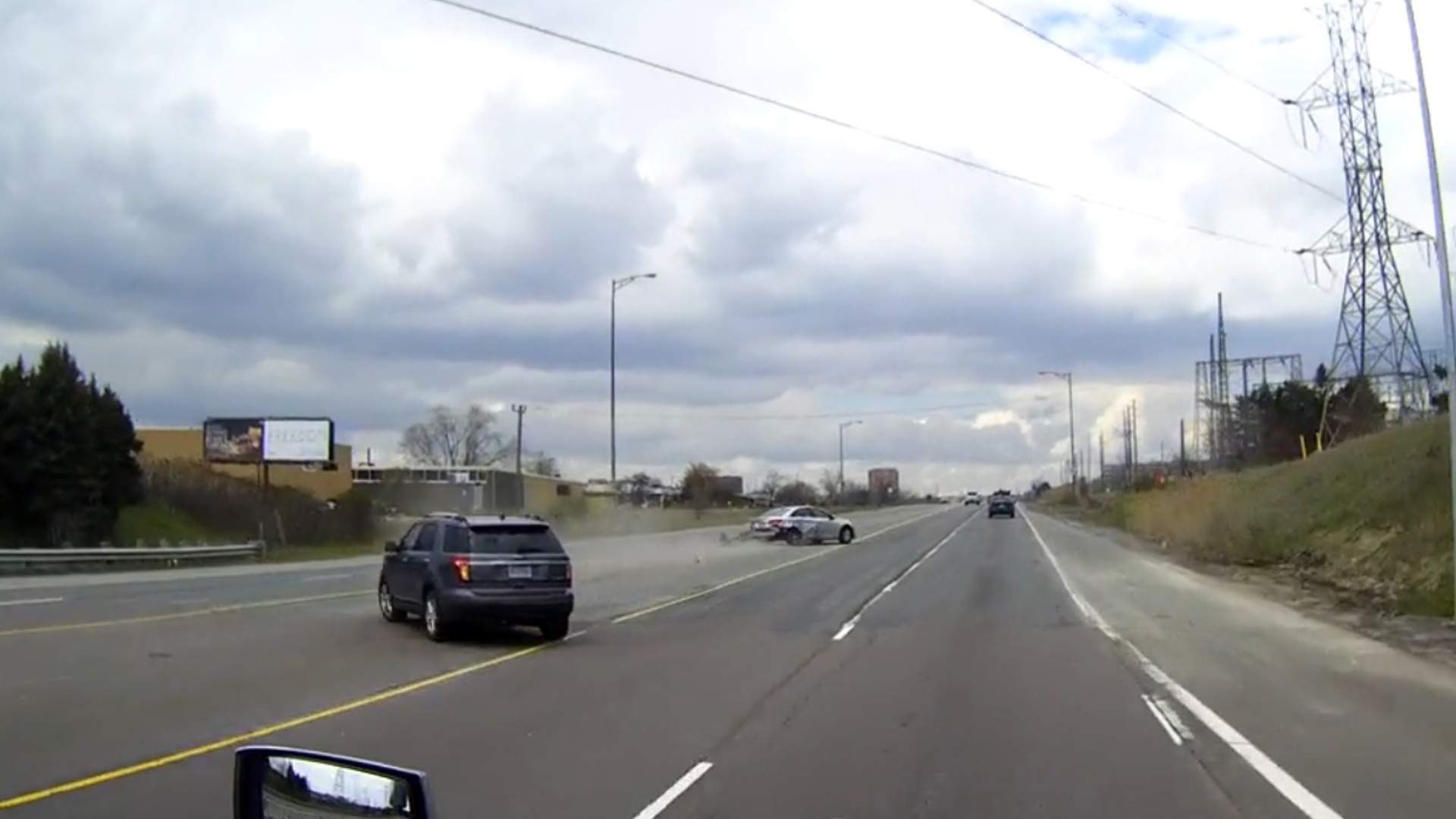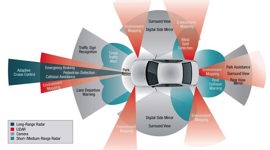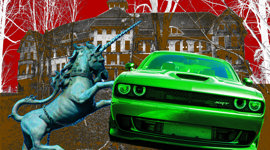There are two options for the drive on this, the final leg of the Ford Explorer 25-year Anniversary “Explore More” tour. One loop of some 250 km north to the Rio Del Grande Norte National Monument, with a few spots earmarked on the way, and one smaller loop that cuts through the Los Alamos National Park and is packed with additional touristy things. Both end back at our hotel in Tamaya, New Mexico.
My poor co-driver didn’t know what hit him.
“We’re doing the big loop,” I told him. “Nobody else will, and besides, I like driving.”
“Okay, but we’ll miss Los Alamos,” he pointed out.
“No we won’t.”
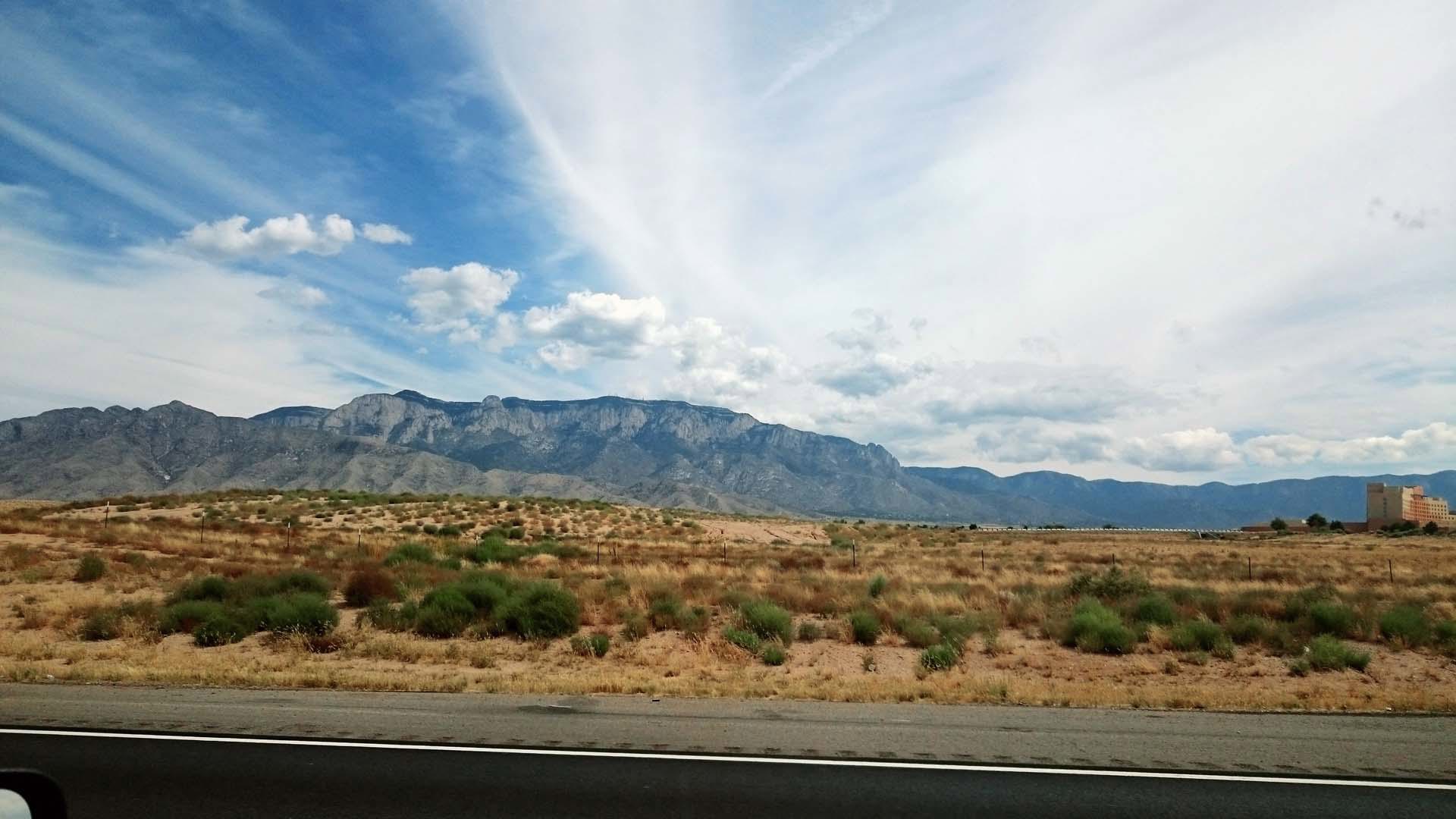
I had a plan fuelled by my own memories of childhood road trips. For our family they always fit the same pattern: distance, ambition and value were key components – we had to go as far as we could, as quickly as we could, usually with the goal of seeing something that was cooler in guide books than it was in real life. Then we’d pile into the car again and head home, hoping to make up for the inevitable disappointment of whatever funny-shaped rock we’d gone to look at along the way.
We would leave at 7 am – the earliest they’d let us. We were going to go big. I was going to test my co-driver’s patience as my Dad had tested mine. And dagnammit he was going to damn well enjoy it! This is the sort of adventure I imagine families still go on, and the sort they take cars exactly like this to do it in.
The occasion, as I mentioned was the 25th anniversary of the Ford Explorer. Some seven million of these SUVs have been sold worldwide in that time and to celebrate Ford had organized an epic, six-leg, six-week adventure complete with its own hashtag #ExploreMore (because Twitter). It was also an opportune time for Ford to introduce the new highest trim level for their stalwart SUV – the Platinum trim.
But mostly, this was a rare opportunity to be turned loose in a press car. No pre-marked route in the GPS, no road book to follow, just a big map with a few suggested things for us to visit and an entire day in a fully loaded Explorer.
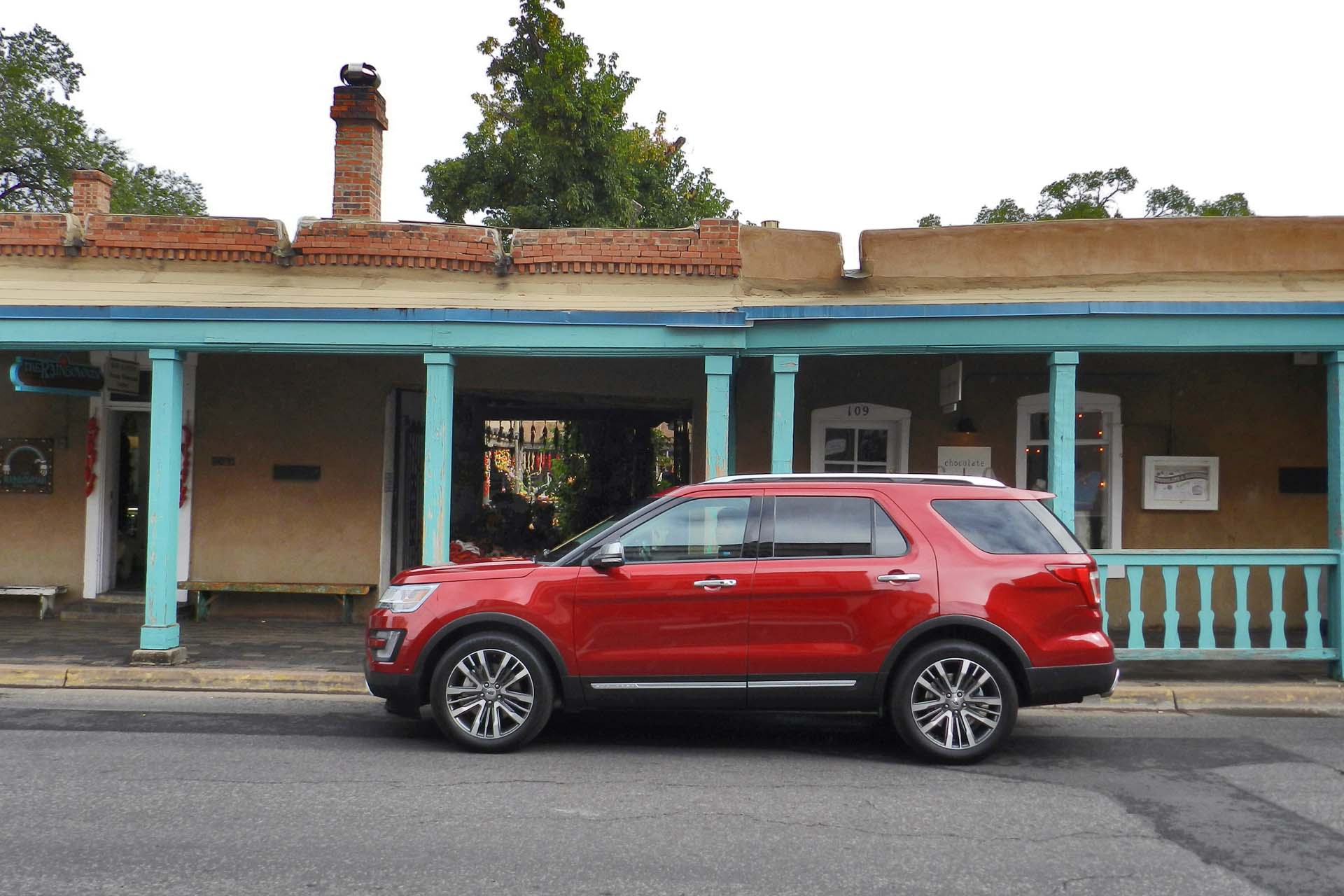
Having ascertained that the route south to Albuquerque was basically just a city highway run with traffic and little else, we plotted a course straight north through Madrid, Santa Fe, around the outside of the San Juan National Forest and up to Taos, before branching out on a limb to the Rio Del Grande Norte National Monument.
I toyed with the idea of going the long way through Las Vegas – but decided that was folly on a number of levels.
On the way back from the Rio Norte I would try to take us through Los Alamos, the national park famous for being the home of the atomic bomb project. Why? Because it made the trip longer. And because the tour guide bloke who gave our presentation said we wouldn’t be able to in the time given. Challenge: Accepted.
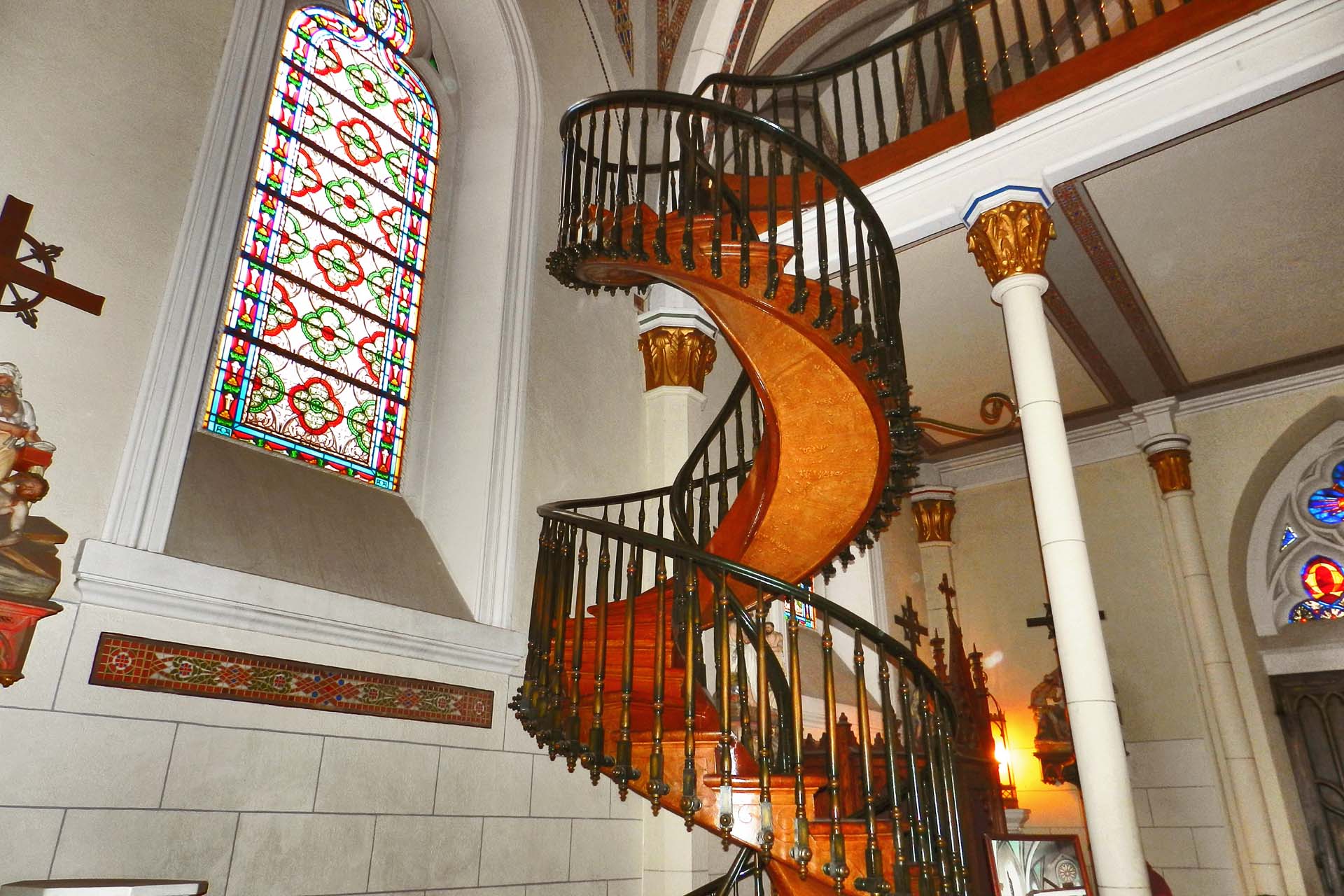
There was a cluster of little tourist traps in Santa Fe and it made sense for us to stop by a couple of those on the way through. Our first stop: the Loretto Chapel Spiral Staircase. This was allegedly a “miraculous staircase” that had been “perplexing experts for well over a century” so I was intrigued. To get to it, we followed the GPS – easily programmable on the Sync system (which is still the old one here) through this small little town. It’s a pleasant mix of old style mud-brick buildings, clearly modern but with an old-school façade in a village dominated by sculptures and a few chapels. The Loretto Chapel is small, and a $3 donation gets you access to the “miraculous” staircase. The detour to get there had taken us 40 minutes and I was unimpressed. For the guidebook folk, look at the picture on the internet (or here in this article) and then skip this one. The stairs are cool, but no more impressive in person than in photos – in fact, less so. Yes the two twists are unsupported except at the top, but that’s hardly a miracle.
Grumbling at the wasted time, we set course for Camel Rock. We stopped on our way to pick up some road trip mascots. Skeletor and Fluttershy were our hitchhikers, there to keep me company when my co-driver fell asleep, which was often.
How quiet is the interior of a 2016 Ford Explorer Platinum? Quiet enough for him to sleep and quiet enough for me to hear every lilting note of his whistles and snores.
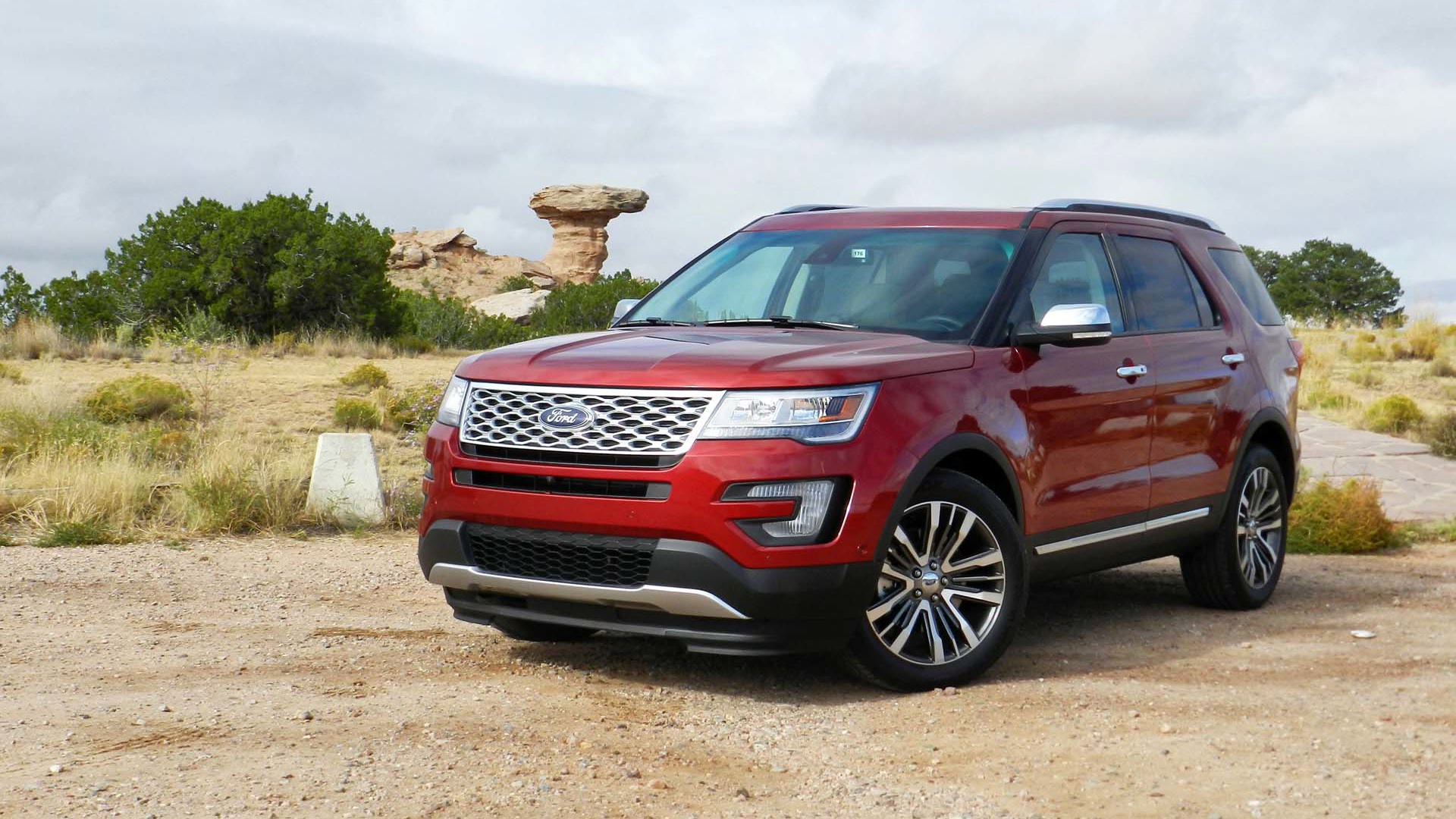
Camel Rock was more impressive than the staircase. As the name suggests, the rock looks exactly like a resting camel lying on the floor, its head perched precariously on its neck staring languidly out into the distance. There was no time to consider what this camel may have been thinking though – we had a big-arse bridge to see – eventually.
First step was the Taos Pueblo. This is said to be the oldest continuously inhabited community in the USA. The pueblo is a village of multiple unique dwellings made from adobe – a water, mud and straw mixture that is thick and hardened. The publicly accessible area was built sometime between 1,000 and 1,450 AD but much of the pueblo is off-limits, including the Blue Lake – a nearby waterhole of spiritual significance that is only accessible by pueblo members.
The pueblo is intriguing but we’re wary of snapping photos and aggravating people. Understandably the signage around the pueblo is foreboding – this land has been reclaimed by the people but the memory of its theft is fresh.
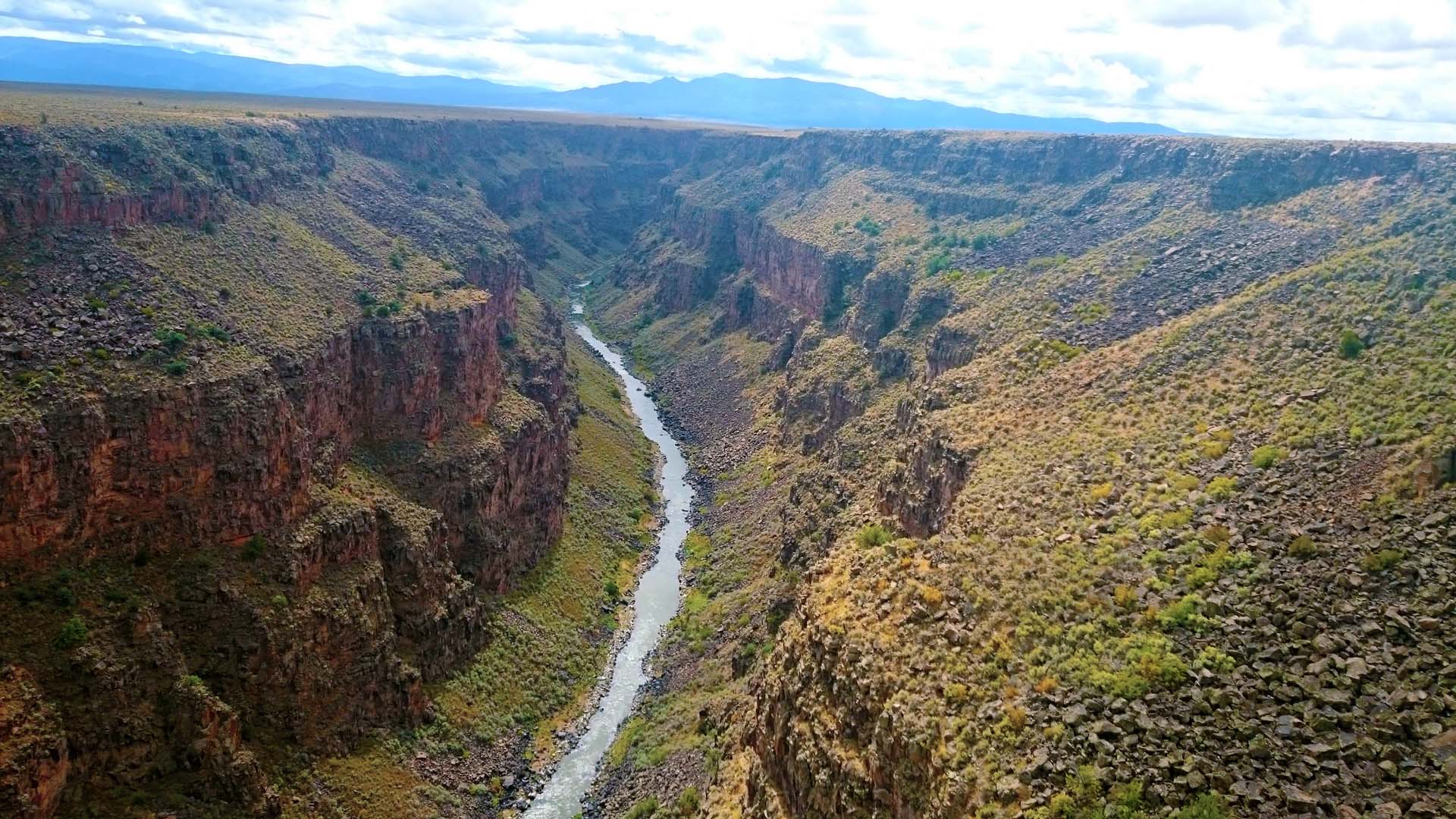
From the pueblo we keep heading north to the Rio Grande Gorge bridge. The arch spans a deep chasm with a river rushing through its valley that looks like a stream from this height. The bridge itself is amazing, but the view from the platform out along the gorge is breathtaking. Vast natural structures have a way of humbling you.
My poor passenger thought we had reached our goal and were headed home – the look on his face when I again turned north was priceless.
I flashed back to my youth. “Are we there yet?!”
No.
People in the USA like to talk a lot about the vastness and size of their land. I think it’s something that people from big countries always enjoy. In the US though, you rarely get to really feel that distance. The towns are too many and too close; the highways too homogeneous. You never go more than five minutes without seeing another car, a building, or some obnoxious sign of human habitation. Canada is similar along the southern corridor but more vast out north. Australia is different.
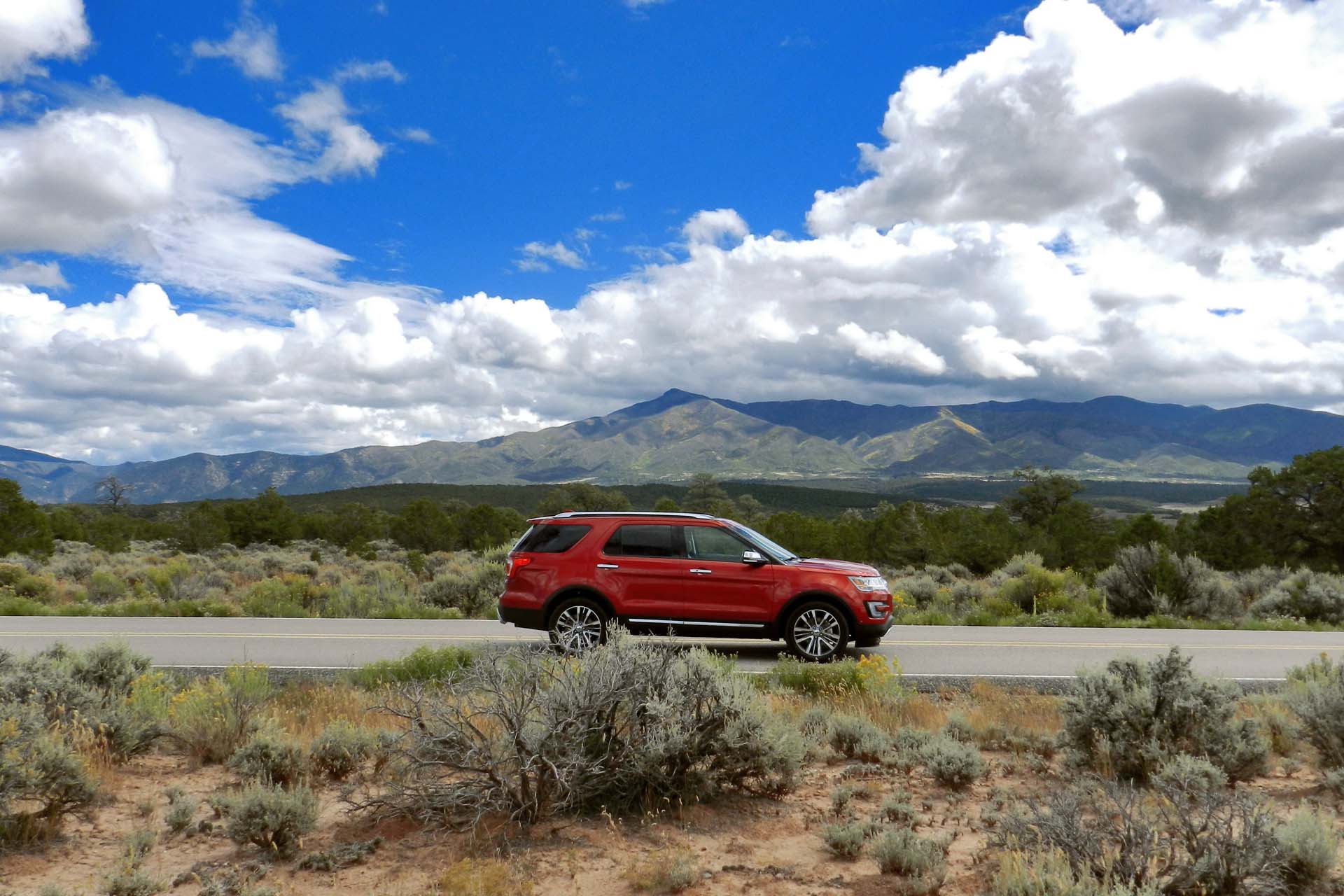
I had chosen this trip because I hungered for the sense of space that defined my childhood. Drives where my Dad and I would see nobody nor any building for an hour or more at a time. I wanted to feel space.
I hoped I’d find that on the way to this monument thing. I had also misinterpreted the guide book.
A national monument is not a “monument” the way I think of one. In the US, a national monument can also be a national park. The Rio Grande del Norte National Monument is a sprawling natural reserve, a vast open plain that surrounds the Rio Grande del Norte gorge.
Turning away from the main highway I find myself, for the first time, driving out over a ribbon of road with no clear destination. For the first time, we’re the only car within eyesight, and the only human structure to be seen is the fencing on some of the outcrop lookouts.
Driving through the plain I feel immense distance. The vastness of the monument is astounding. Here, the Explorer and I are alone. My co-driver is sleeping. I want to wake him up, to show him this natural splendour, but I also want to be alone.
The road cuts left suddenly and I chase the steering to keep up with the turn – my co-driver wakes himself up.
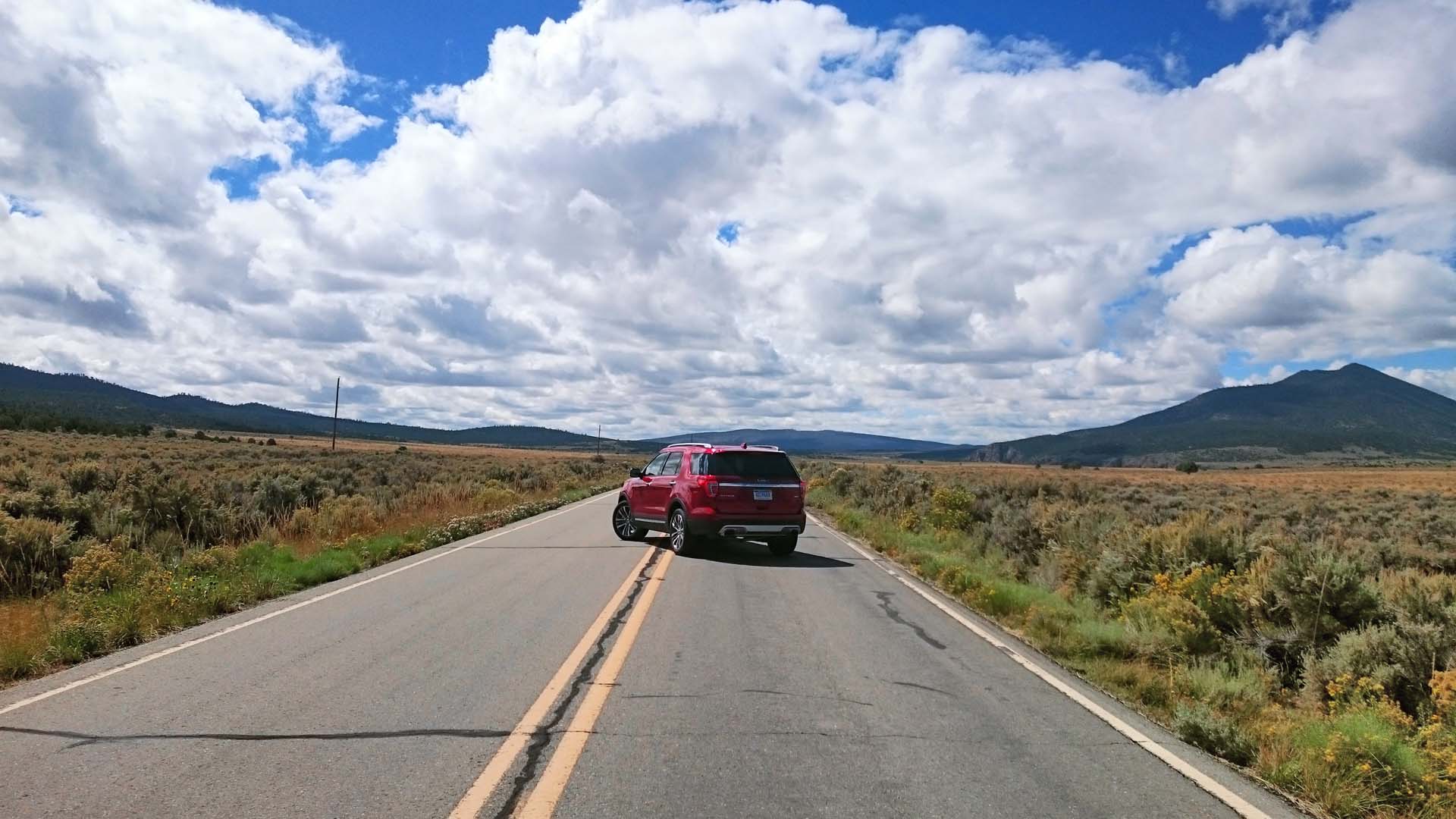
“Check this out! Isn’t it amazing?!”
No response.
I feel a surge of empathy for my old man, trying to share his excitement with me all those years ago. “It’s all brown,” I used to mutter to him. I miss brown.
The Explorer is the exact sort of car my family probably should have had back then. Not the Toyota Hiace van into which we’d bolted homemade third-row seats. All told we were six, my three younger sisters, my Mum, my Dad and me.
The Explorer would seat all of us, two-by-two-by-two. There’s even room in the back for all our stuff, though back then our “stuff” consisted of a change of clothes (one between the four of us) on hand in case one of us wet our pants, and a bag full of dry, plain crackers and a few apples.
Sometimes a car has an underlying ethos that’s not the one you first expect. The 2016 Ford Explorer is one of those cars, especially now in Platinum trim. On first glance, the car is as its name suggests – it’s for exploring.
But it’s not really.
The new trim is a calculated move. On one hand it helps Ford grow its average transaction price, on the other it helps fill a gap in terms of luxury and feature content that it feels customers are hungry for. But there’s another consequence and it speaks a lot to Ford’s focus: Convenience.
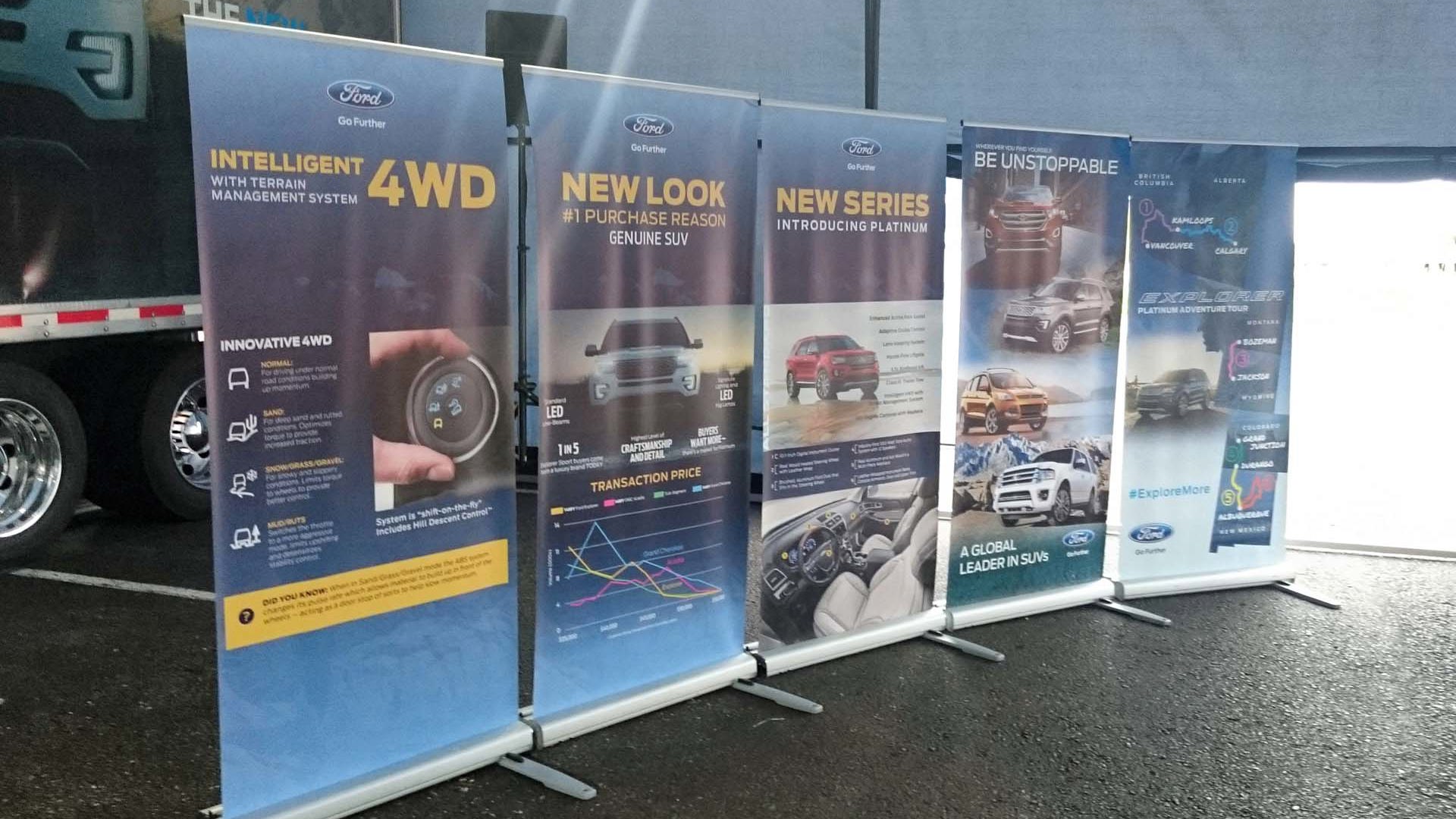
Ford says its aim is to empower its customers. They know who buys this car – mid-to-large families. Rigs like this go to people who want the space of a large SUV and the commanding driving position, but who don’t want it to be hard to manage.
This is immediately apparent as Ford shuffles us through their list of features. Almost everything added to this new trim is designed to make the Explorer easier to drive and live with. Some features are available in lower trims, but the point is the same – ease of use.
There’s the tailgate for example. A “wave-your-foot” activated unit that opens up whenever you do the hokey-pokey close by.
Another bugbear of SUV driving suburbanites is parking – no matter, the Explorer will do that for you if you like, even parallel parking. There’s lane-keep assist, adaptive cruise control, blind-spot detection and parking aids plus a back-up camera. Even the third-row power folds. The steering is light and easy but not too vague, the engine more than sufficient. Everything that’s hard to do, the Explorer makes easier in a very calculated way.
Even the seats are well-balanced. They’re supportive without being intrusive, wide without being wallowy. I am completely unfazed as the miles roll by underneath.
It’s a thought that dawns on me again later in the day. At some 500 km into the trip the only thing that hints at the size of the journey is the foreboding orange warning in the dashboard: Low fuel. There had been another sign earlier in the day flashing up during one of my colleague’s stints “Drive Alert, Rest Suggested”, but that was in response to our lane wandering as we repeatedly peeked out from behind a slow-moving truck.
This warning was more foreboding. We were halfway home, deep in the Los Alamos national park. We’d crossed through the Valles Caldera – a 22-km wide volcanic depression – and climbed the Jemez Mountain, but now we were at least 17 miles from the nearest petrol, and the dial read “0 Miles Range”. That’s a long walk.
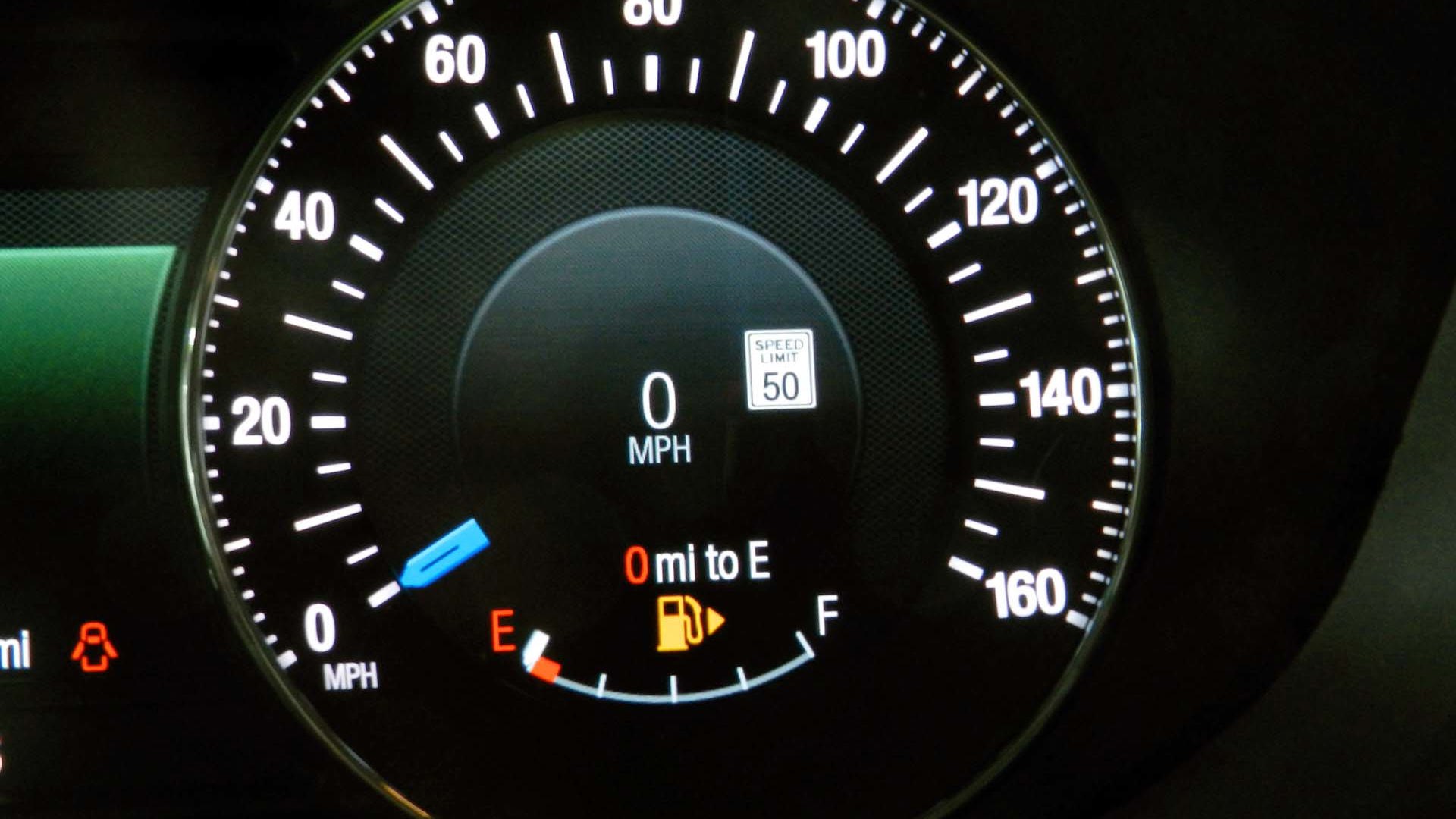
How’d we get to this point? A GPS point of interest lookup said the next petrol on our route was 24 miles from us when we were 18 miles from the Jemez Falls. At that point we had 40 miles of range. No drama. That 24 was “as the crow flies”. I really wish POI searches in GPS systems wouldn’t do that.
By the time we scaled the mountain and began our descent towards civilization the actual road distance was far greater.
It got worse. A sudden rain storm hit – hard. The roads were littered with streams, we encountered five major washouts. We caught up to one of our colleagues ahead and watched as they crossed door-sill deep floodways. They pulled off briefly but we kept going, not willing to risk stopping with no range left in the tank.
Ahead I saw brake lights. Three cars parked in a queue either side of a floodway. We didn’t want to risk stopping the car and not being able to re-fire it again, and besides, we were in an Explorer. I pulled out from the queue and accelerated toward the rushing waters of the floodway. I wagered it couldn’t be more than a foot and a half deep, but it was running fast. When in doubt, power out.
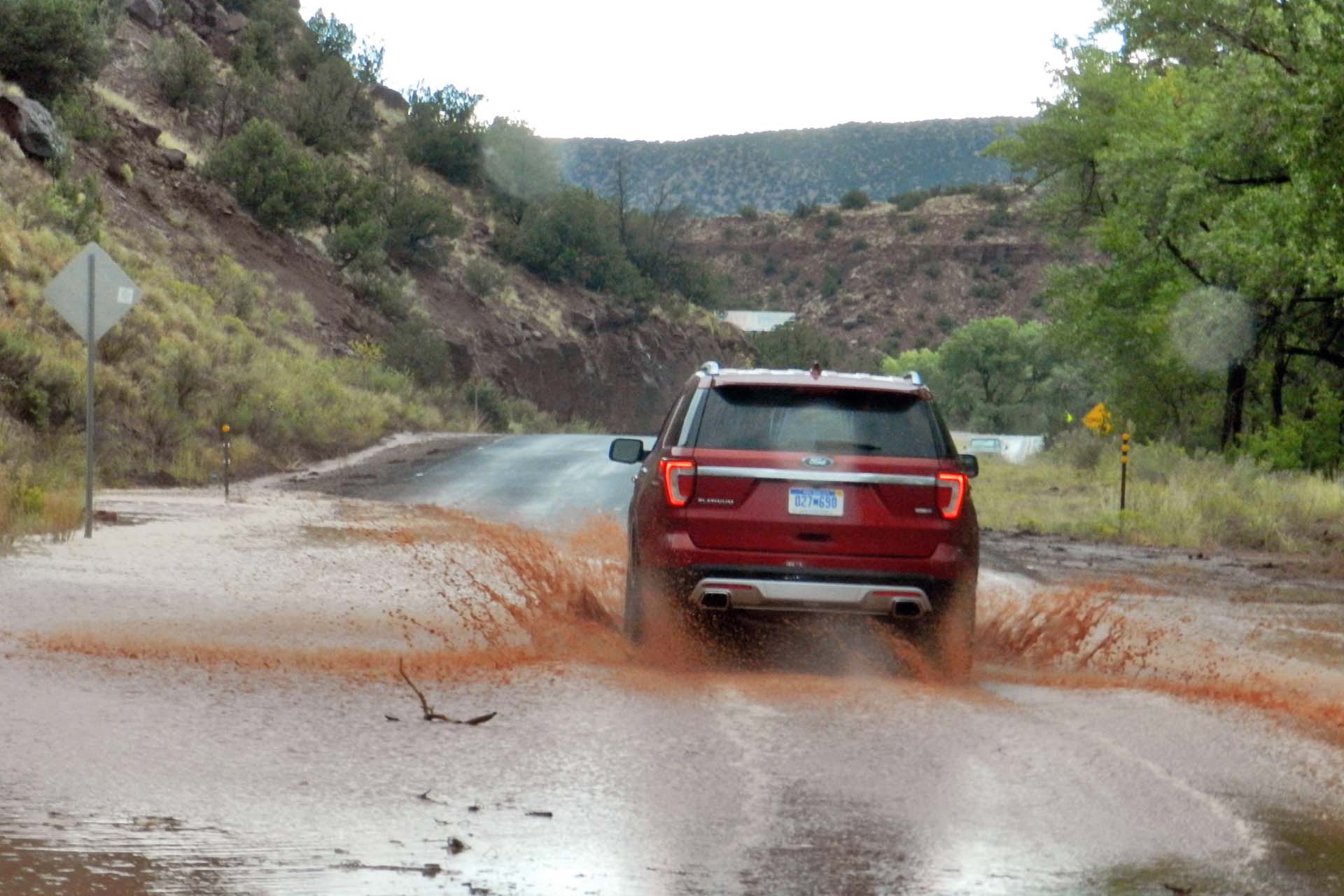
The Explorer his the water with an almighty splash, the side windows blacked out by red, muddy spray as we hurtled through the stream and out the other side – challenge passed. Less than a kilometre down the road we passed a police car escorting a front-end loader toward the floodway. The driver of both vehicles looked surprised to see us.
Finally, after an anxiety-fraught half hour of driving we rolled into the gas station. Seventeen miles after hitting the “0” we had finally found petrol. It was here I learned that the wind-noise reducing door wrap arounds don’t channel water away very well. As soon as we opened the door, the pooled water from the roof soaked the door card. Delirious at having found fuel, I just laughed.
The sun broke as I finished filling up, and the rain had turned the clay of the surrounding area a deep, vibrant red. The result was stunning.
I stopped for one more quick photo but my co-driver was feeling the effects of the stressful past hour. It was time to head back for the hotel.
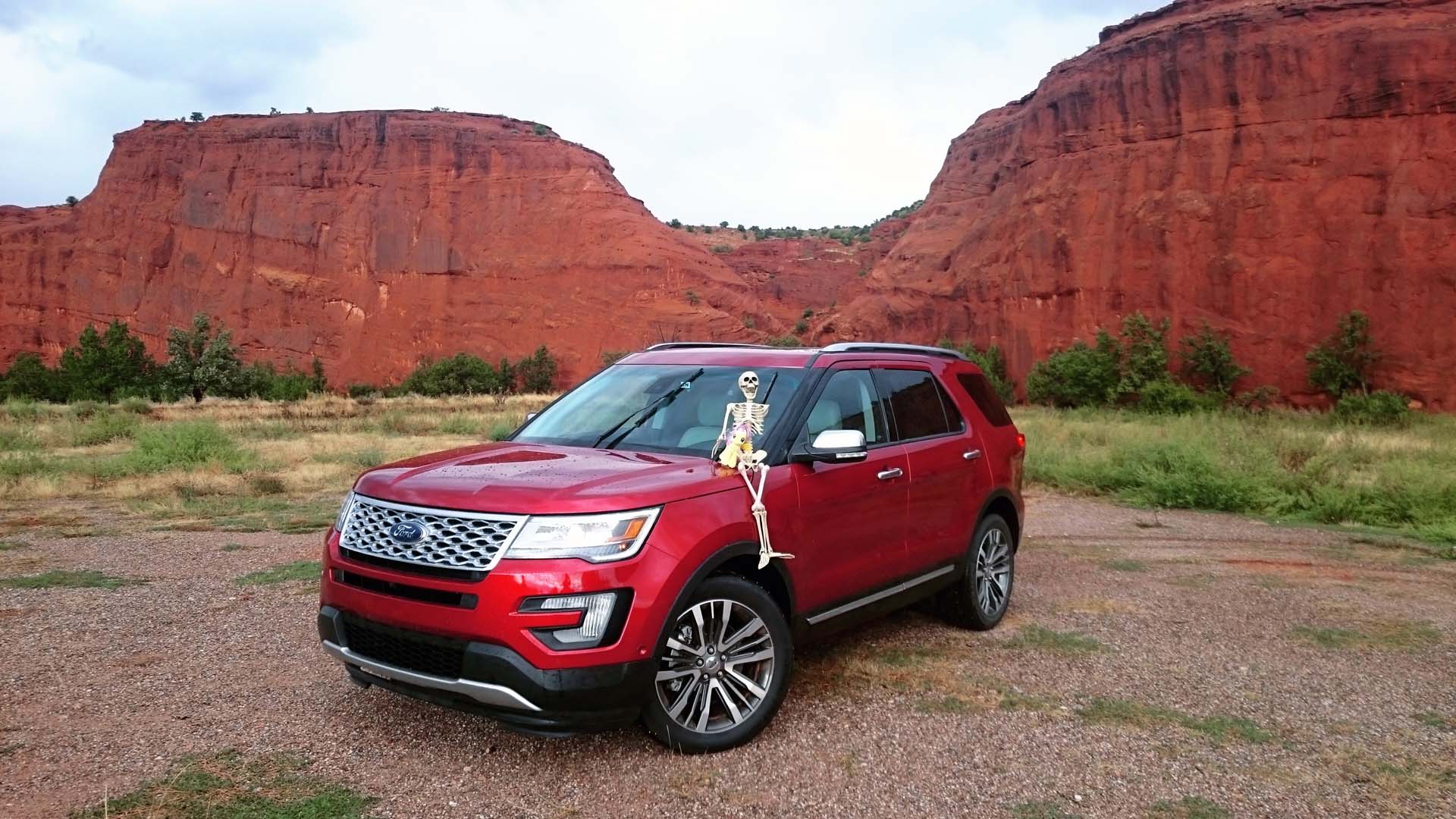
We’d covered enough distance to make my old man proud. The Skeletor mascot had lost an arm, Fluttershy was caked in mud. We’d forded a river, come close to running out of gas and seen almost the entirety of New Mexico. Yet as my colleague clambered out and gathered his things I couldn’t help look back out at the road.
For a moment I considered heading back out. On my own this time. Hell, I felt fresh enough. But my phone had already picked up the wifi connection to the hotel – emails flooded in. The real world called me back.
